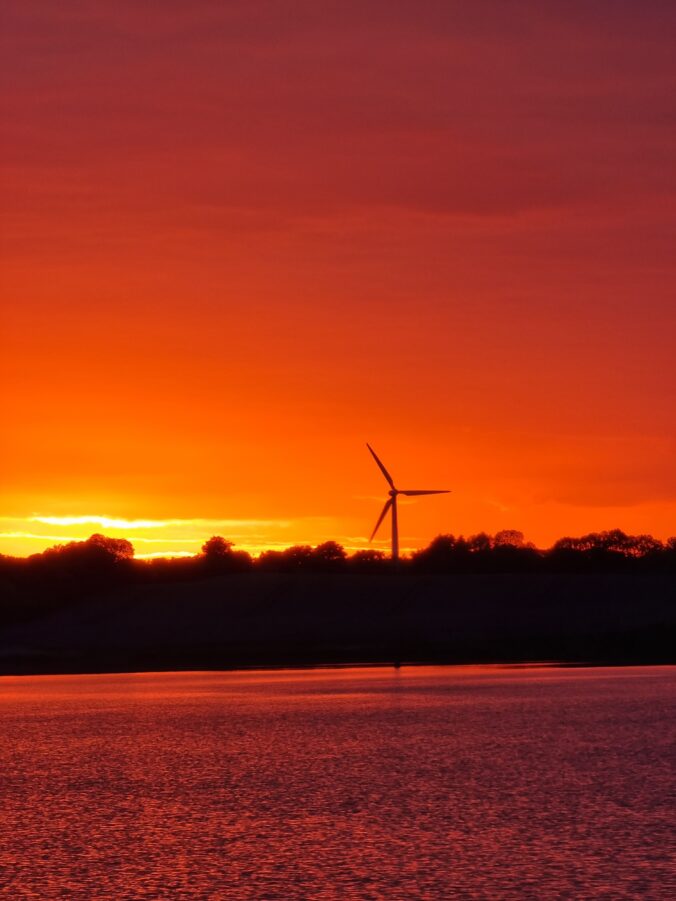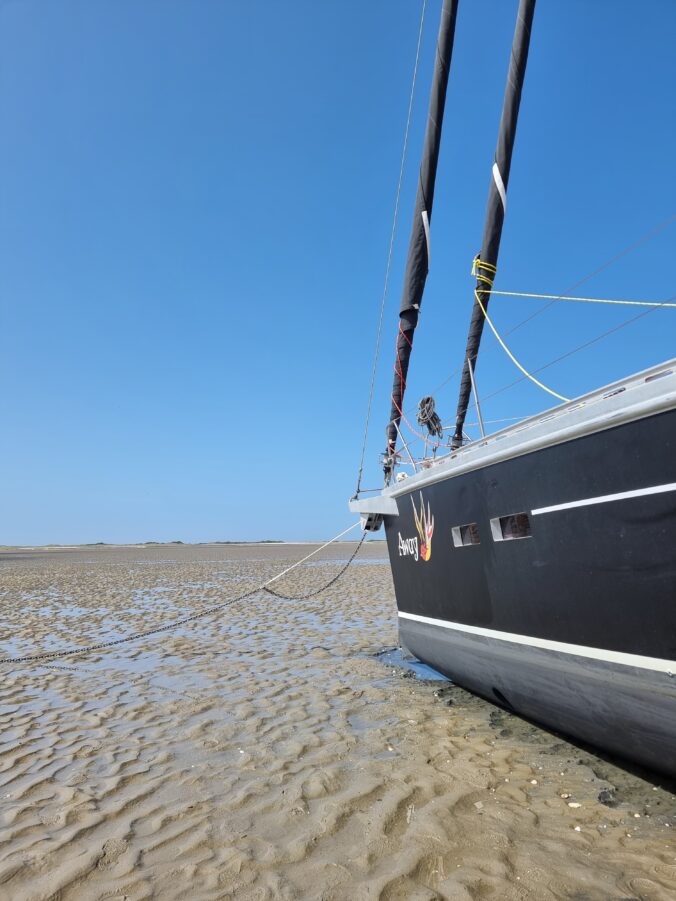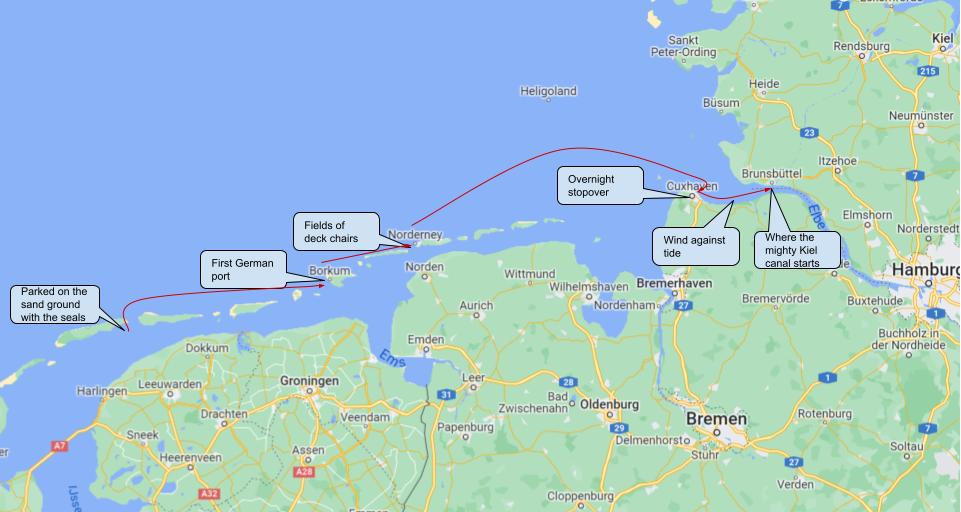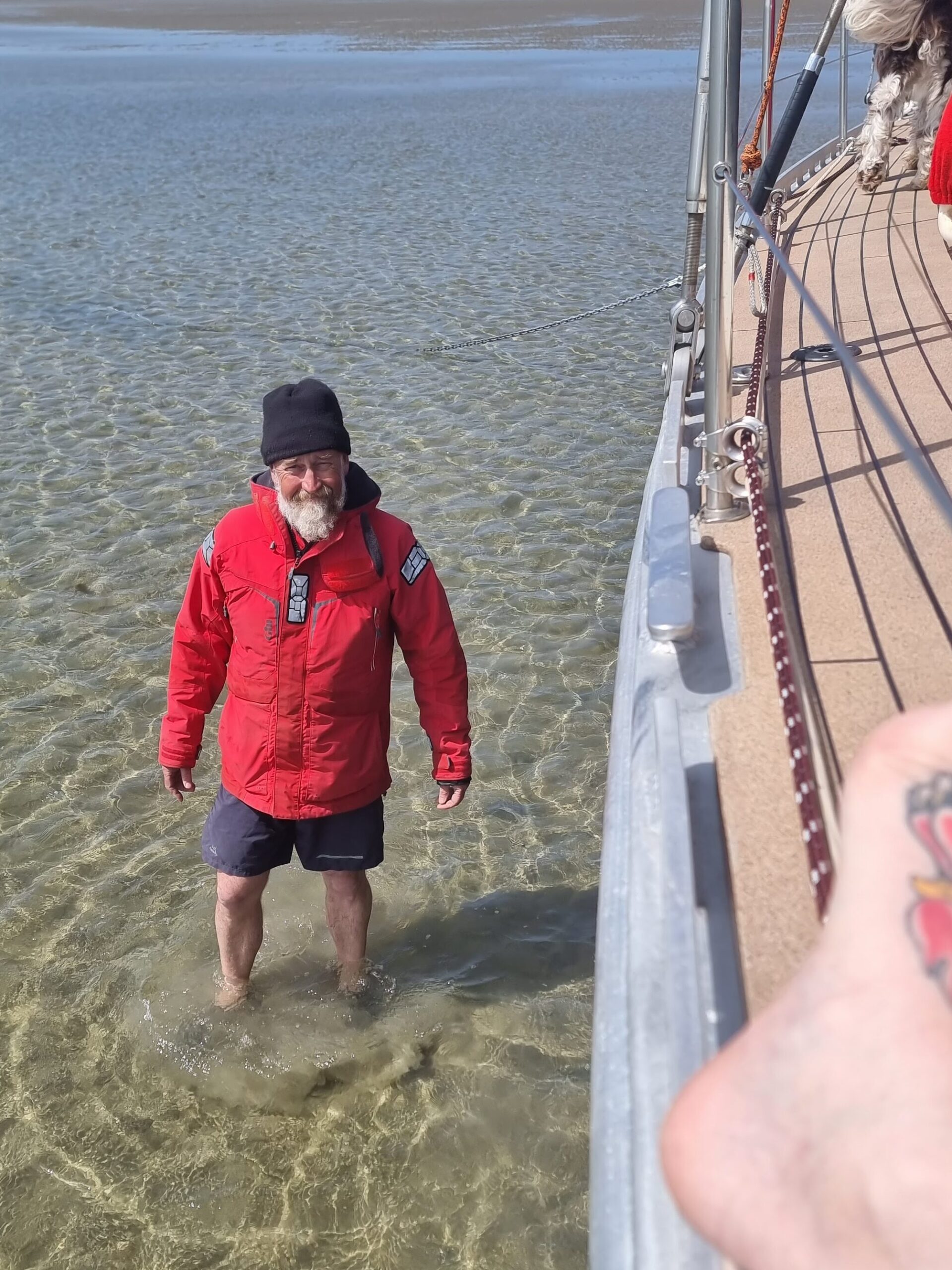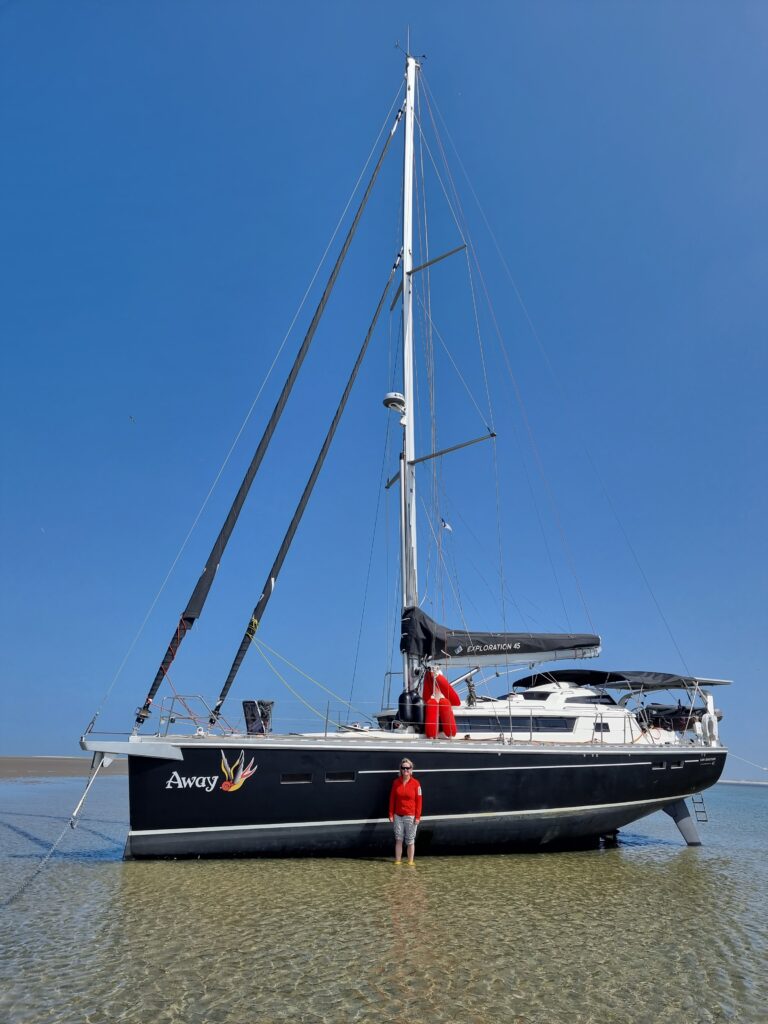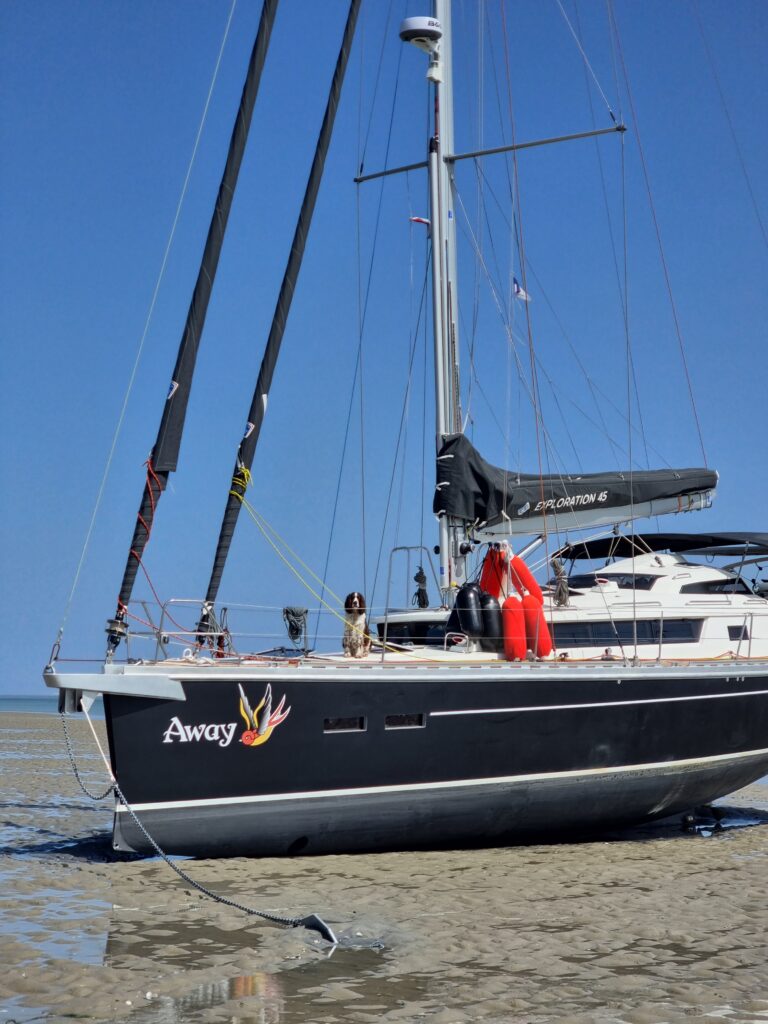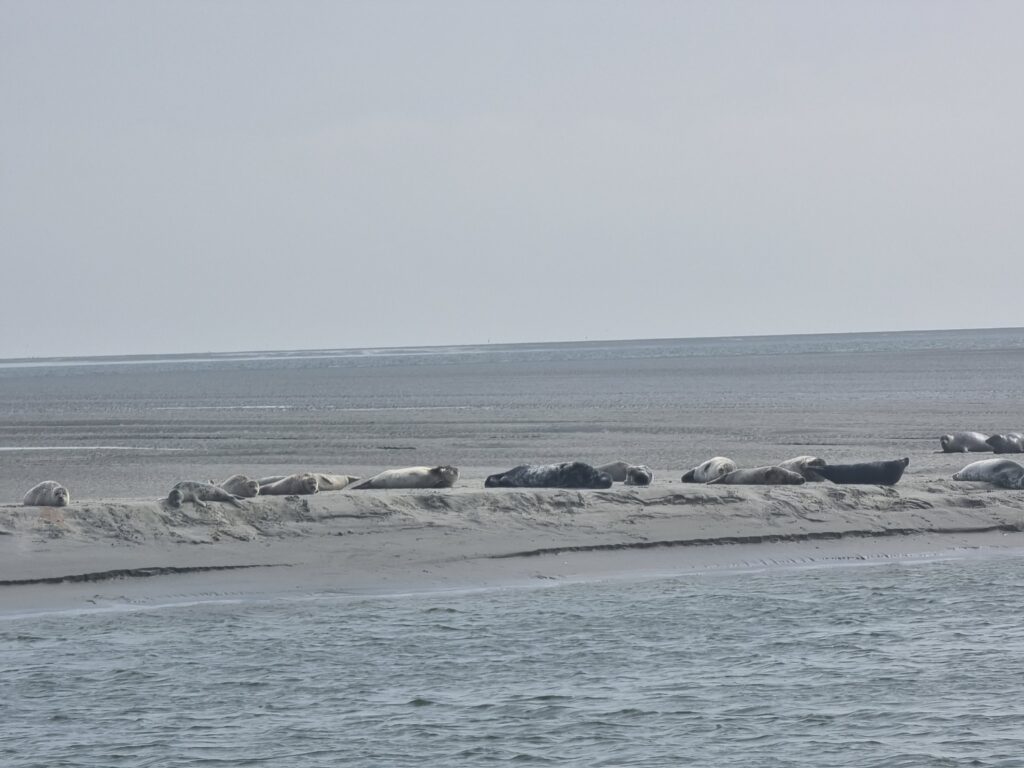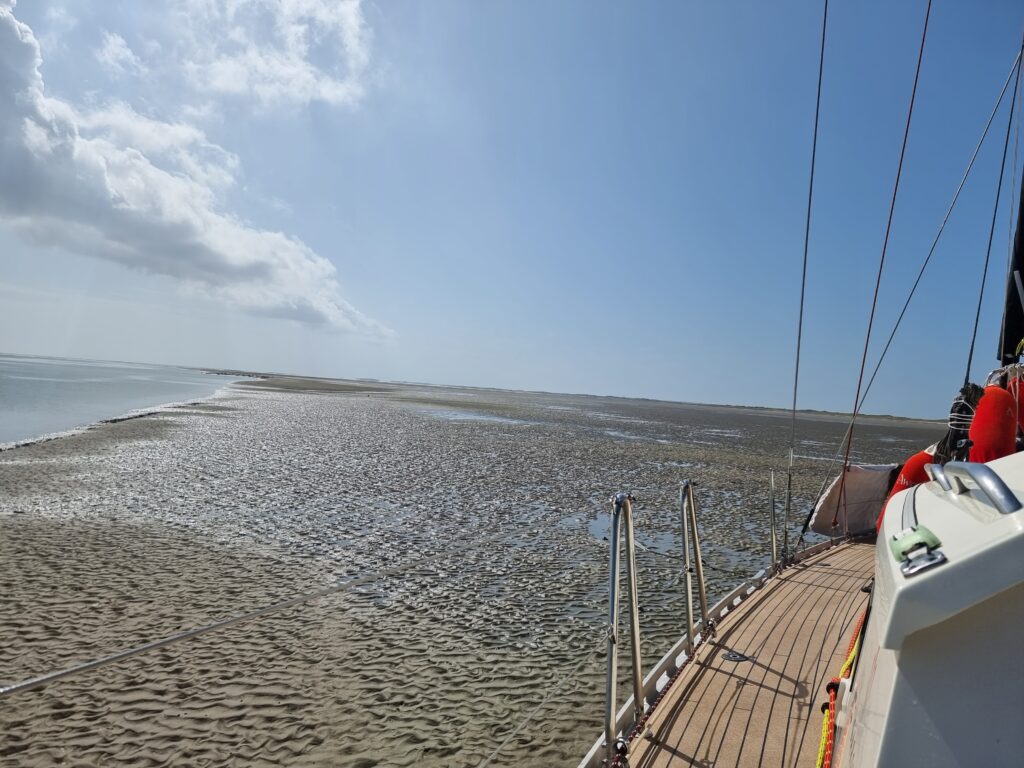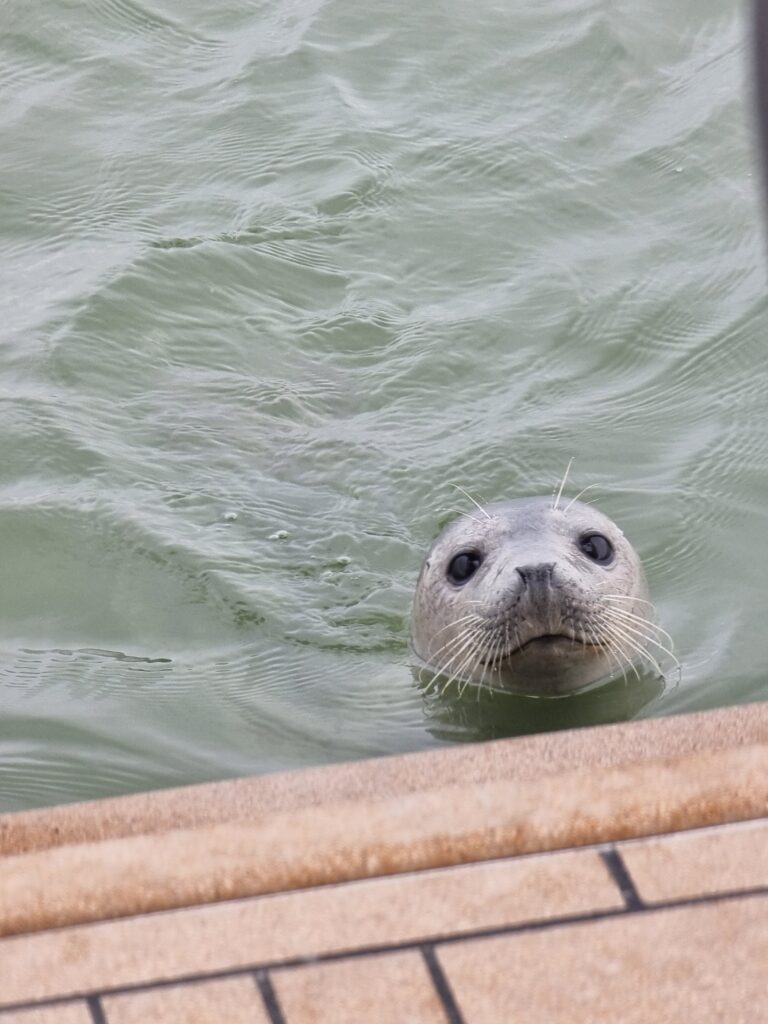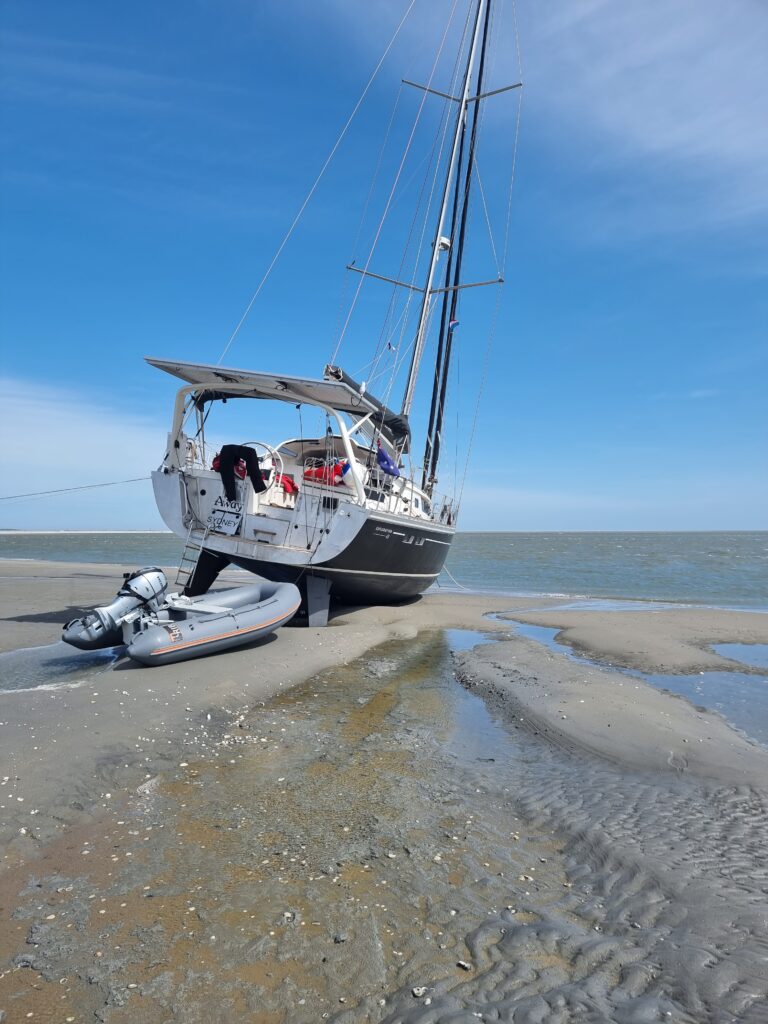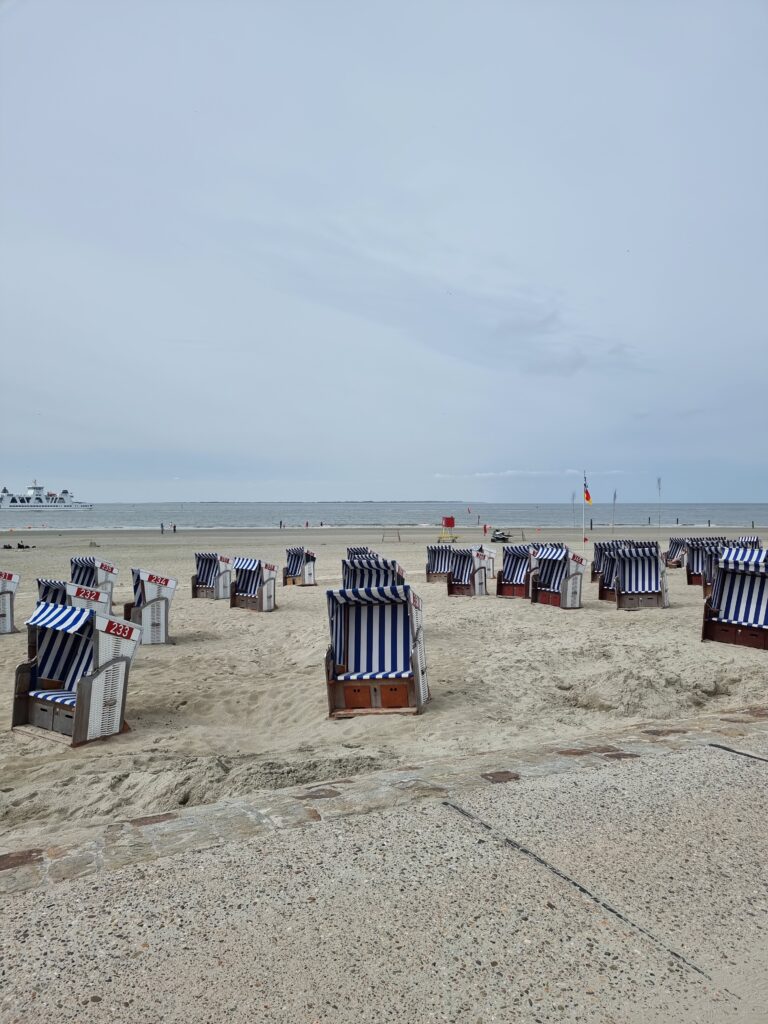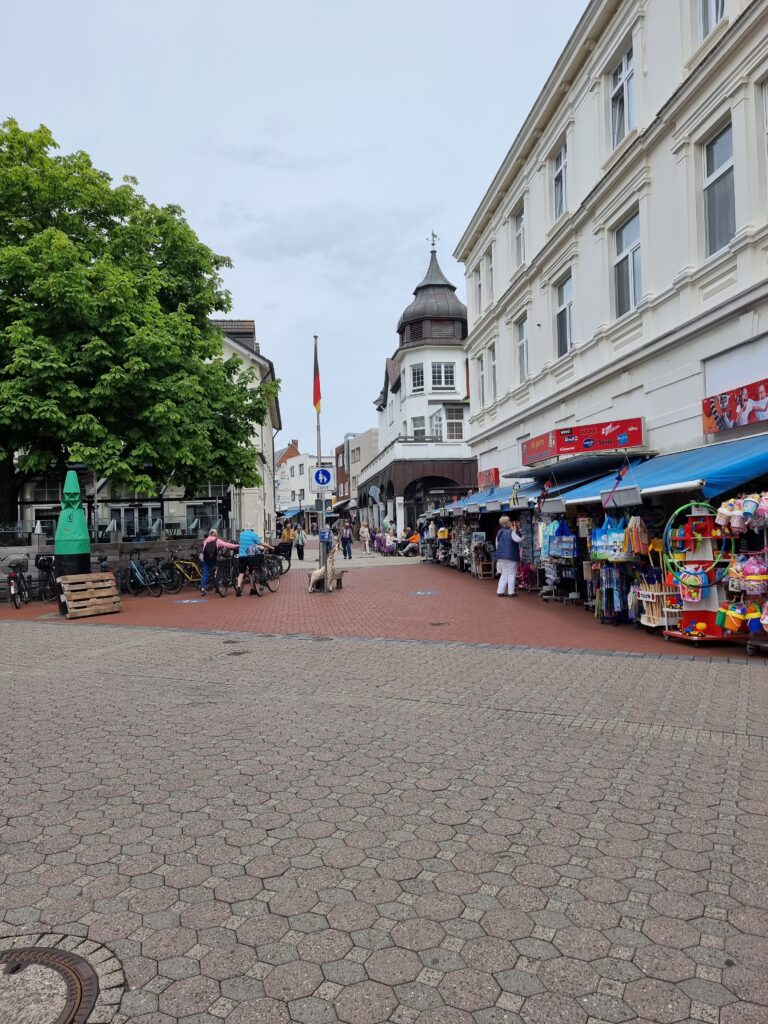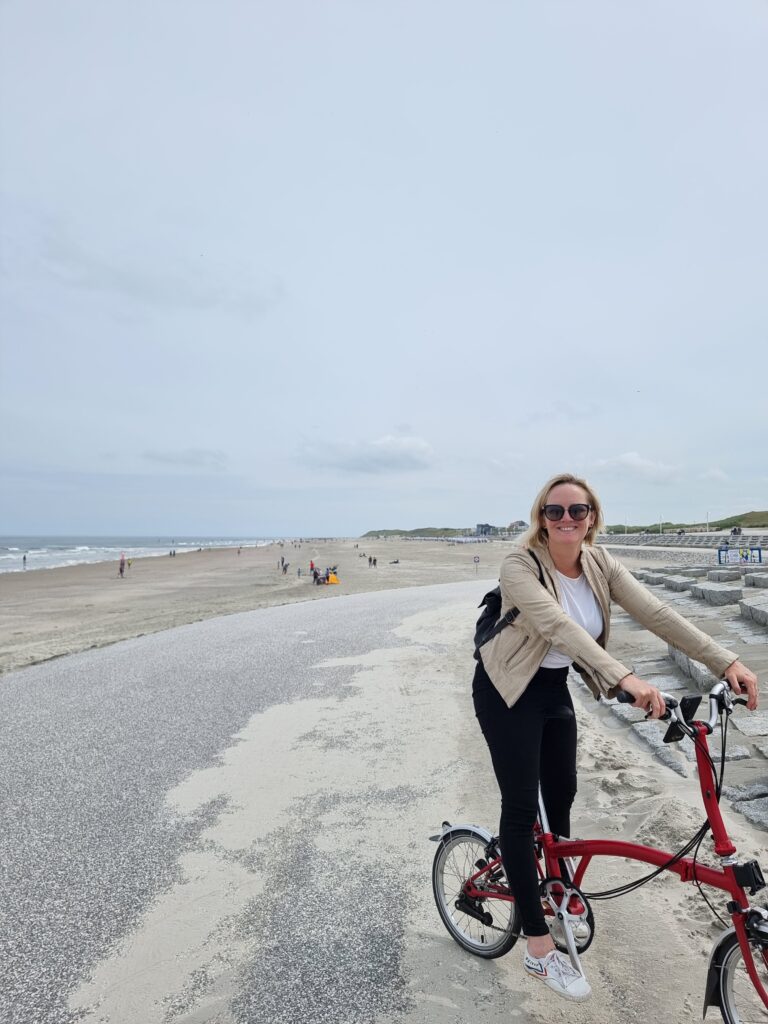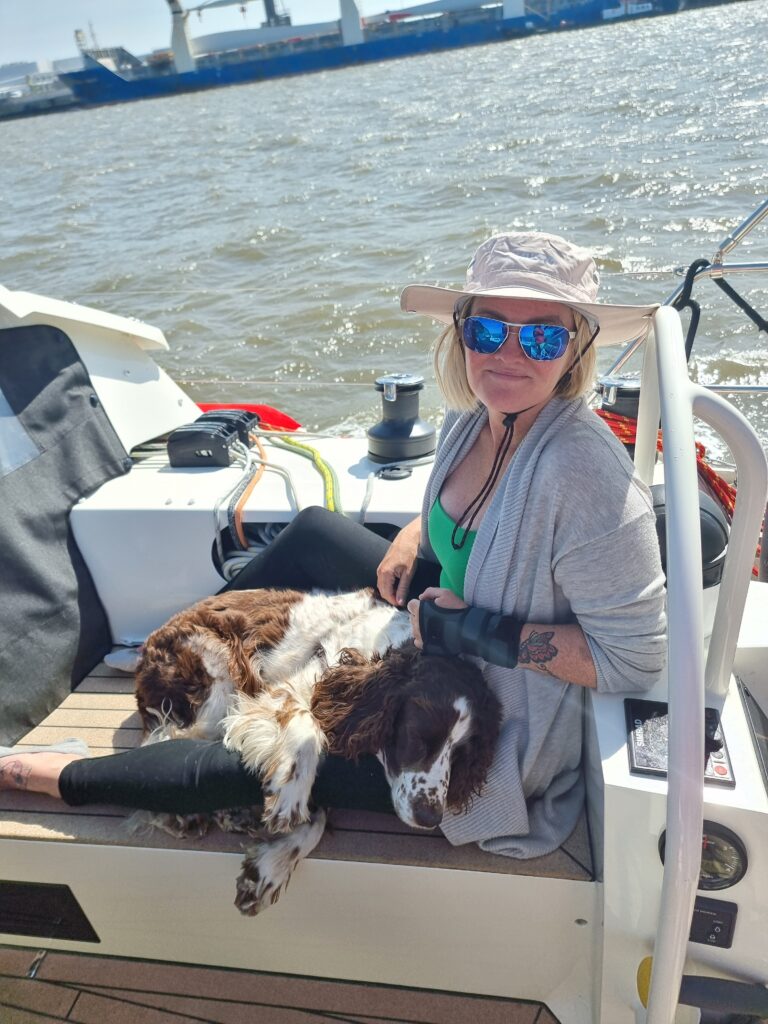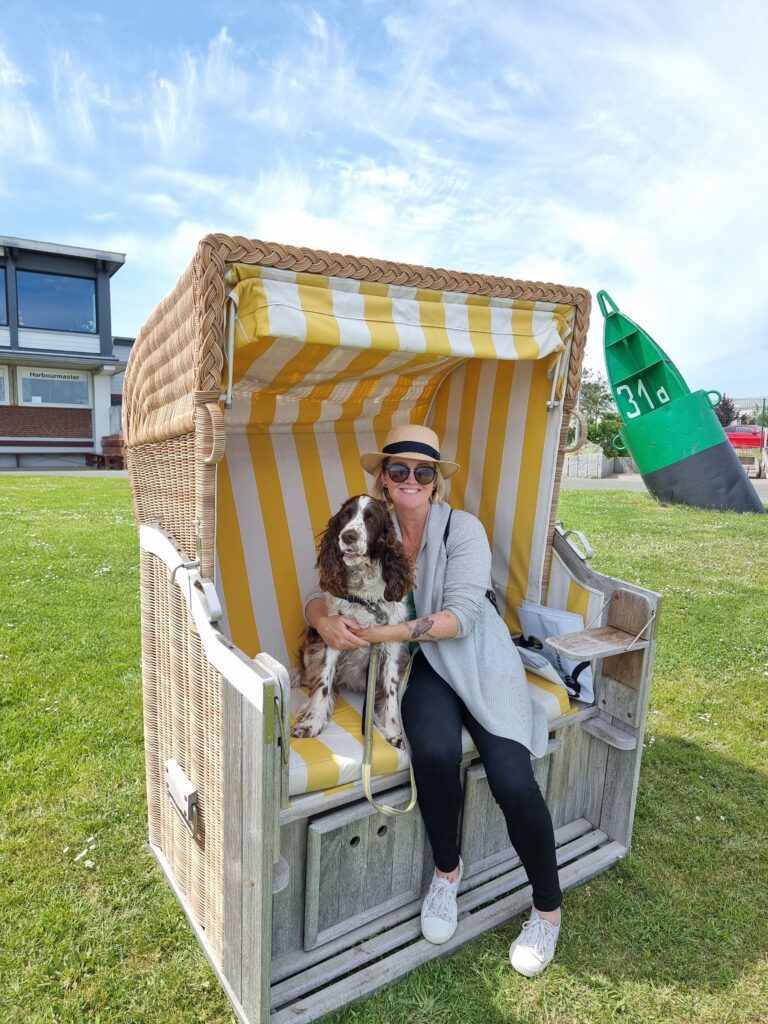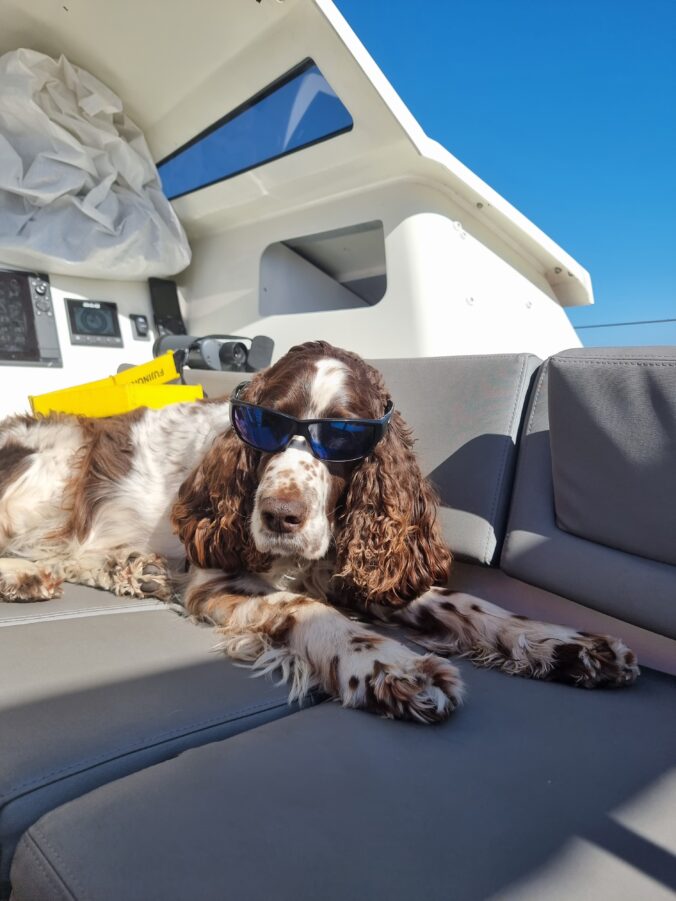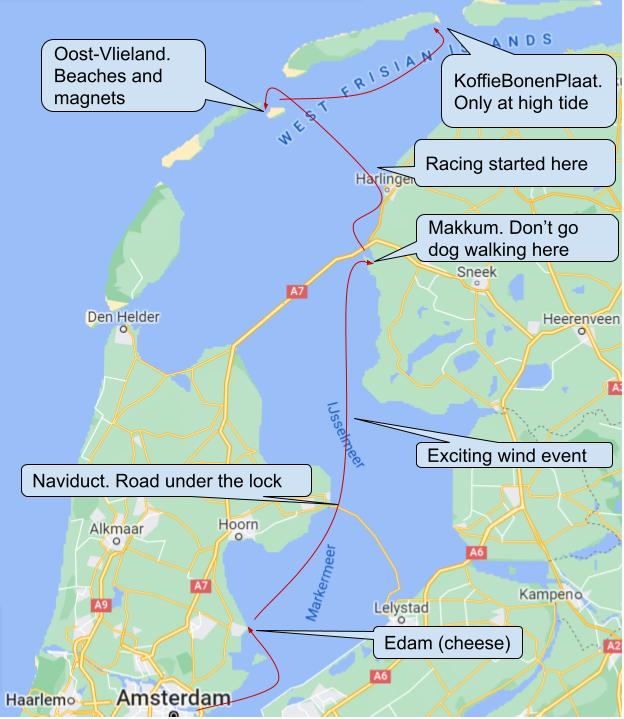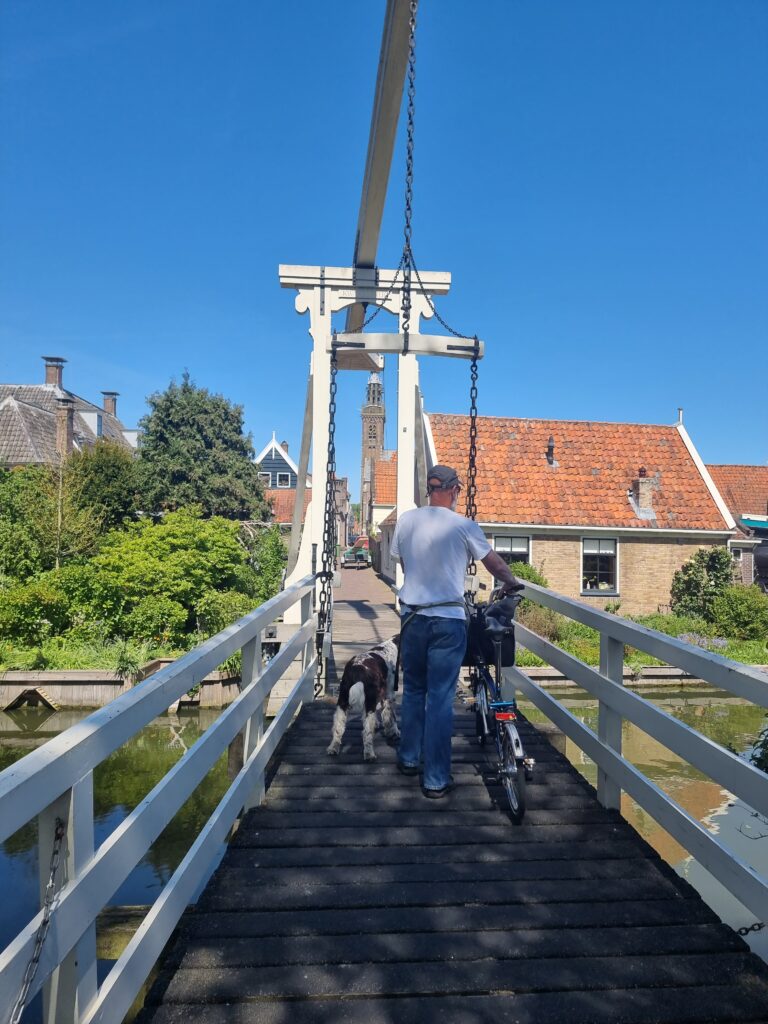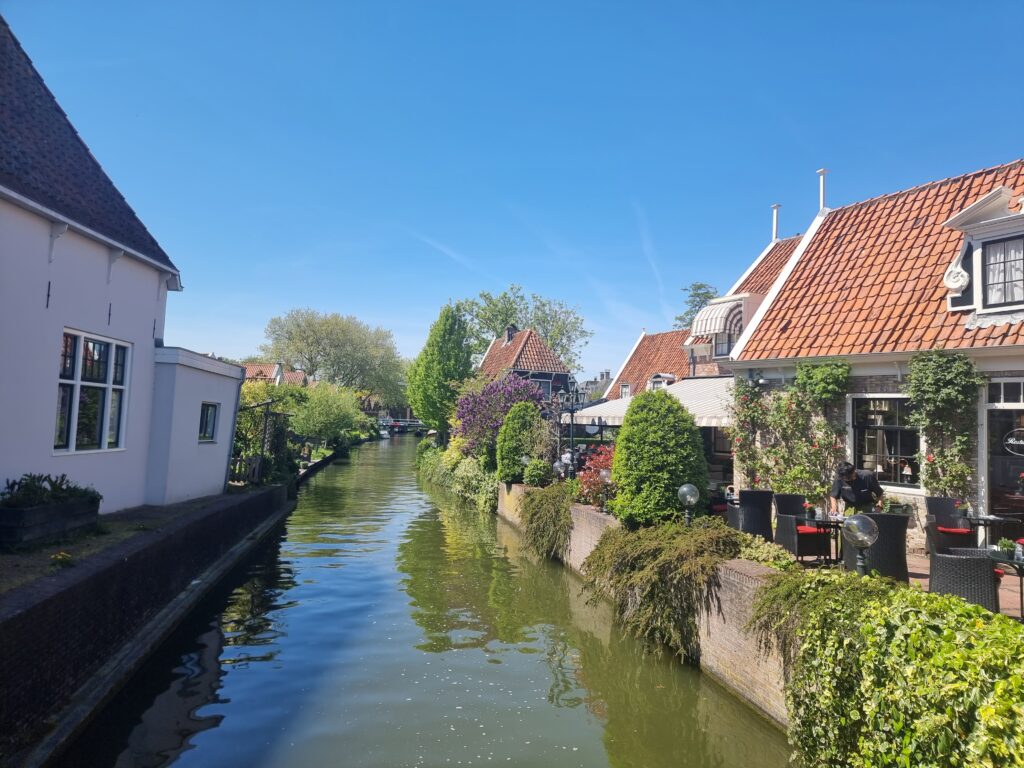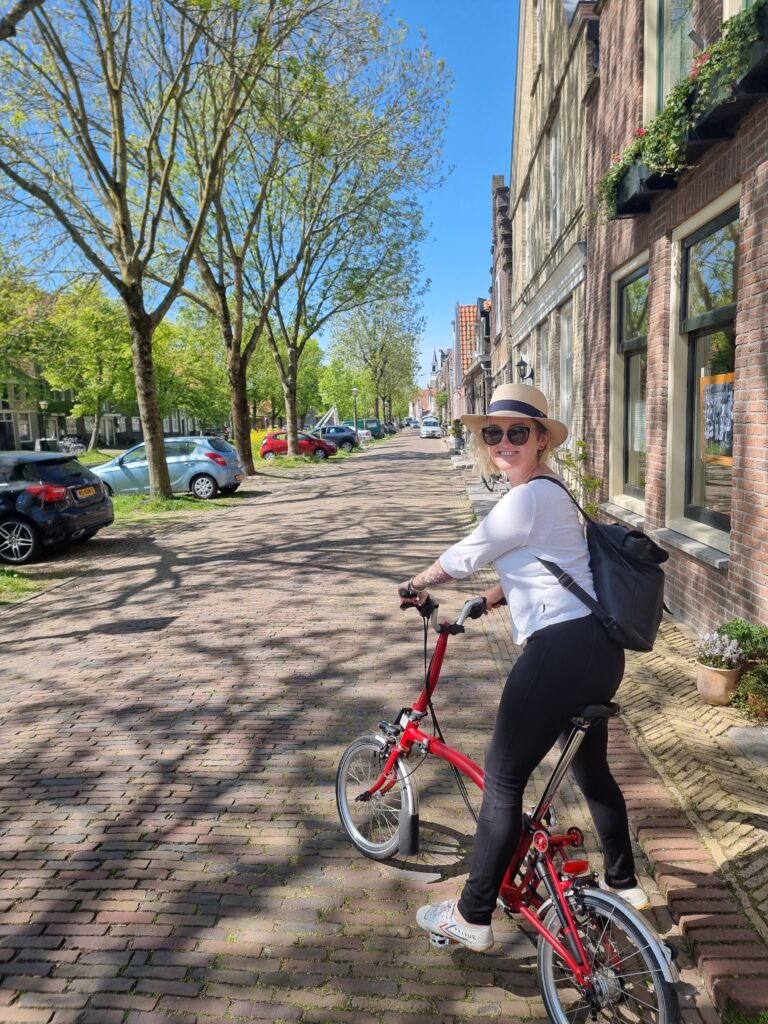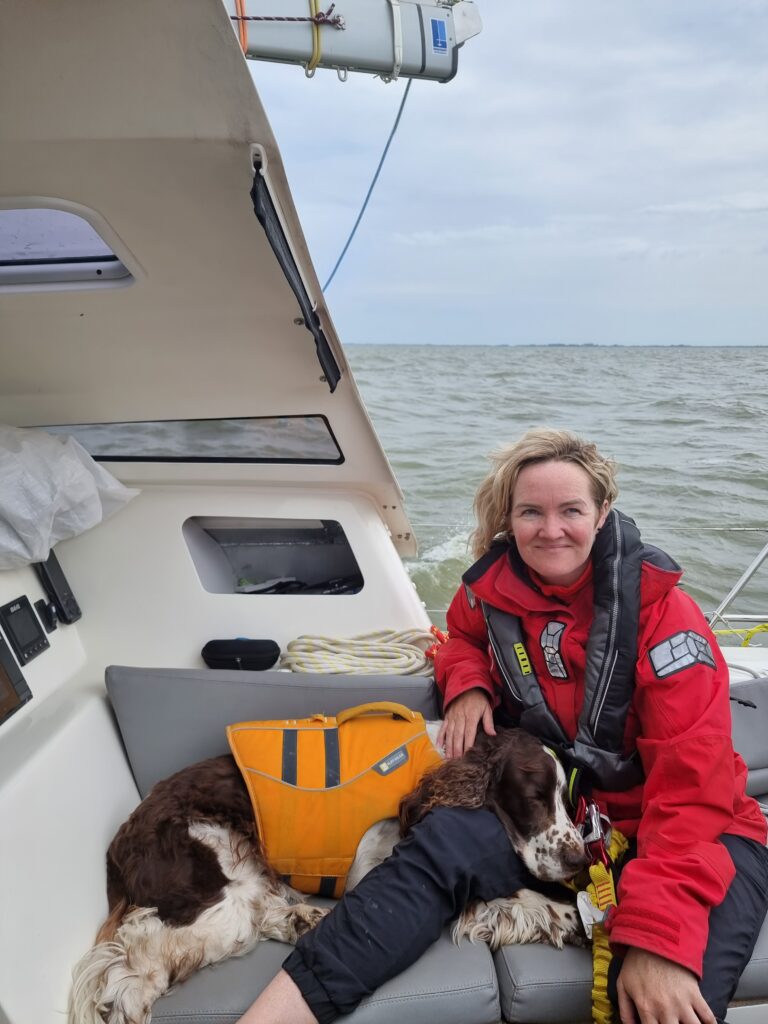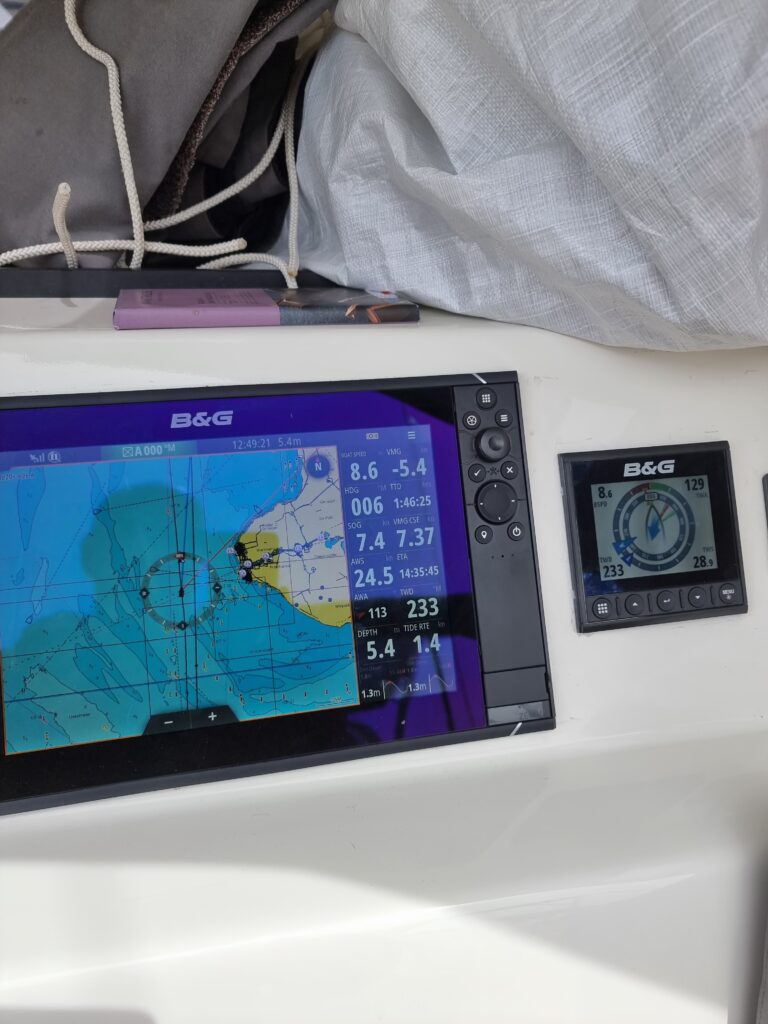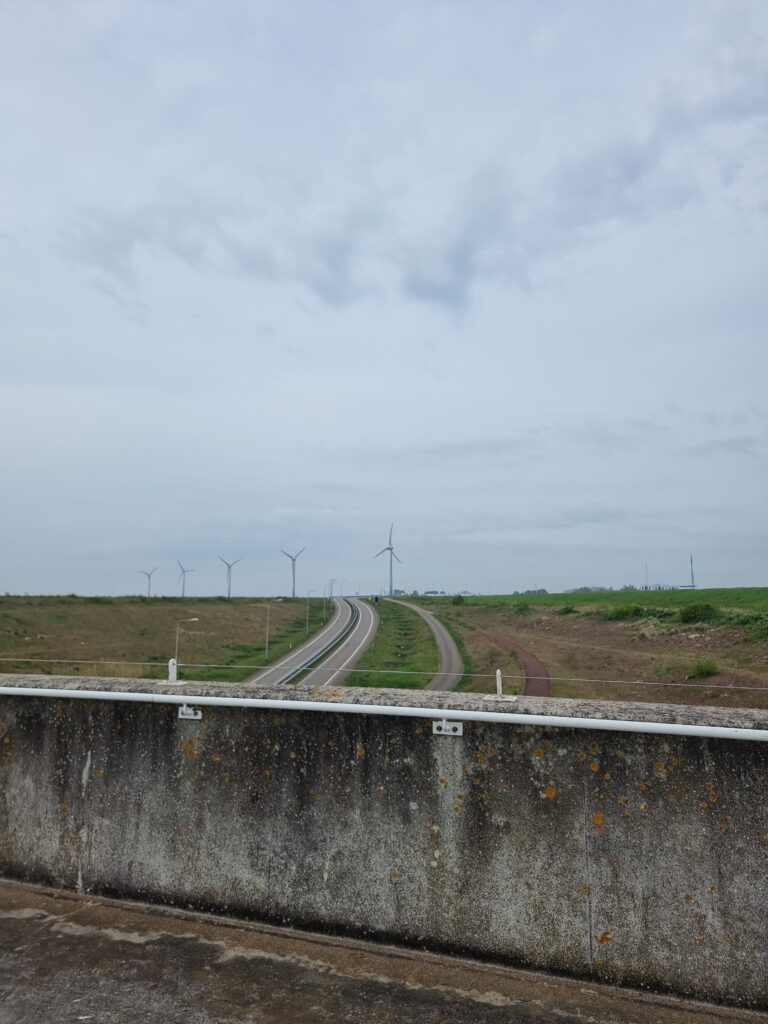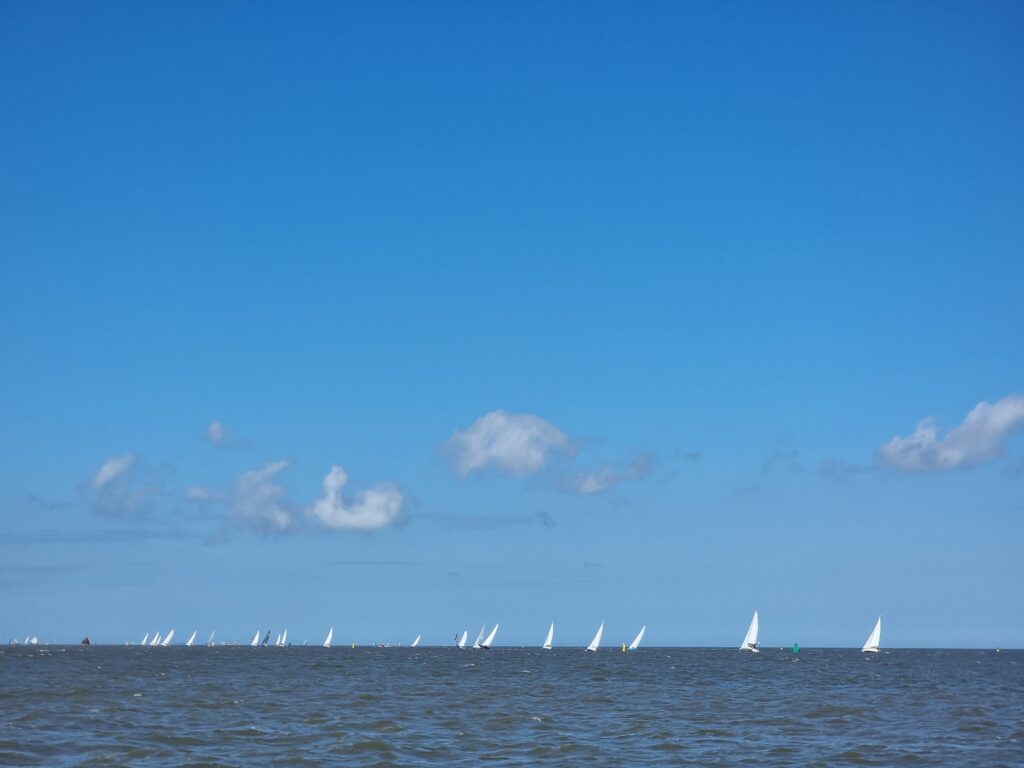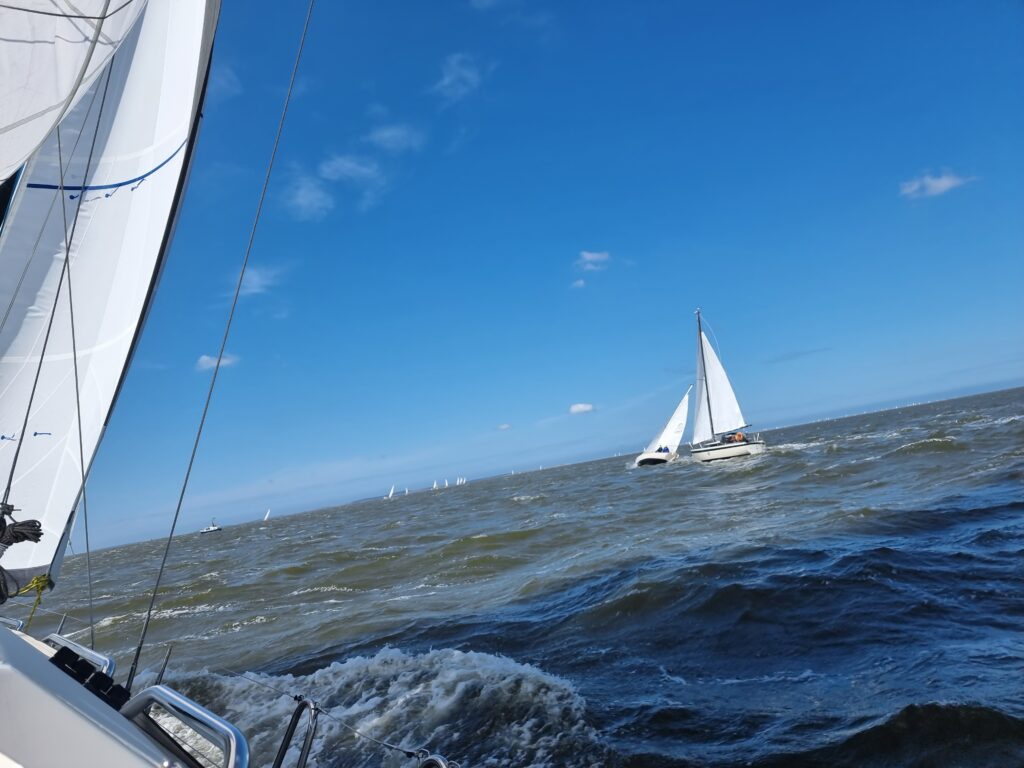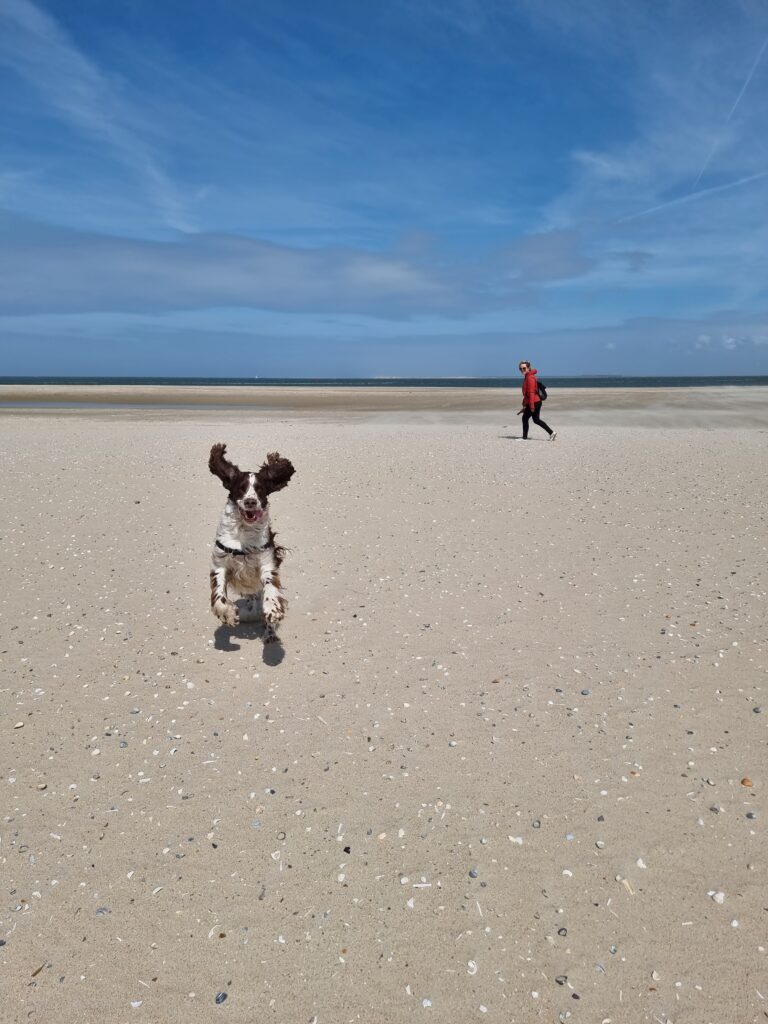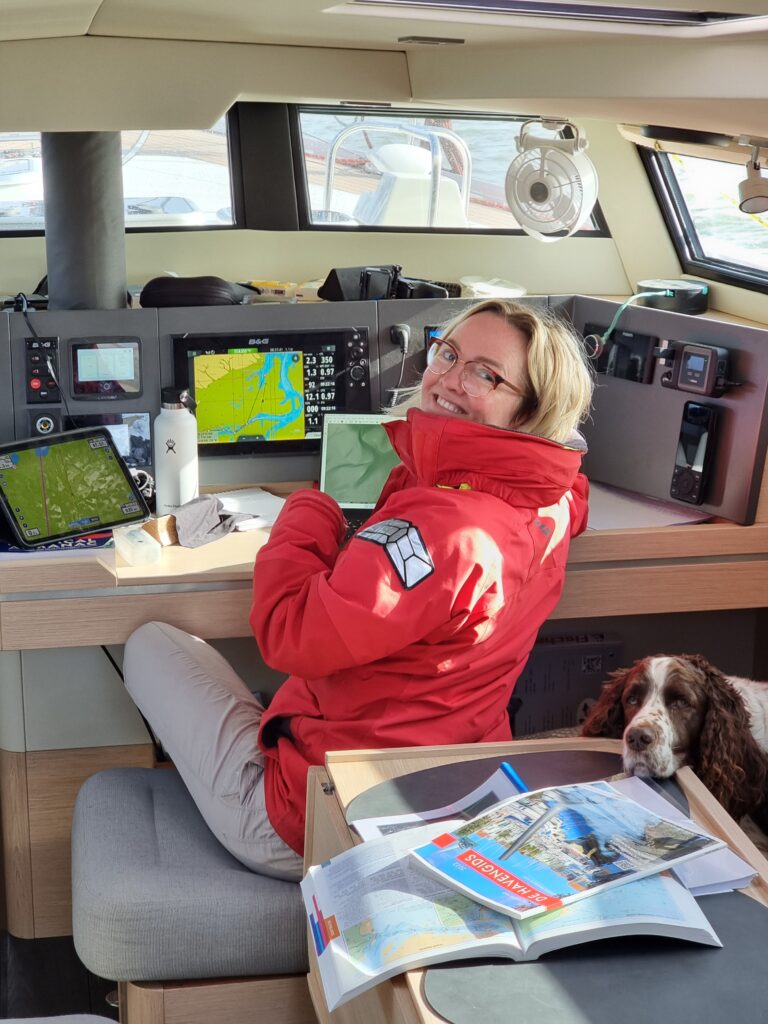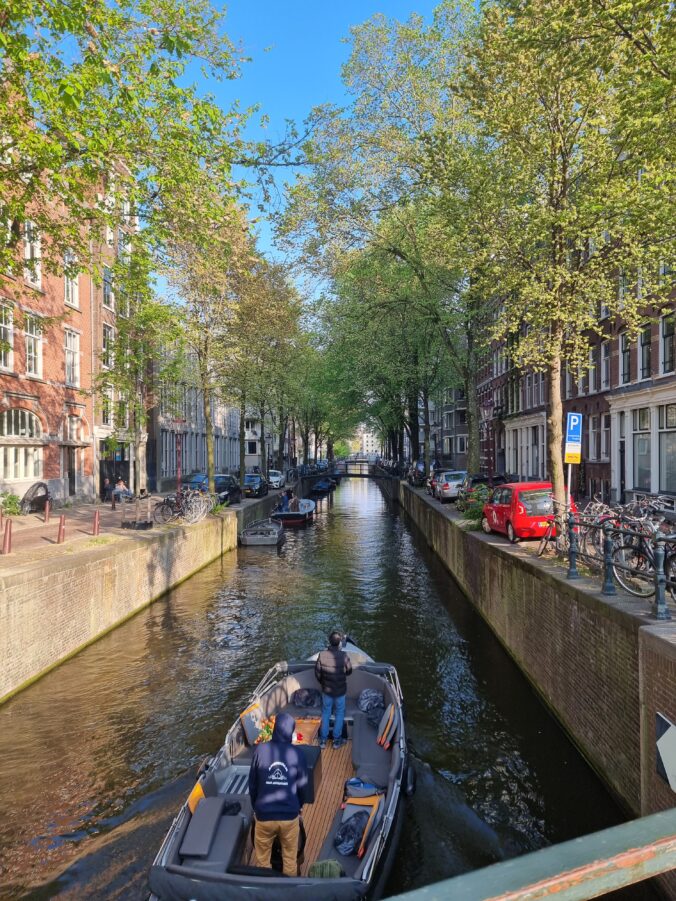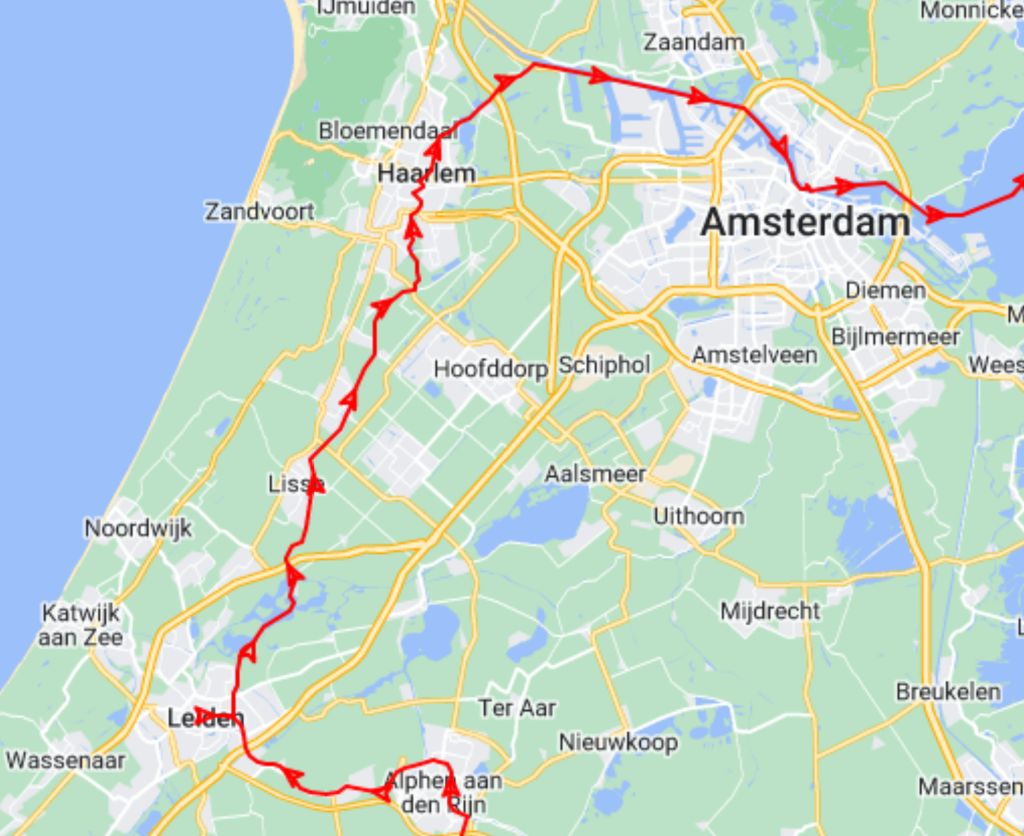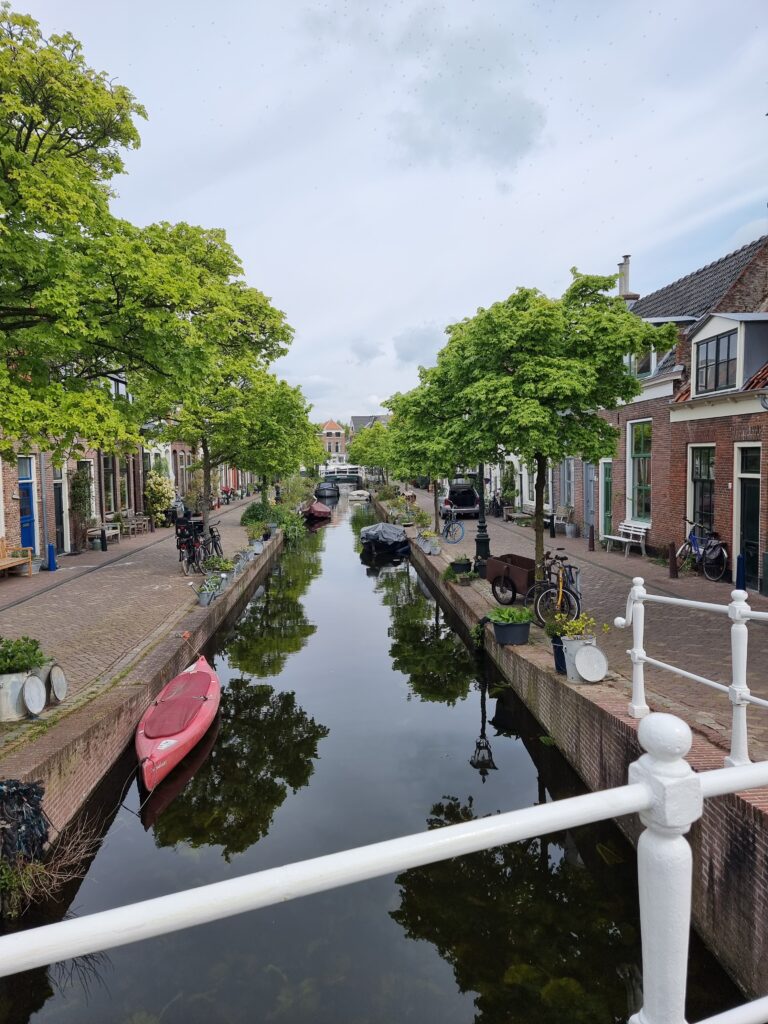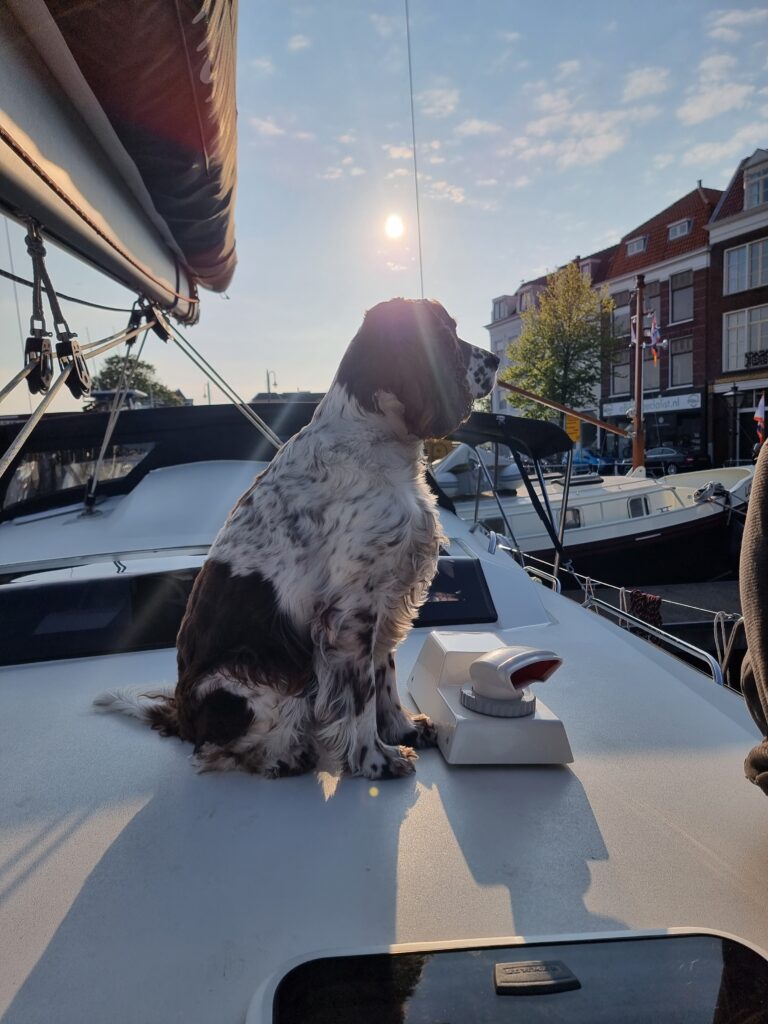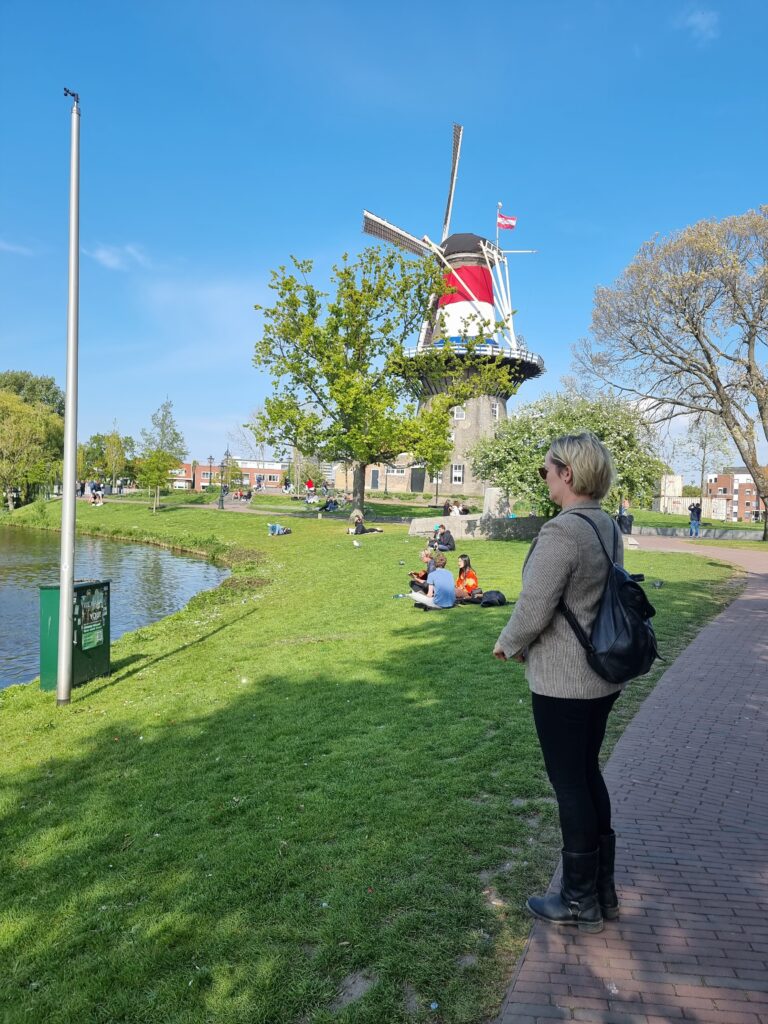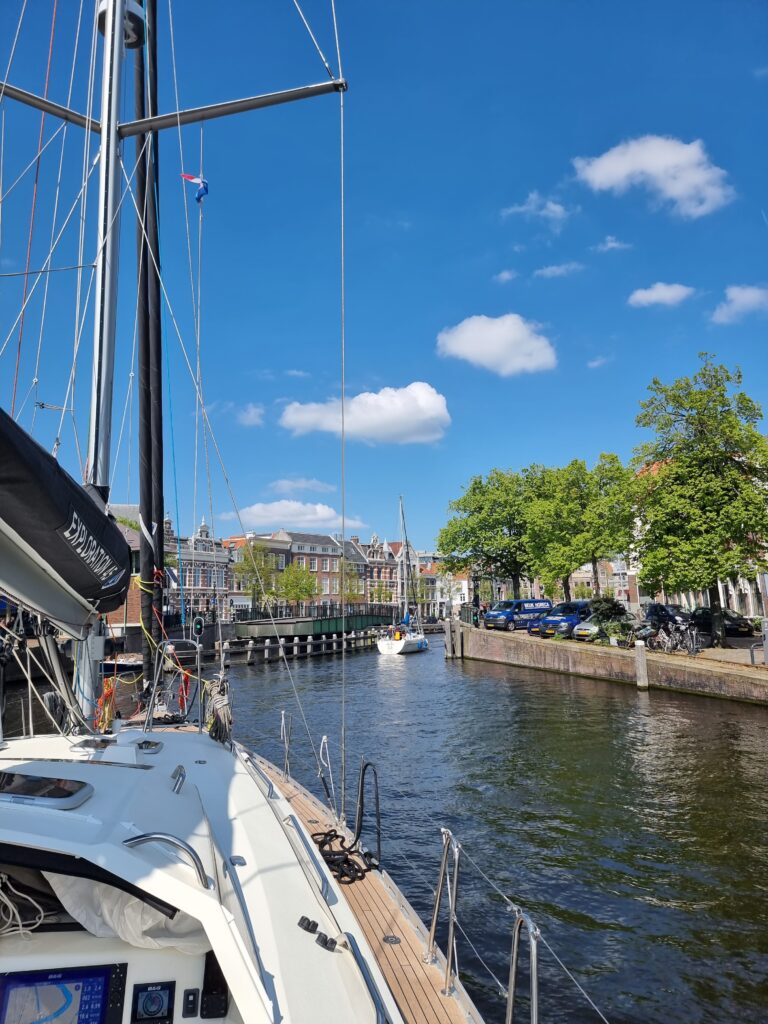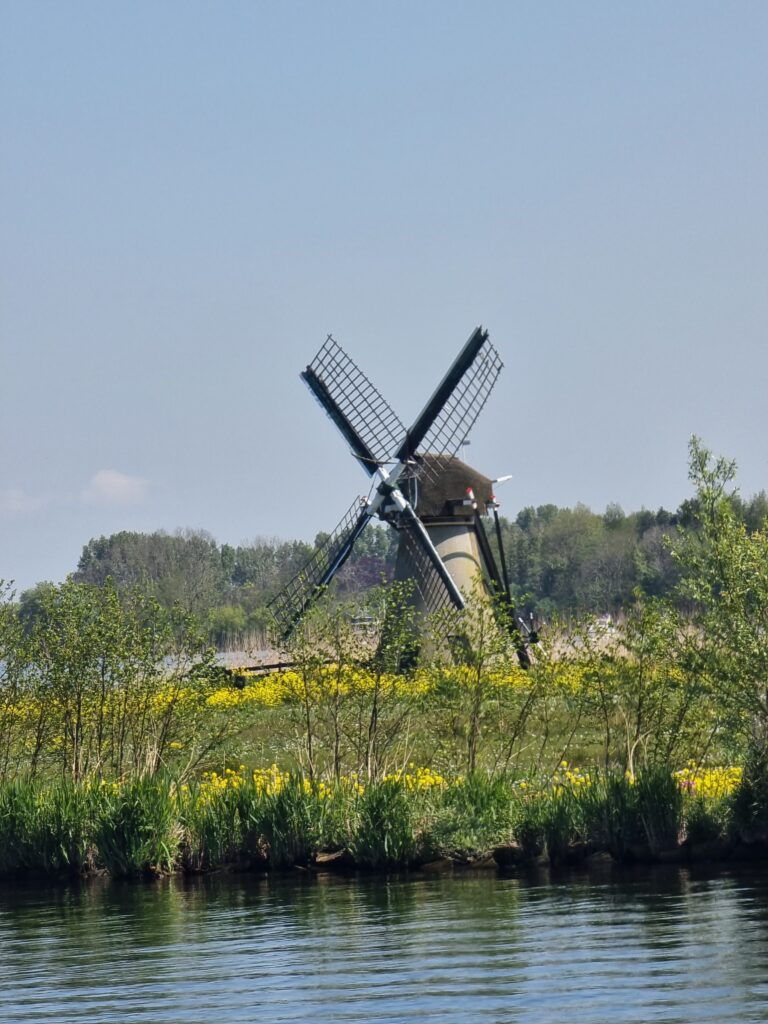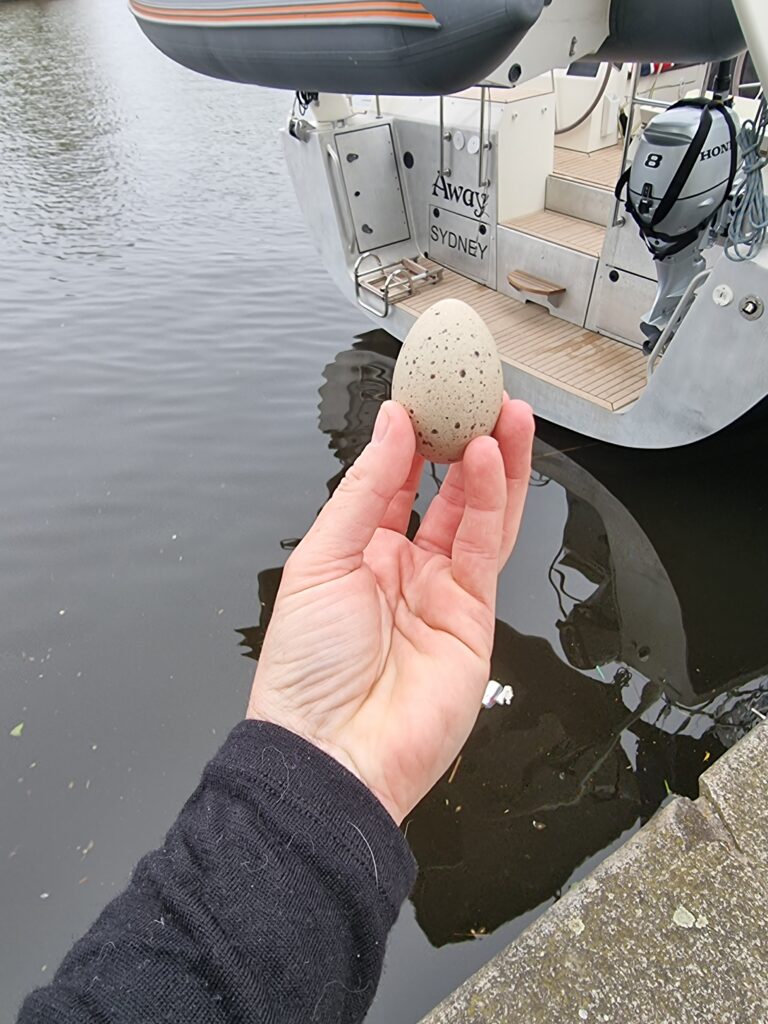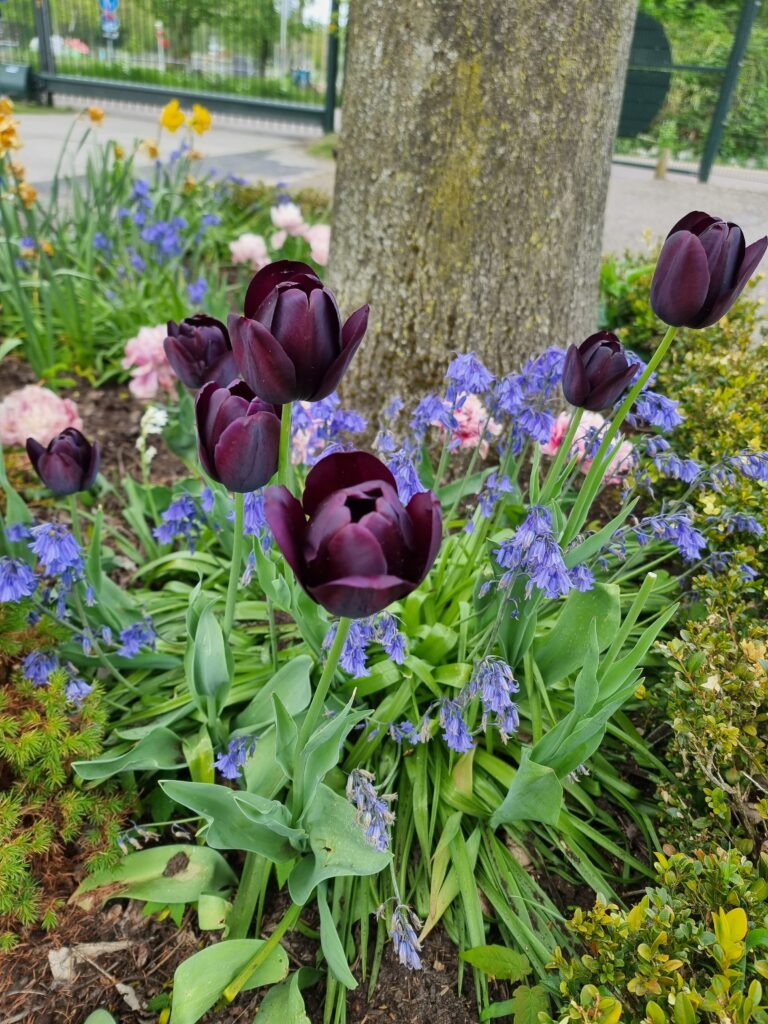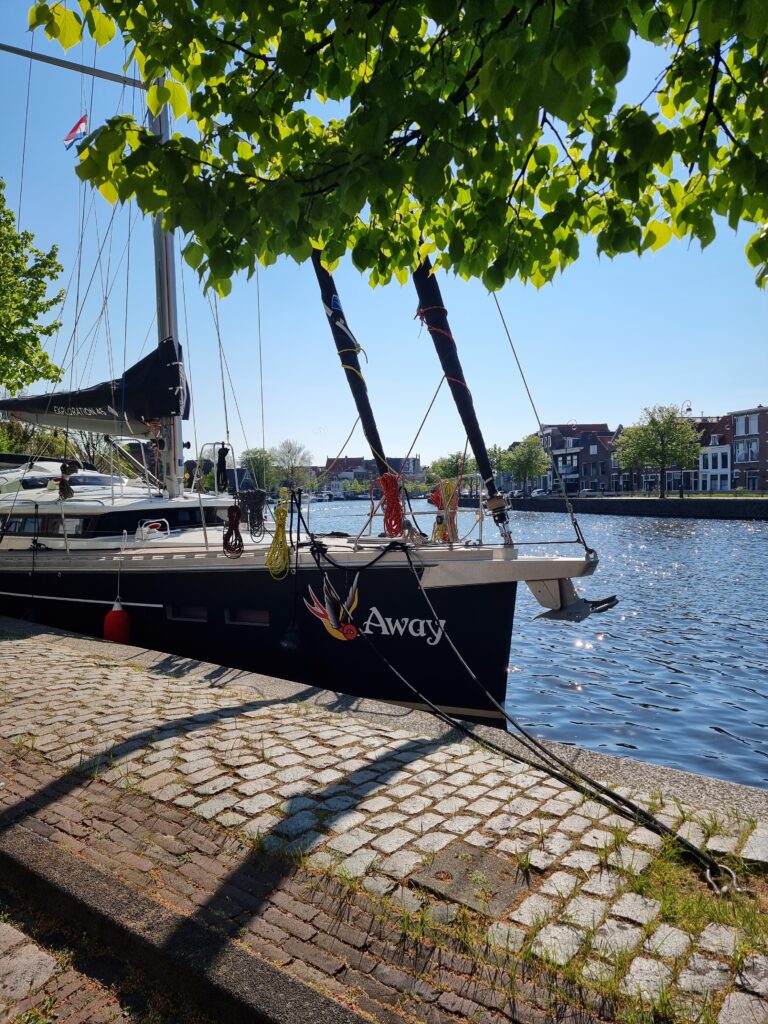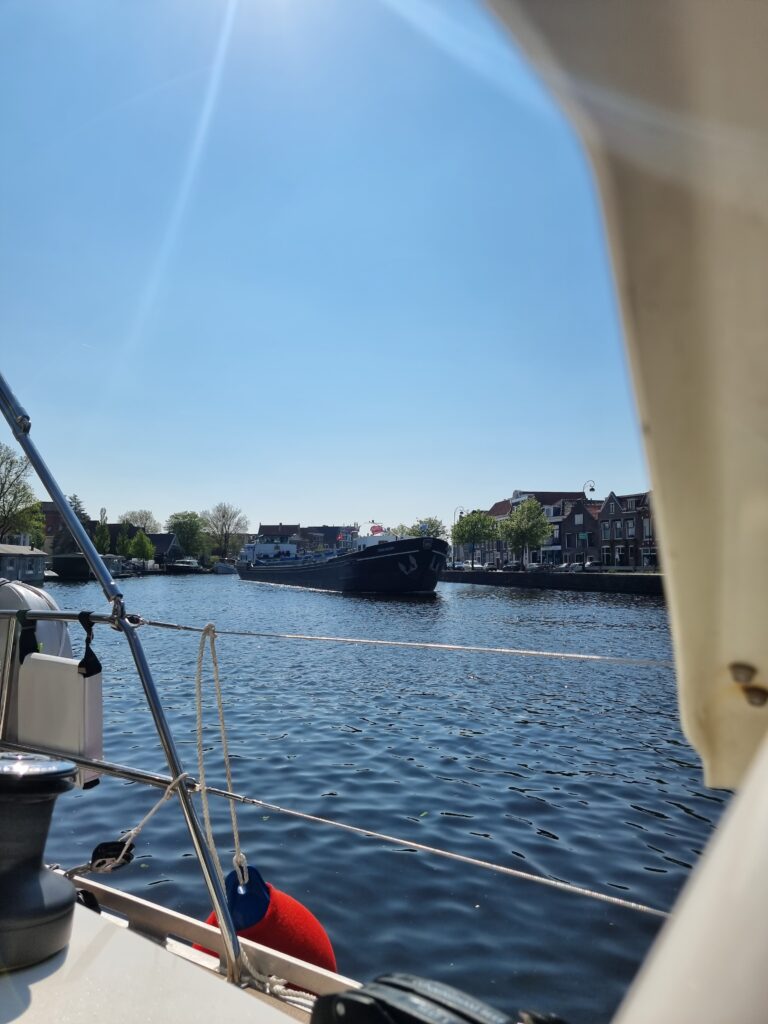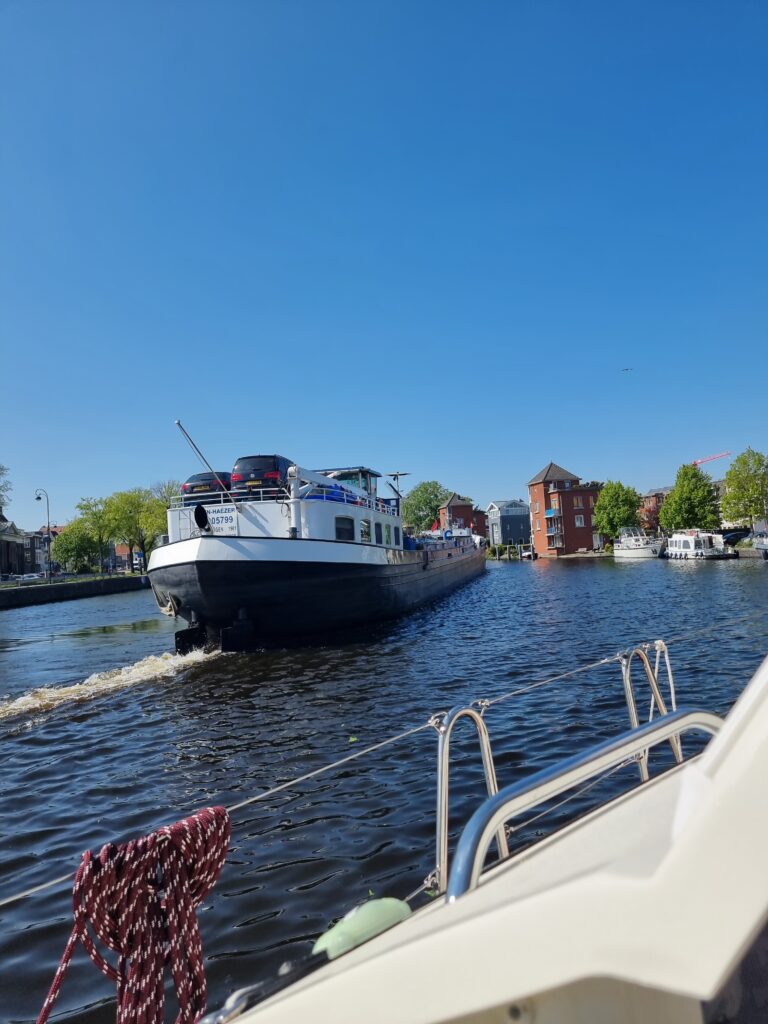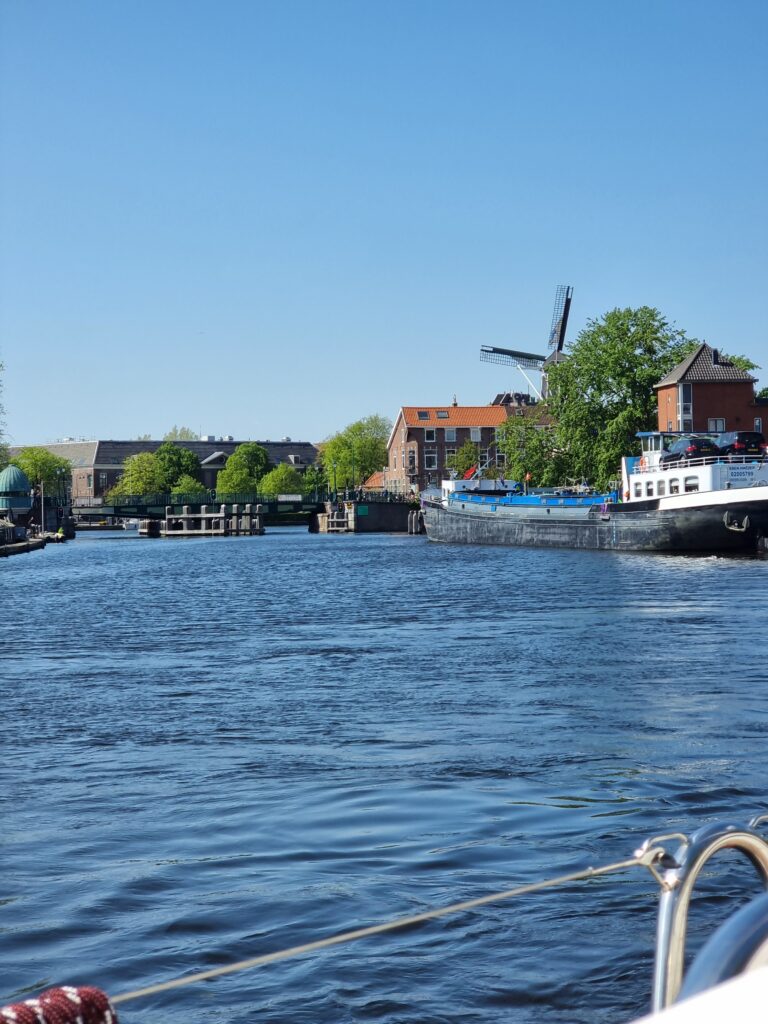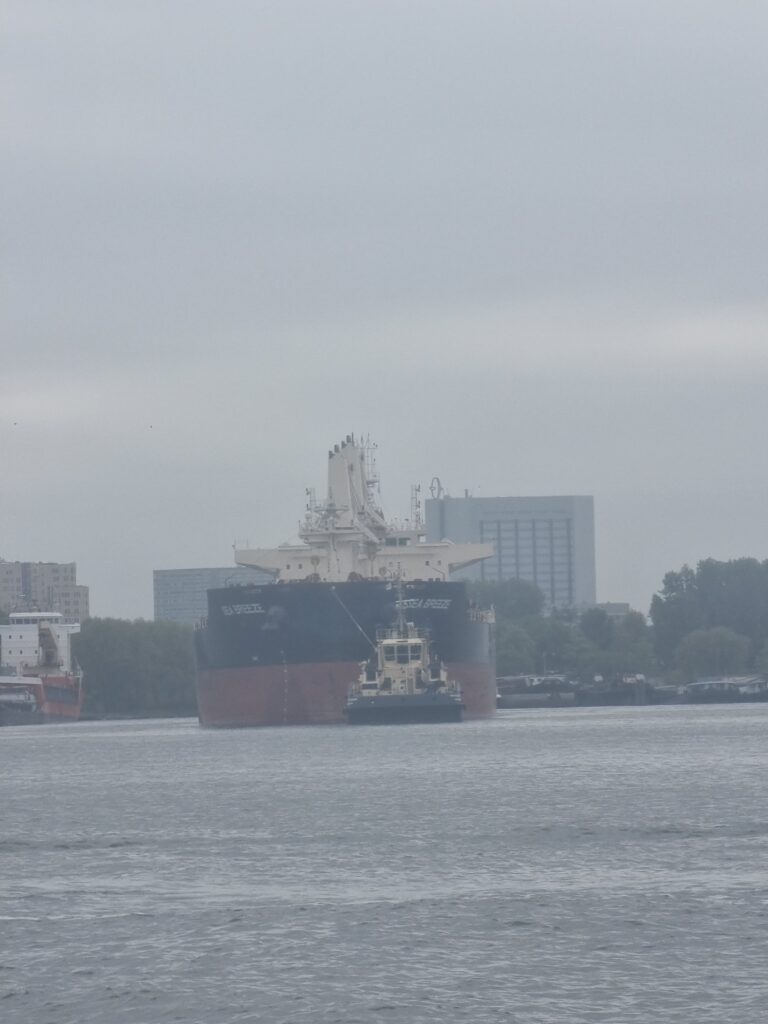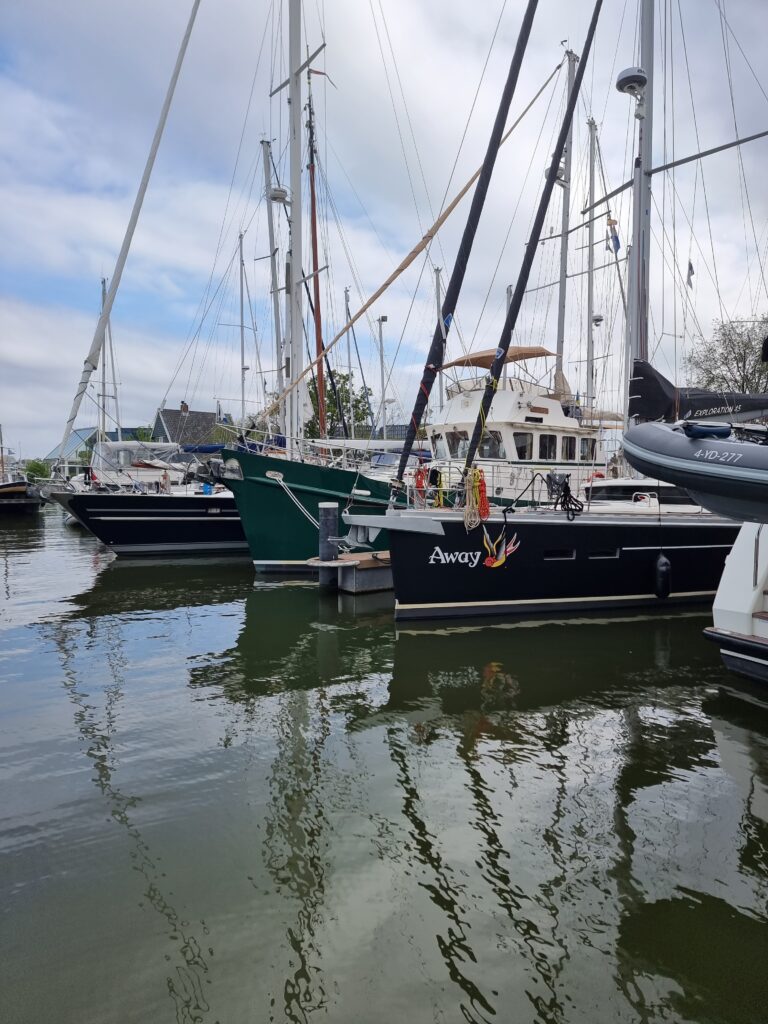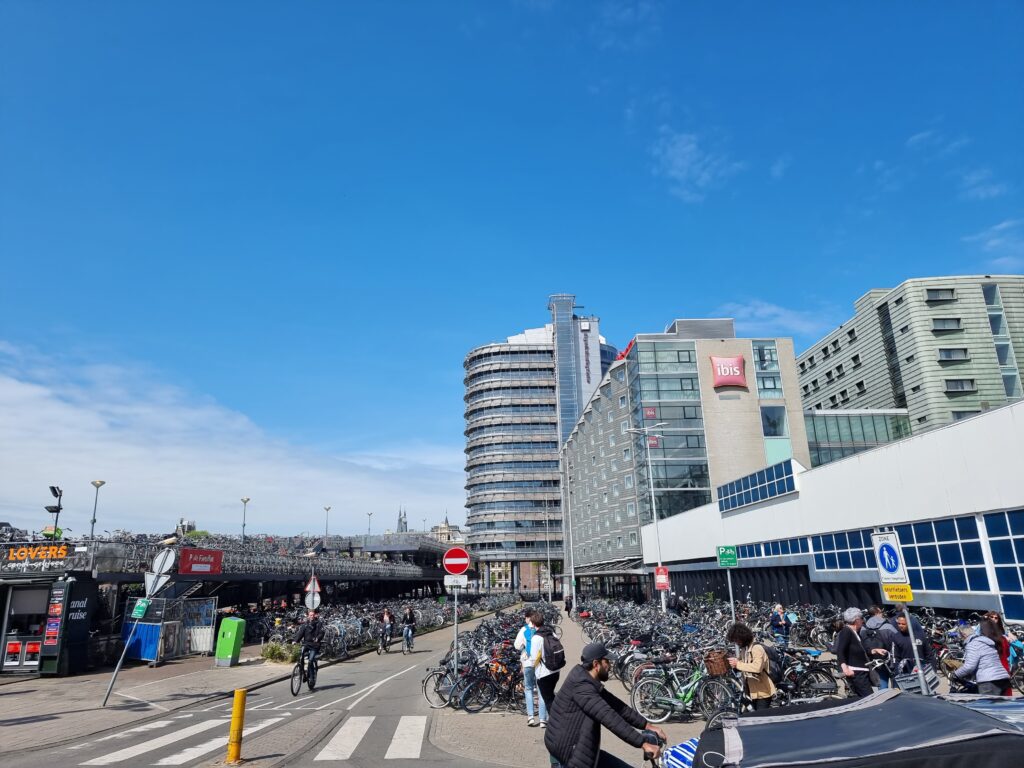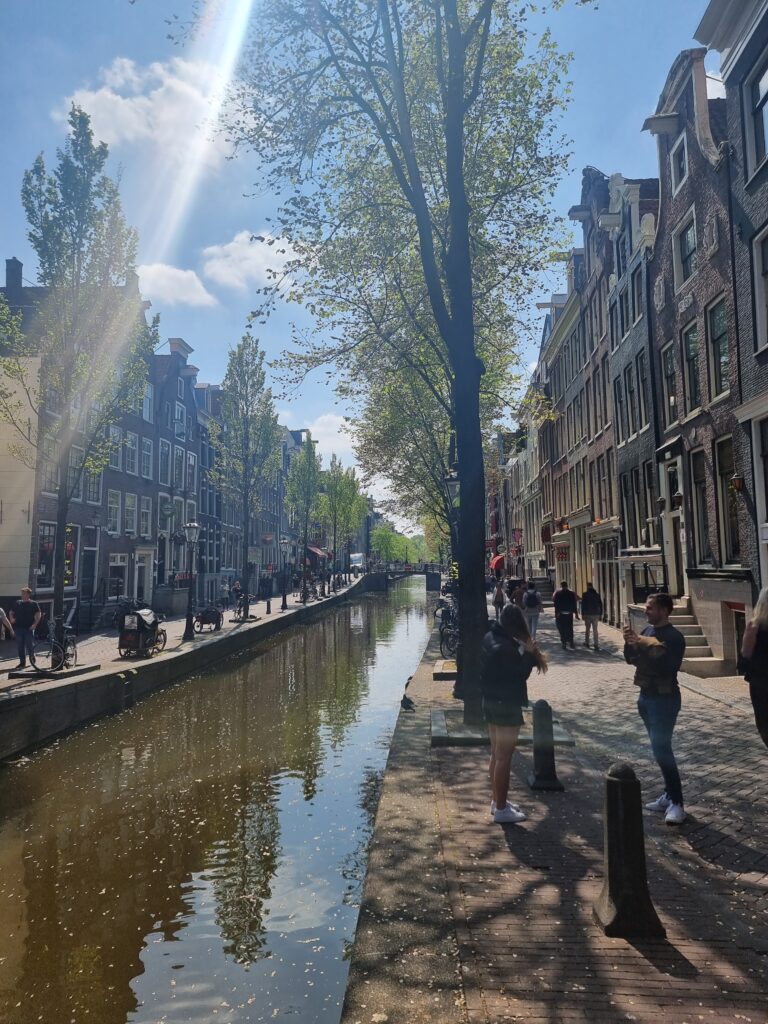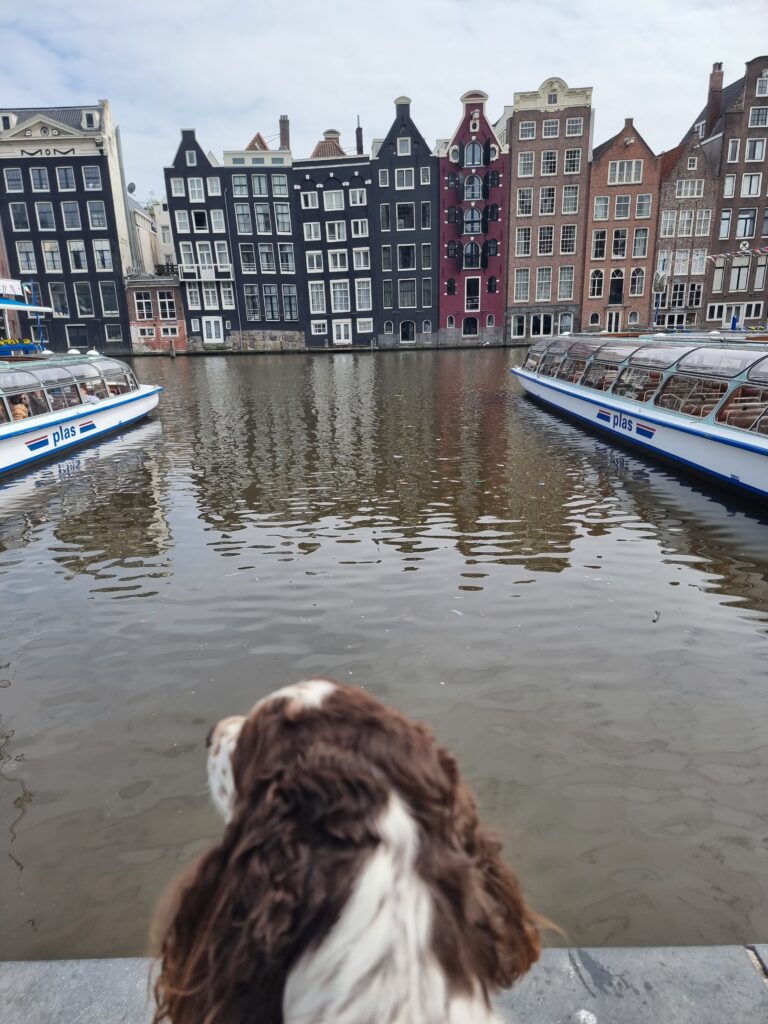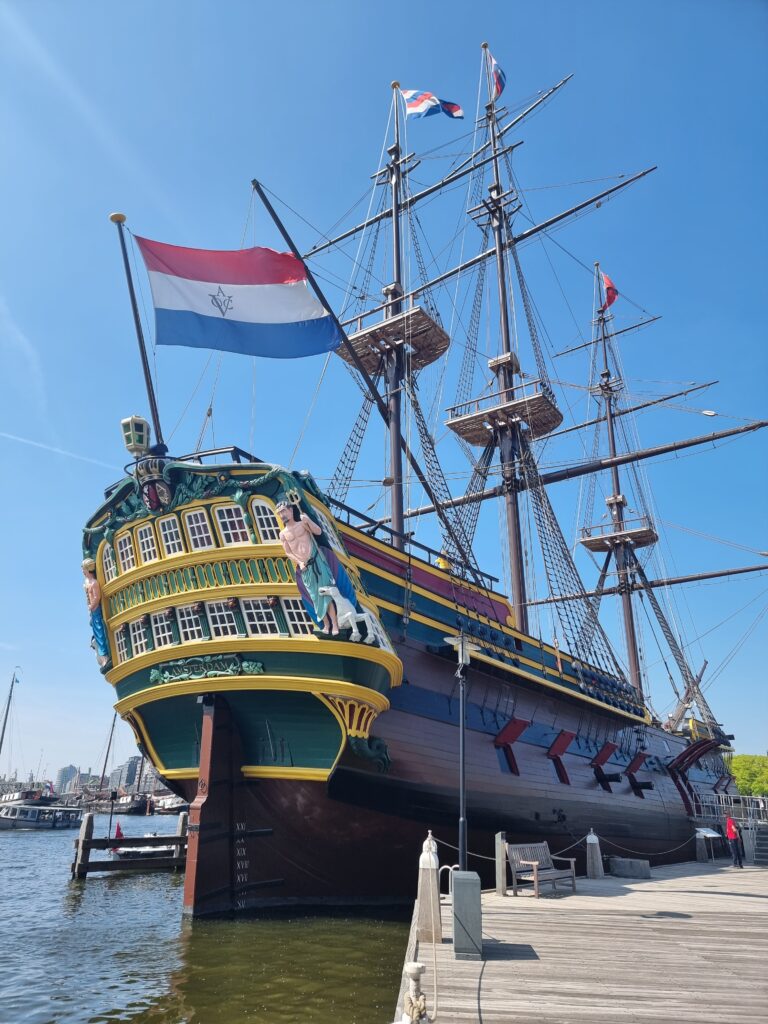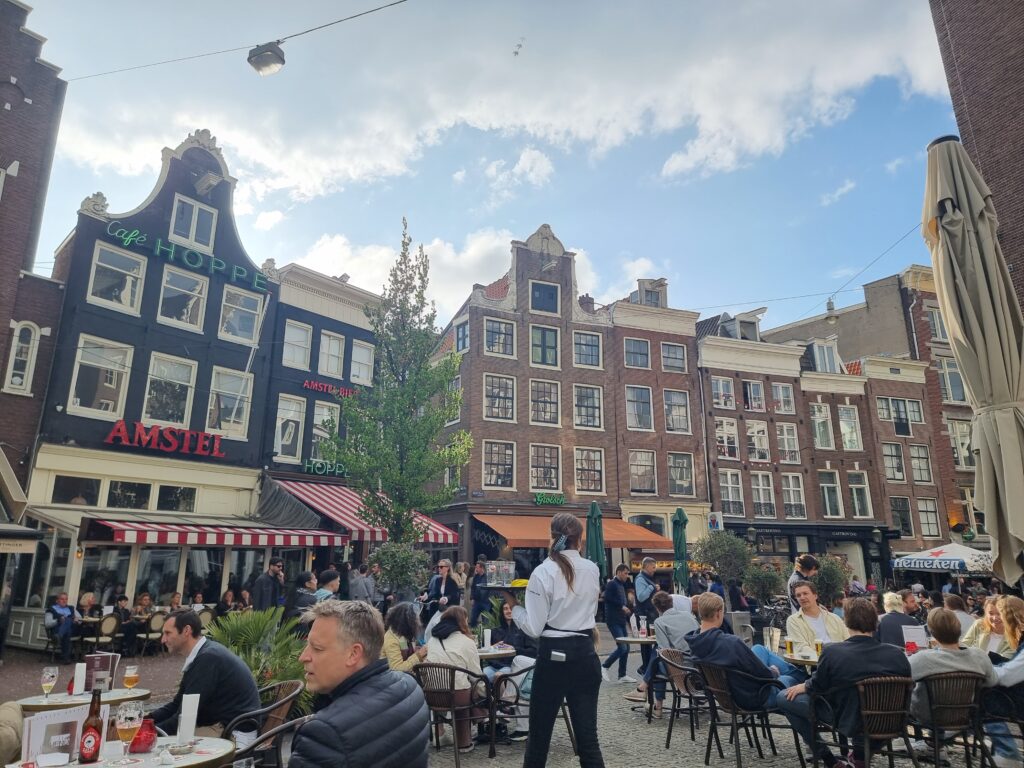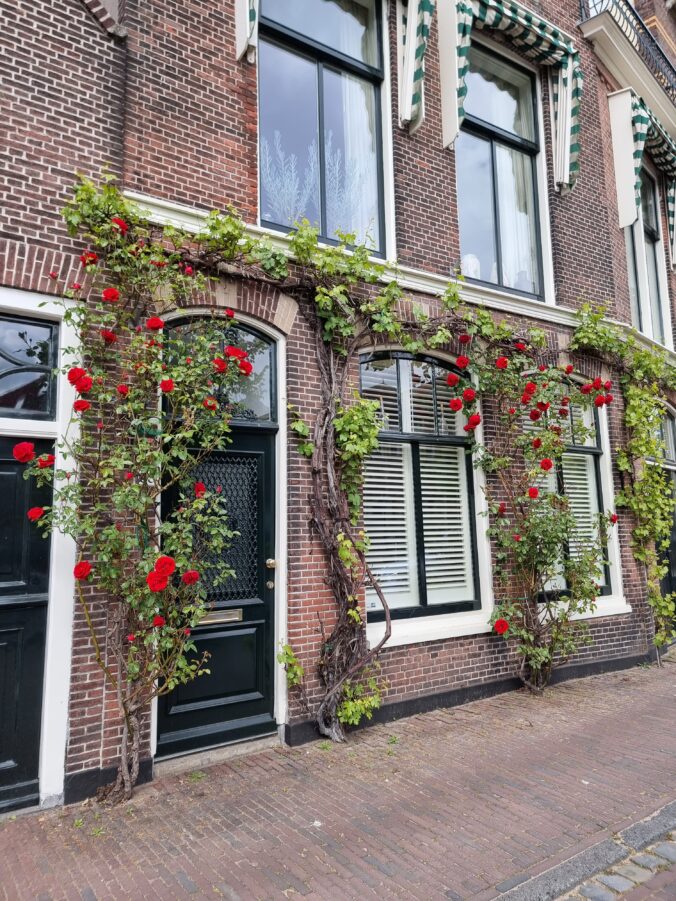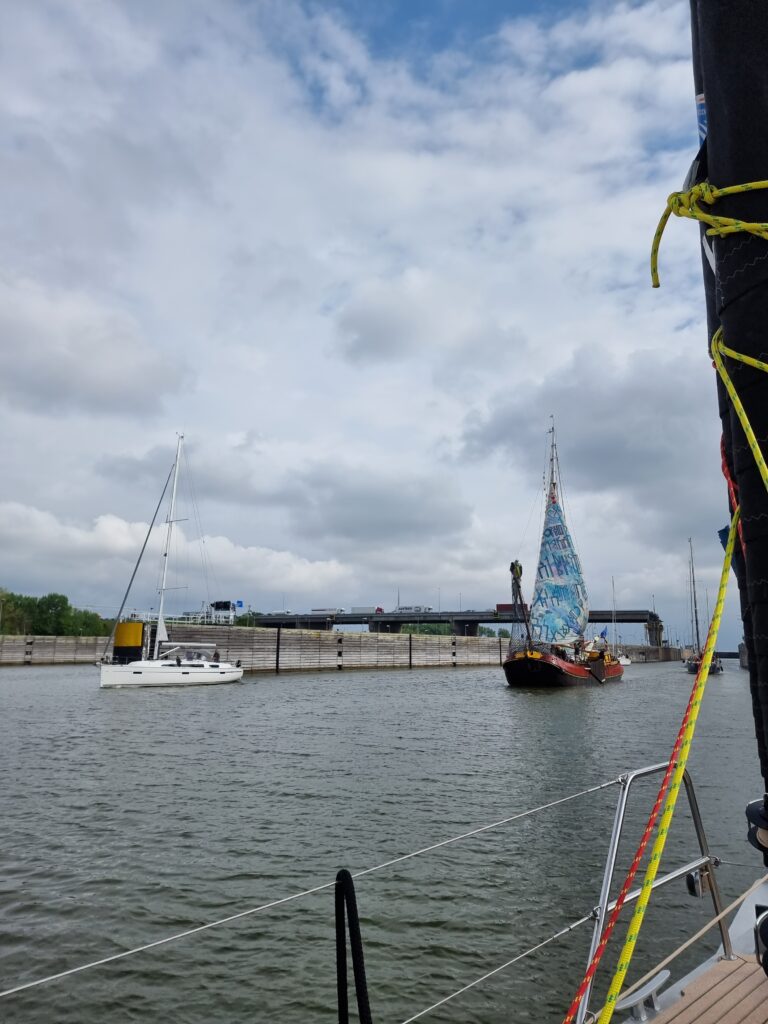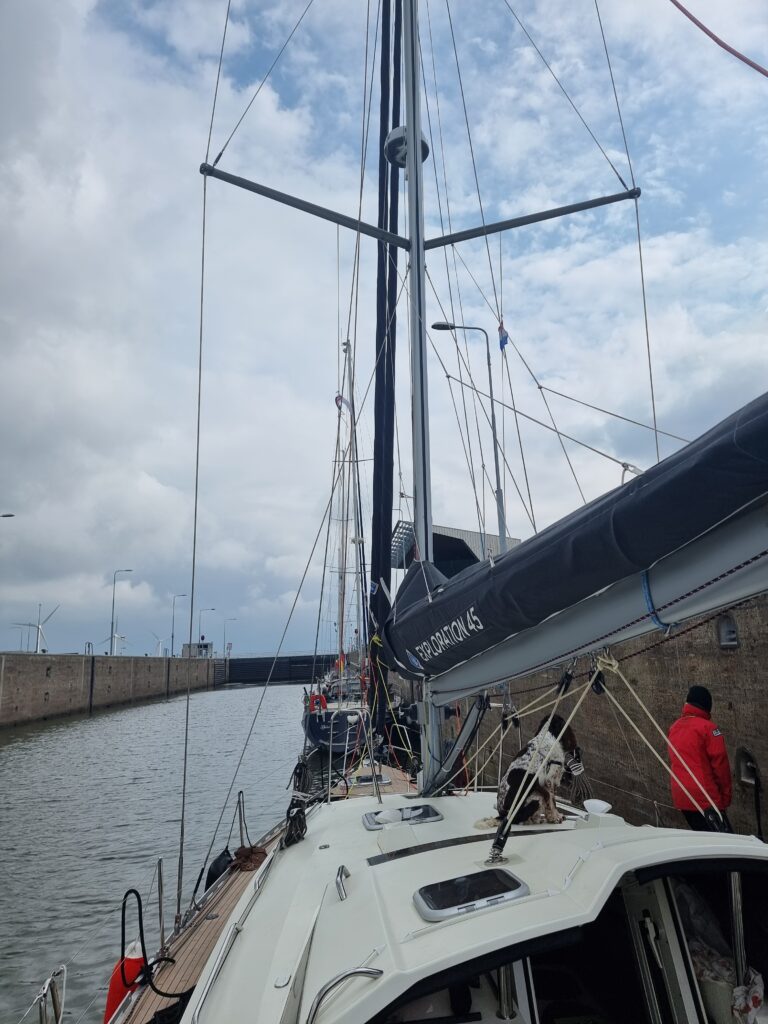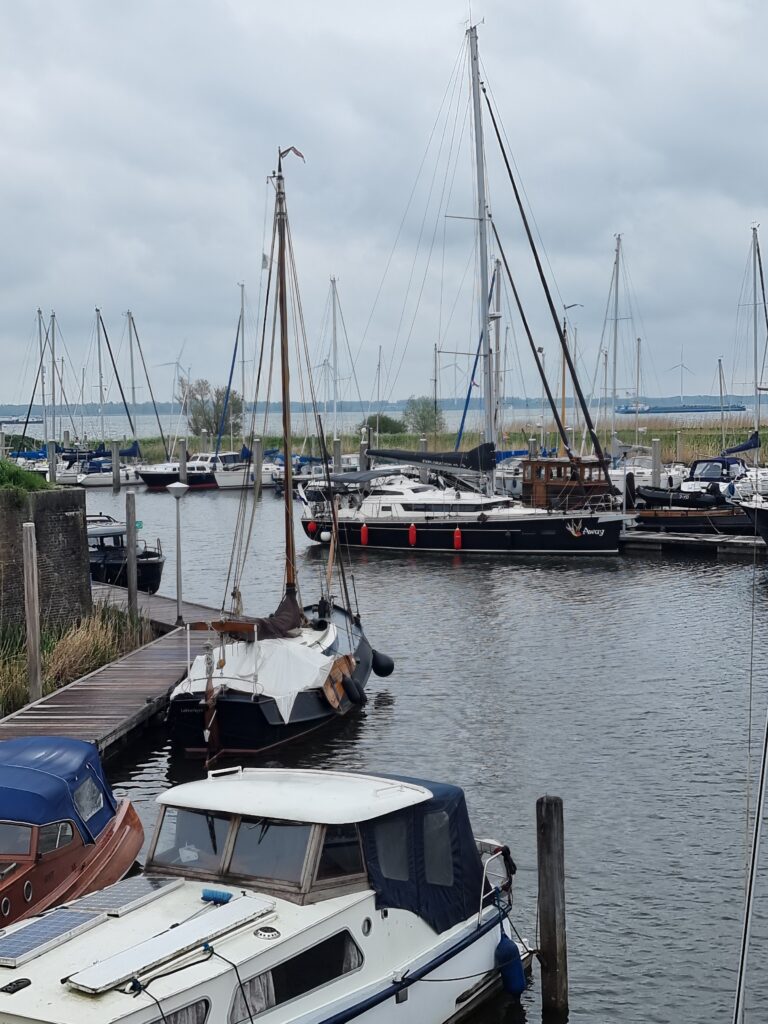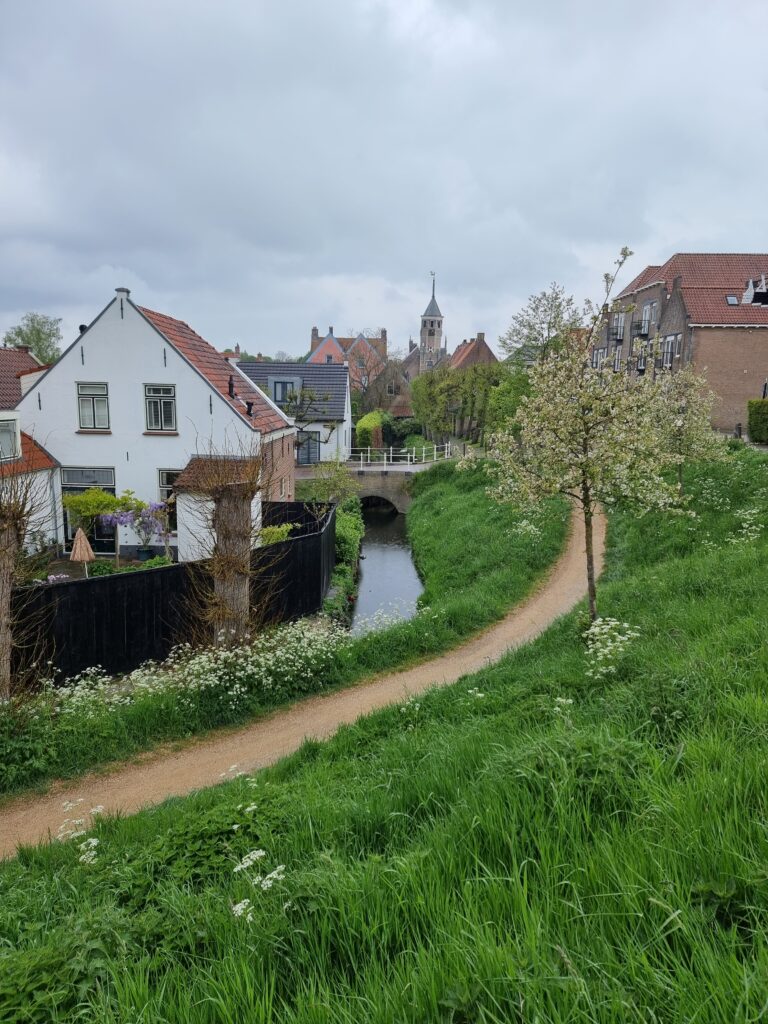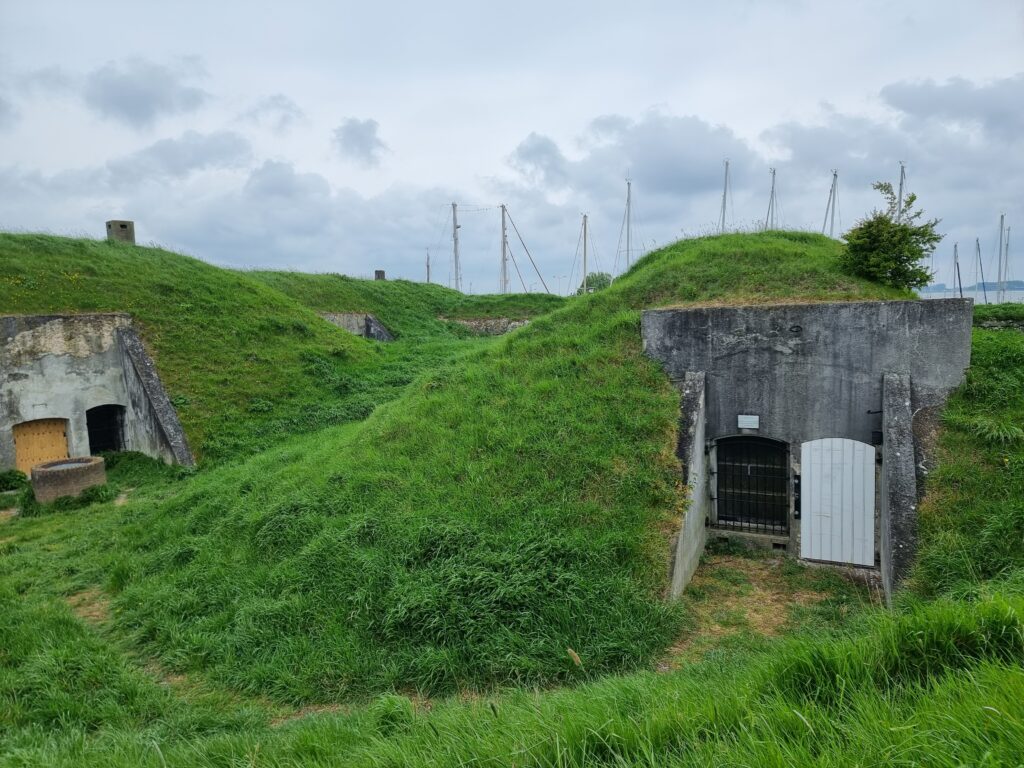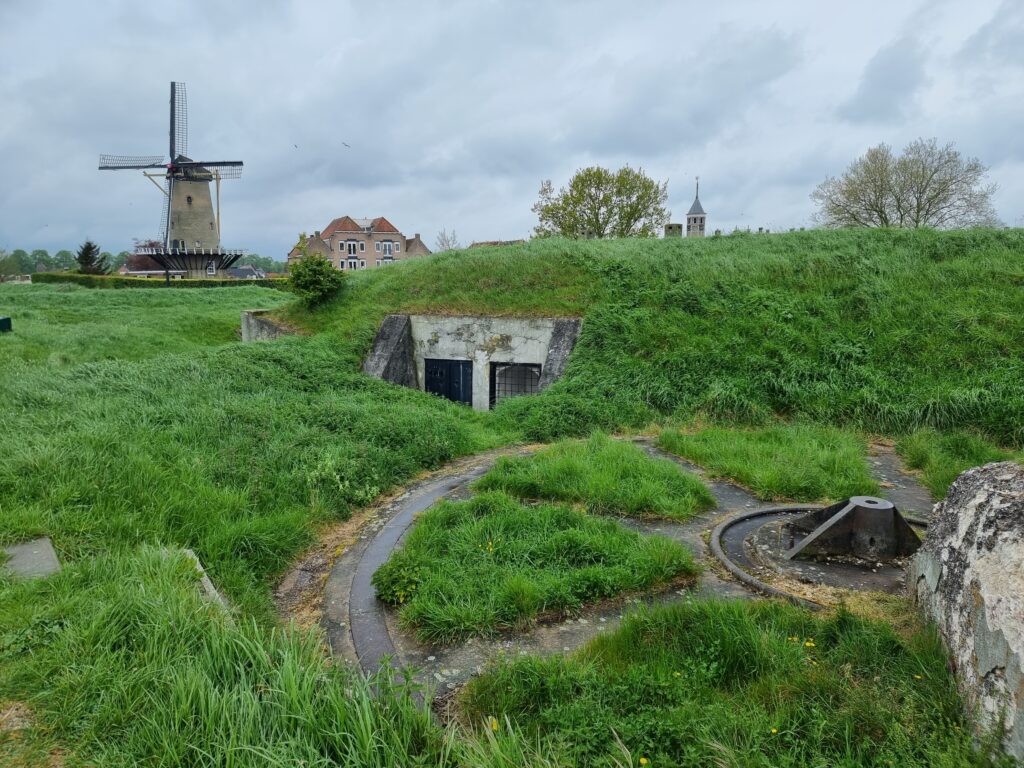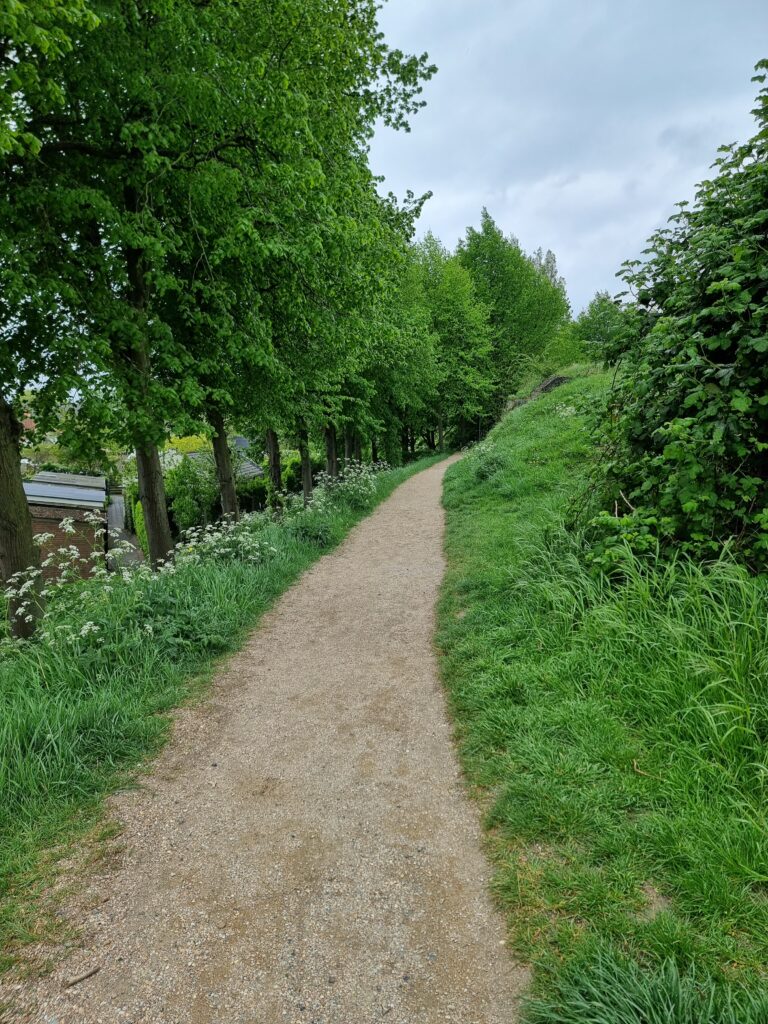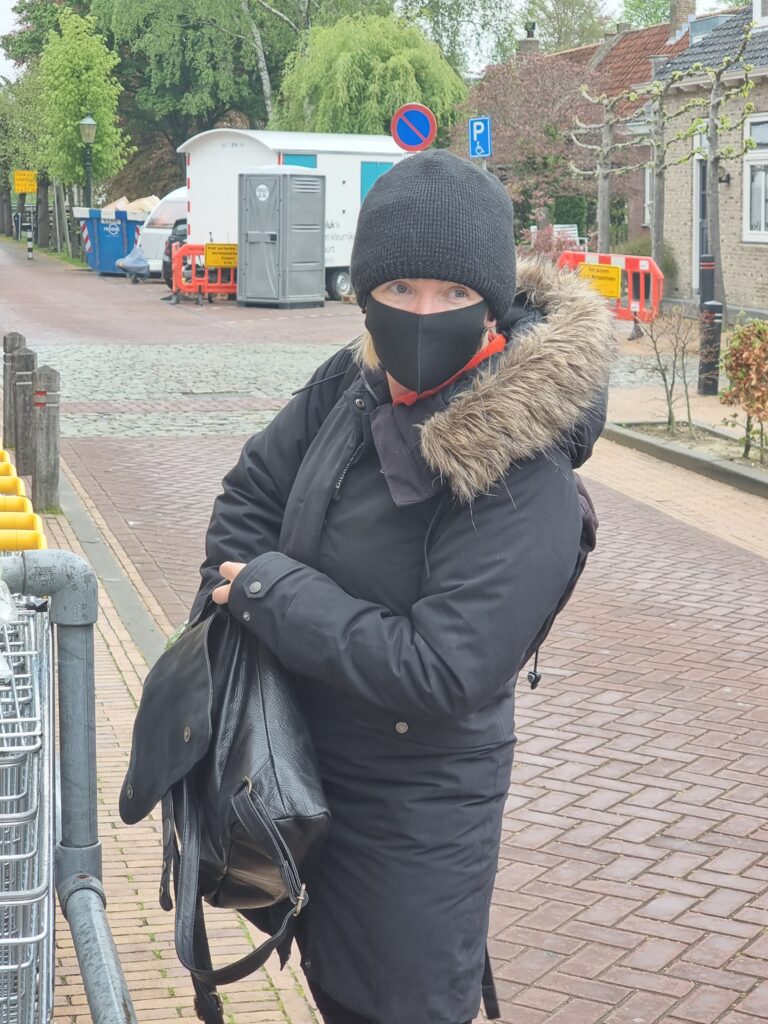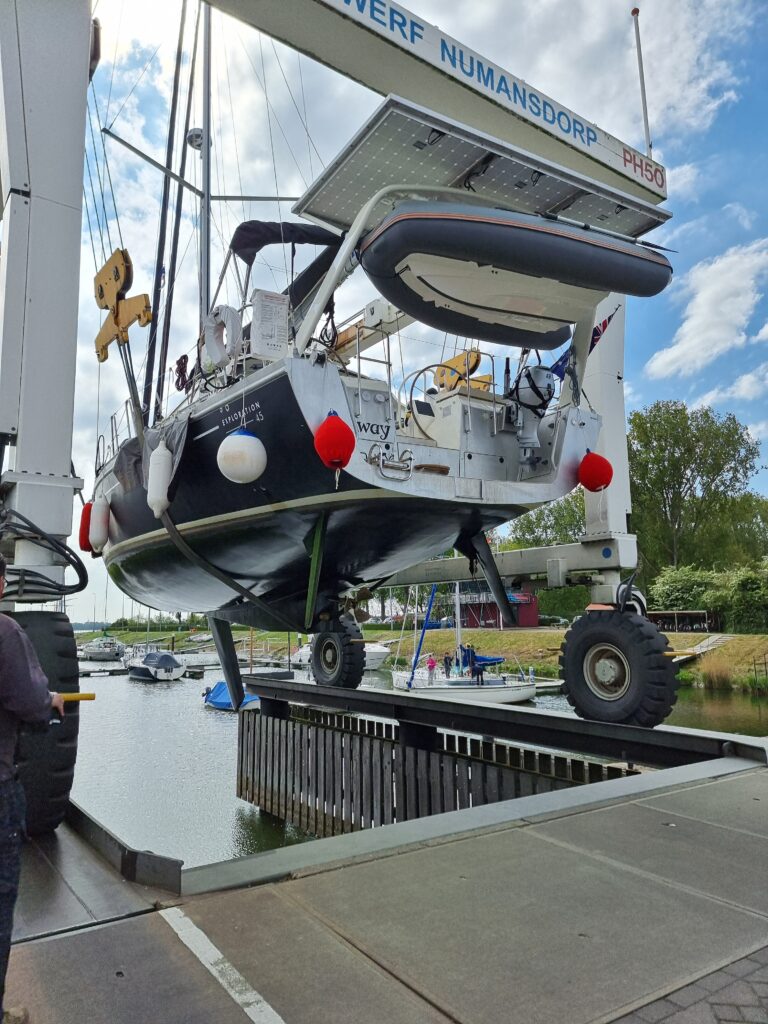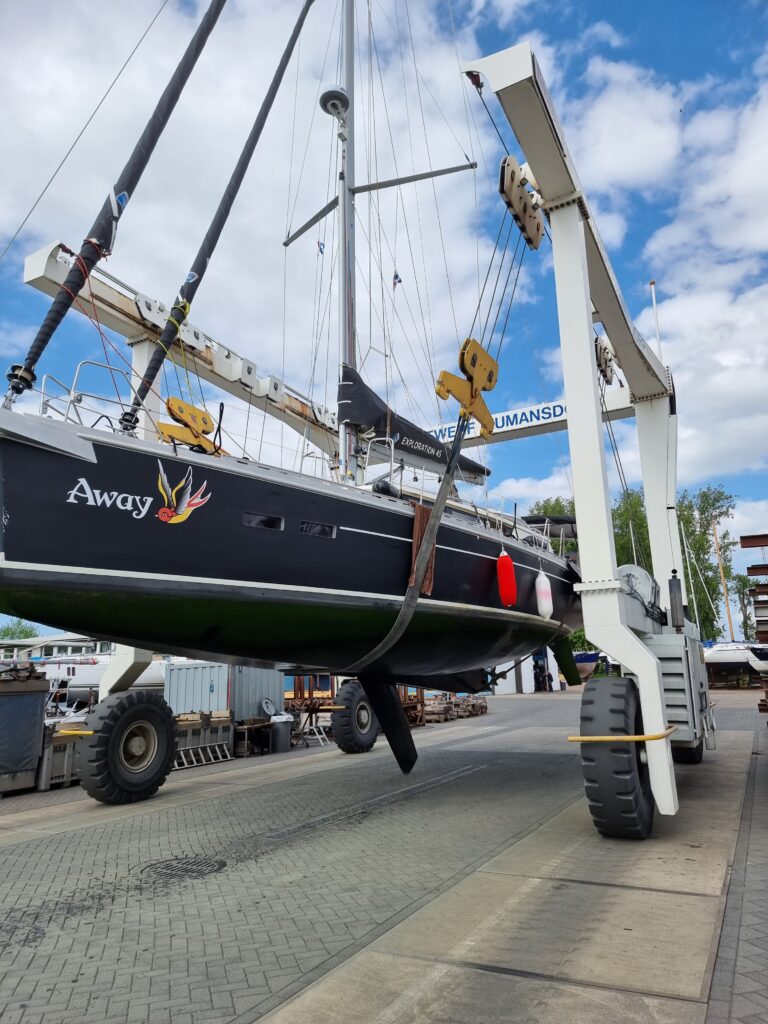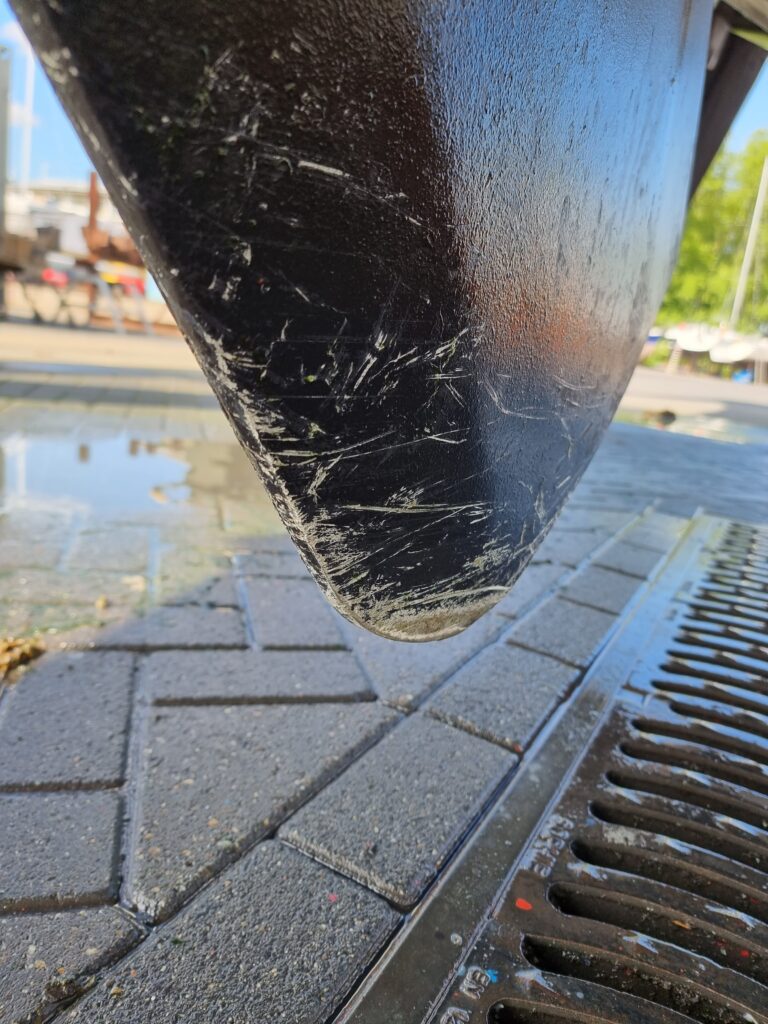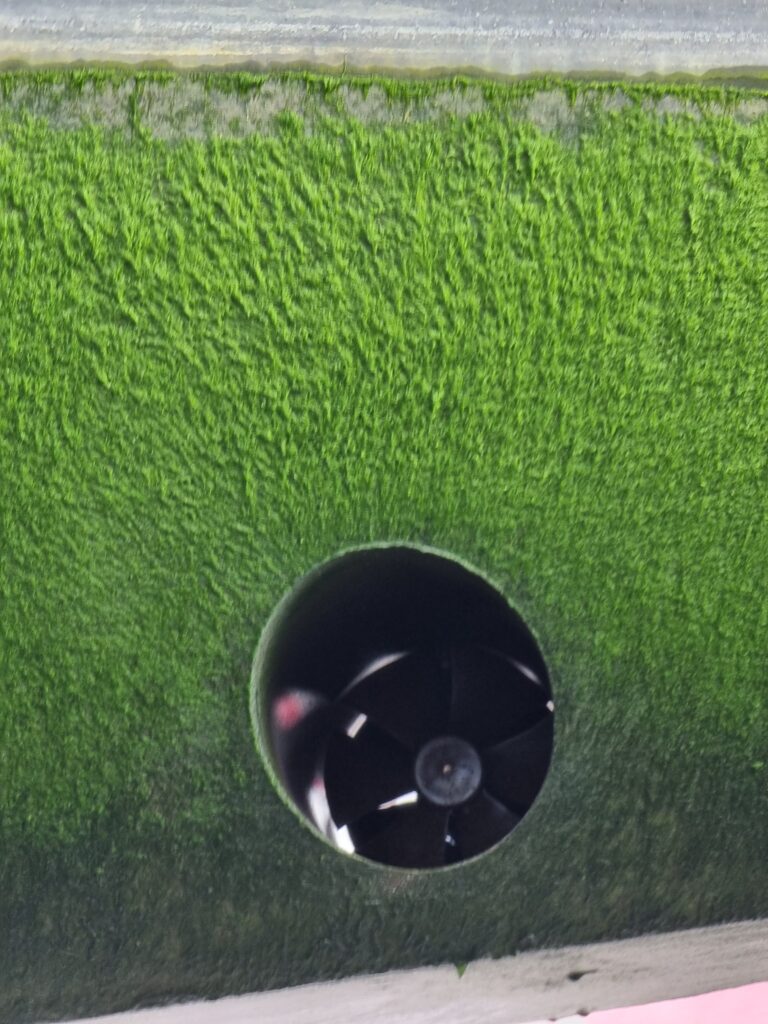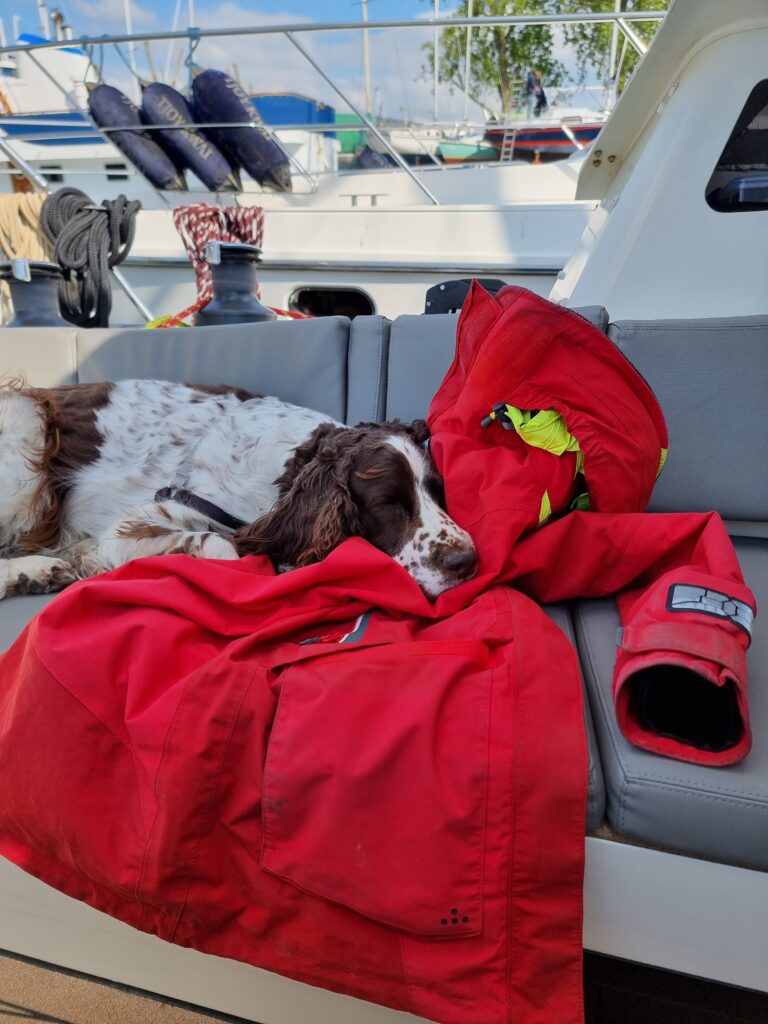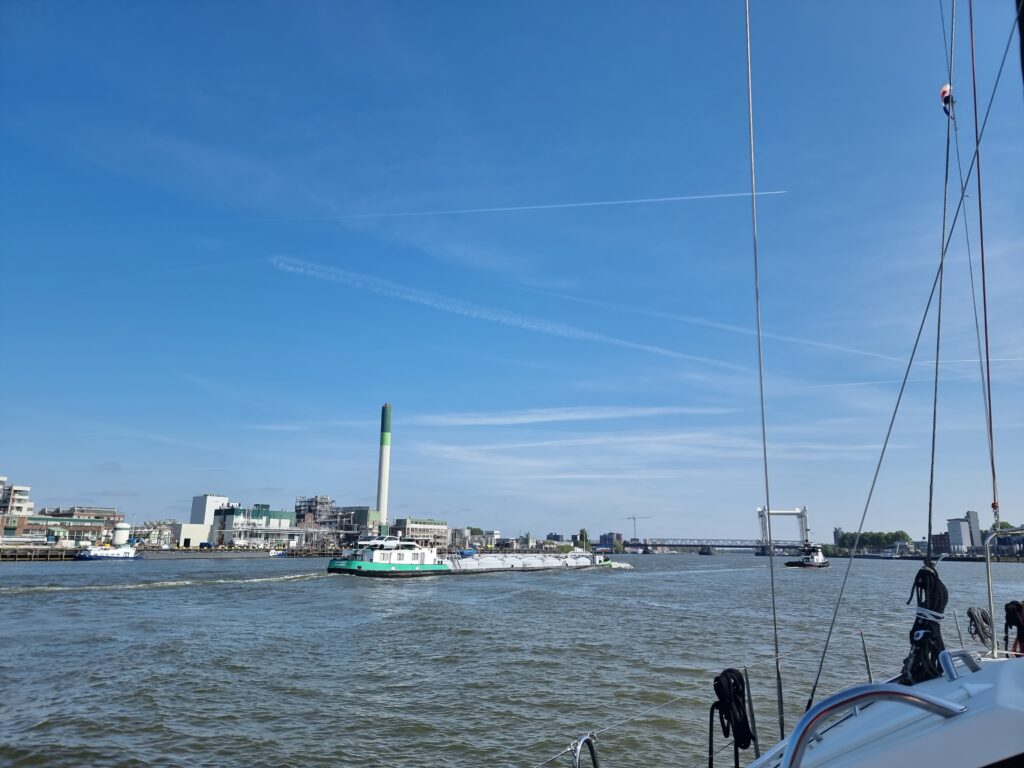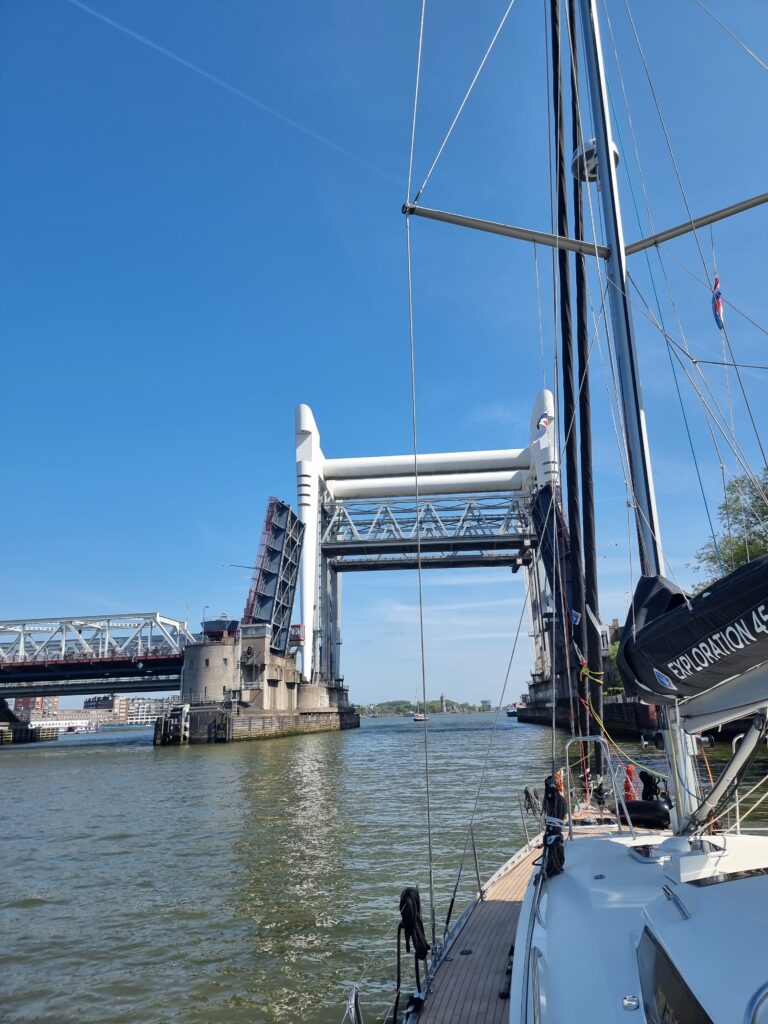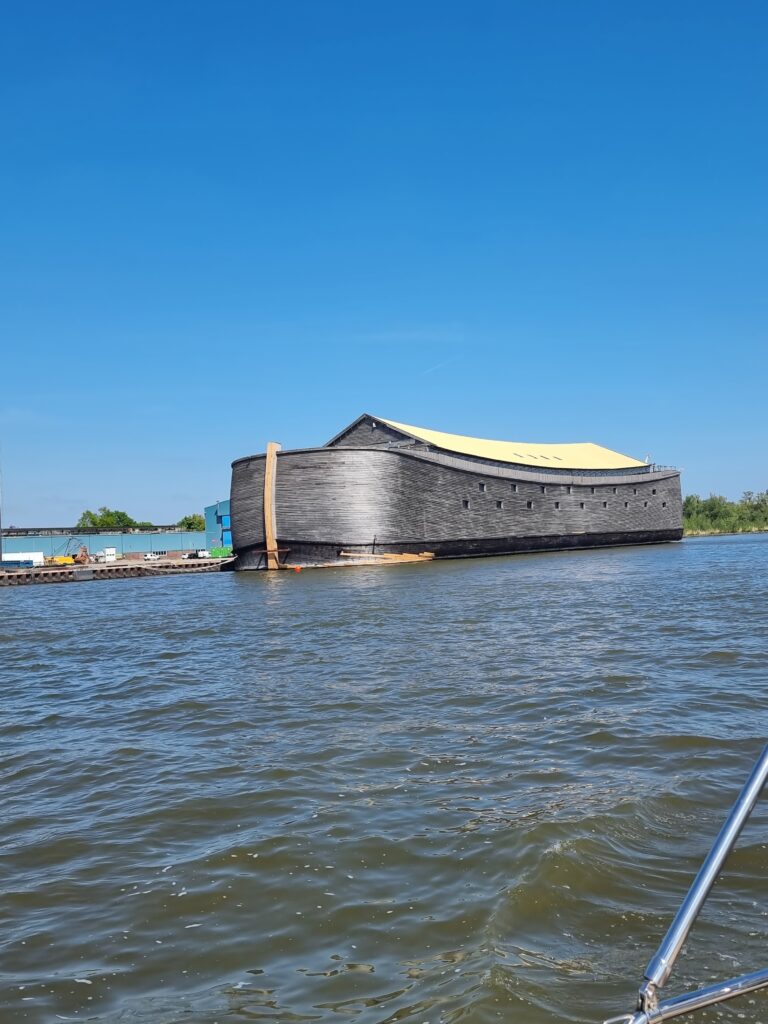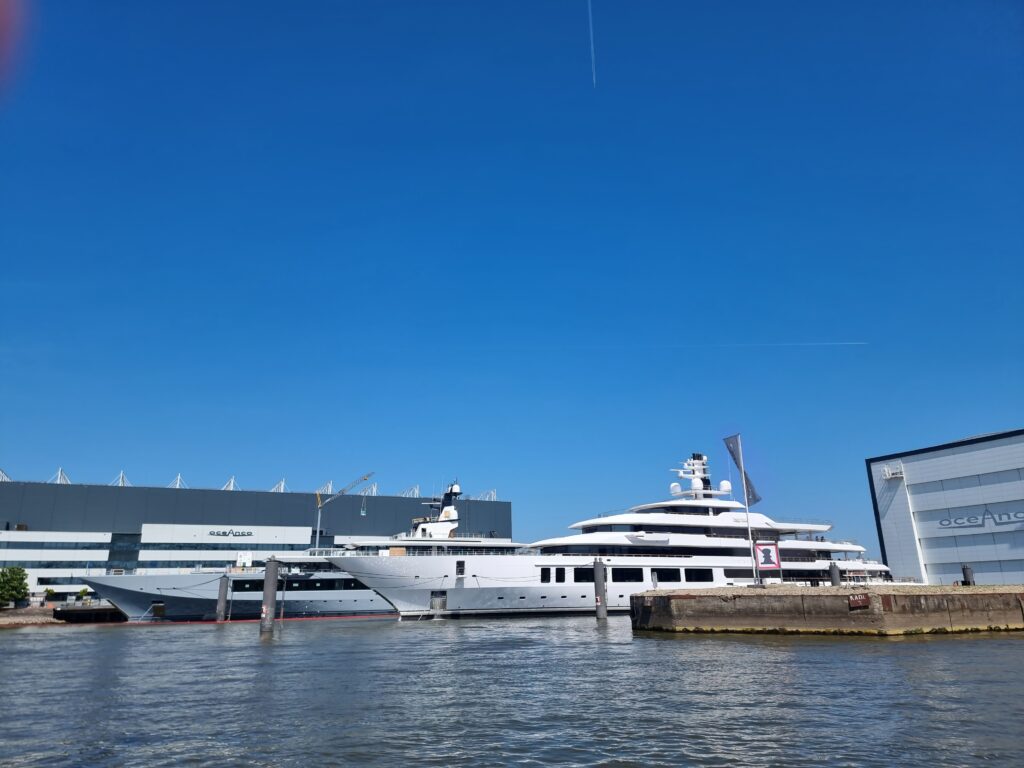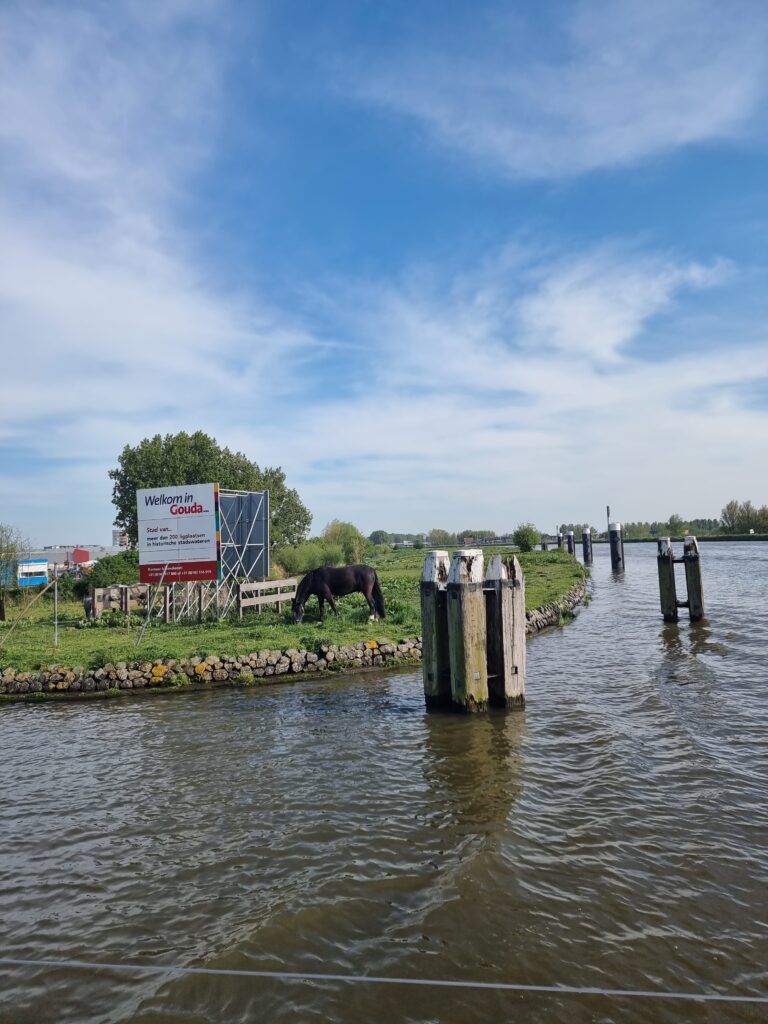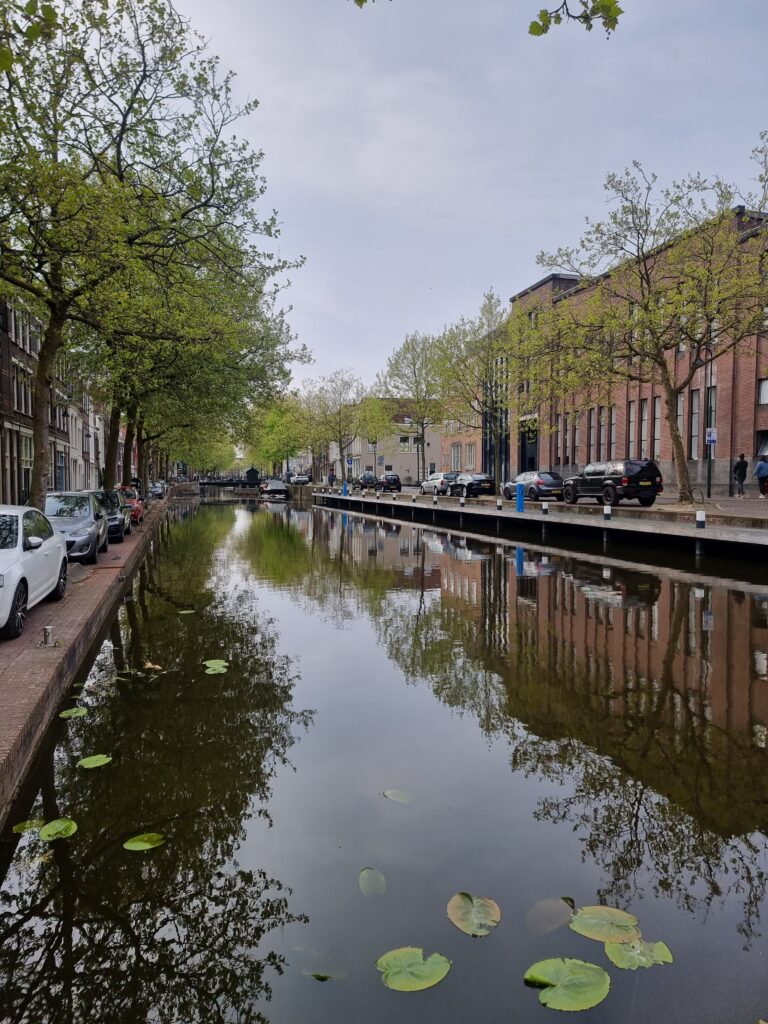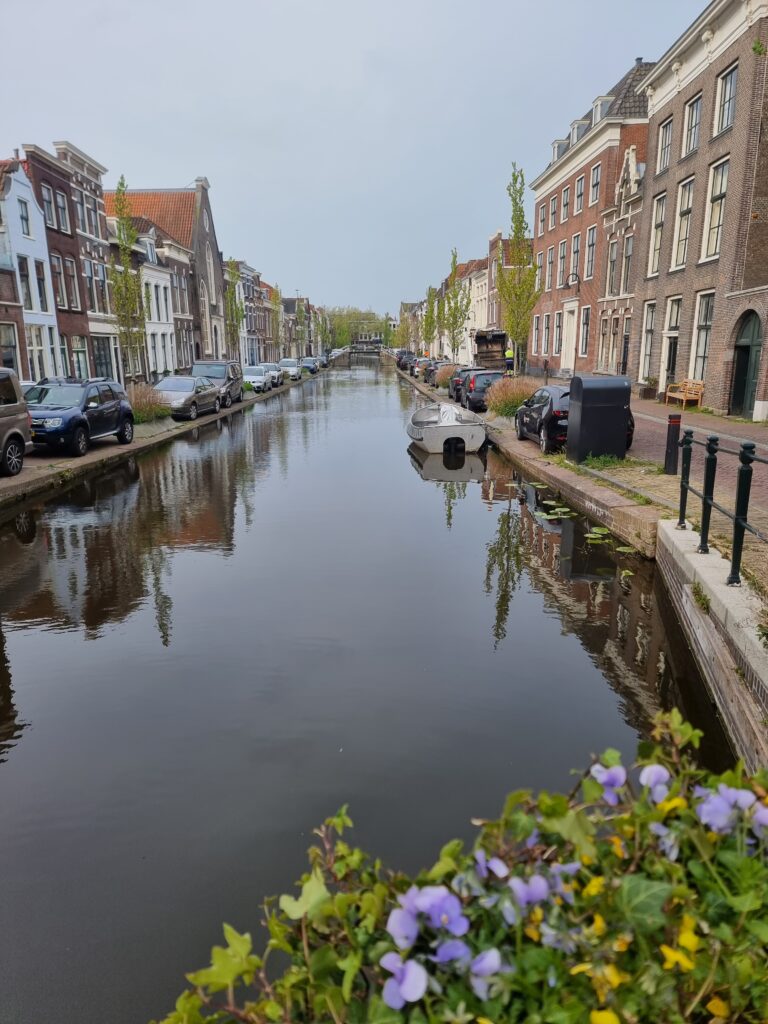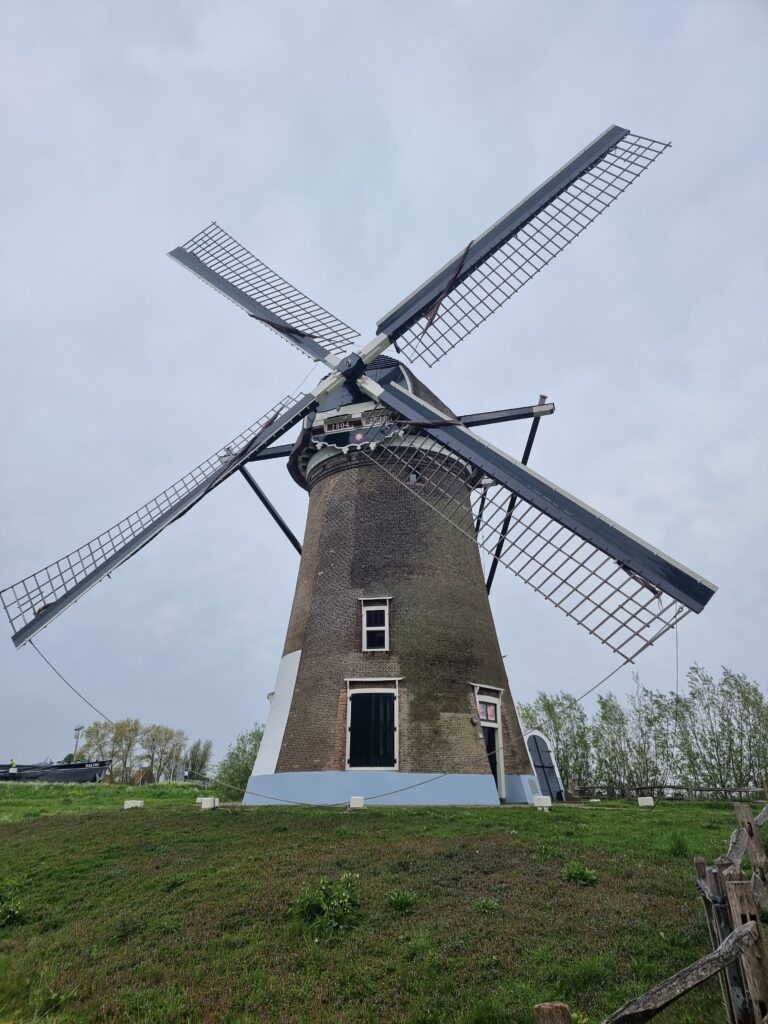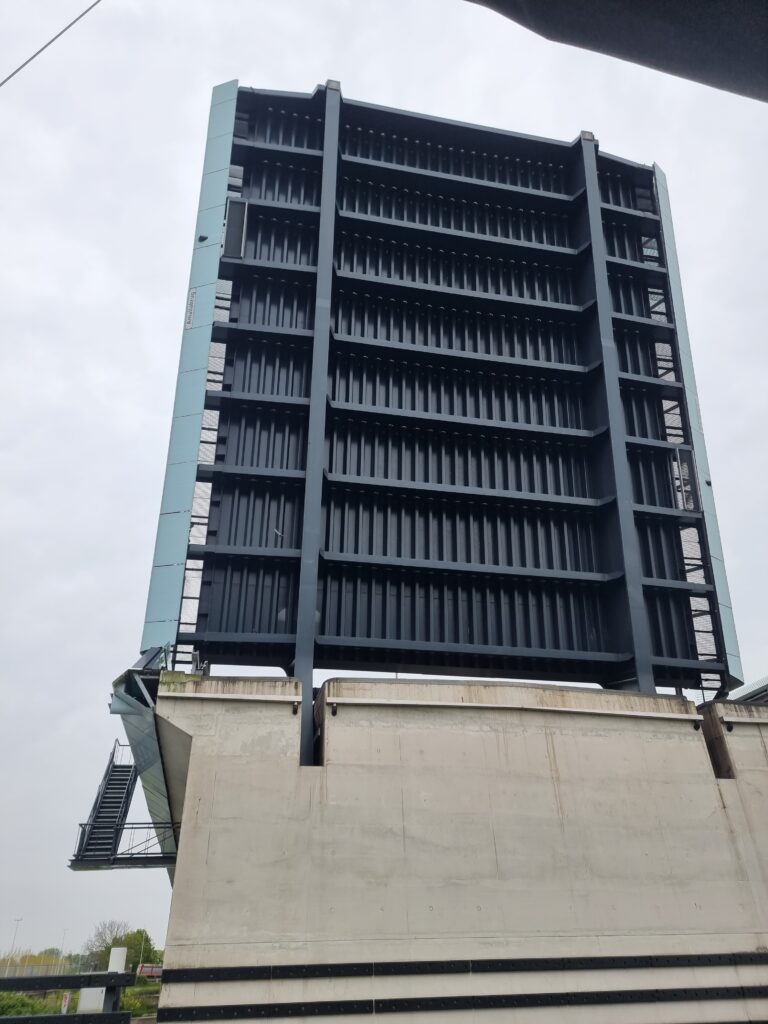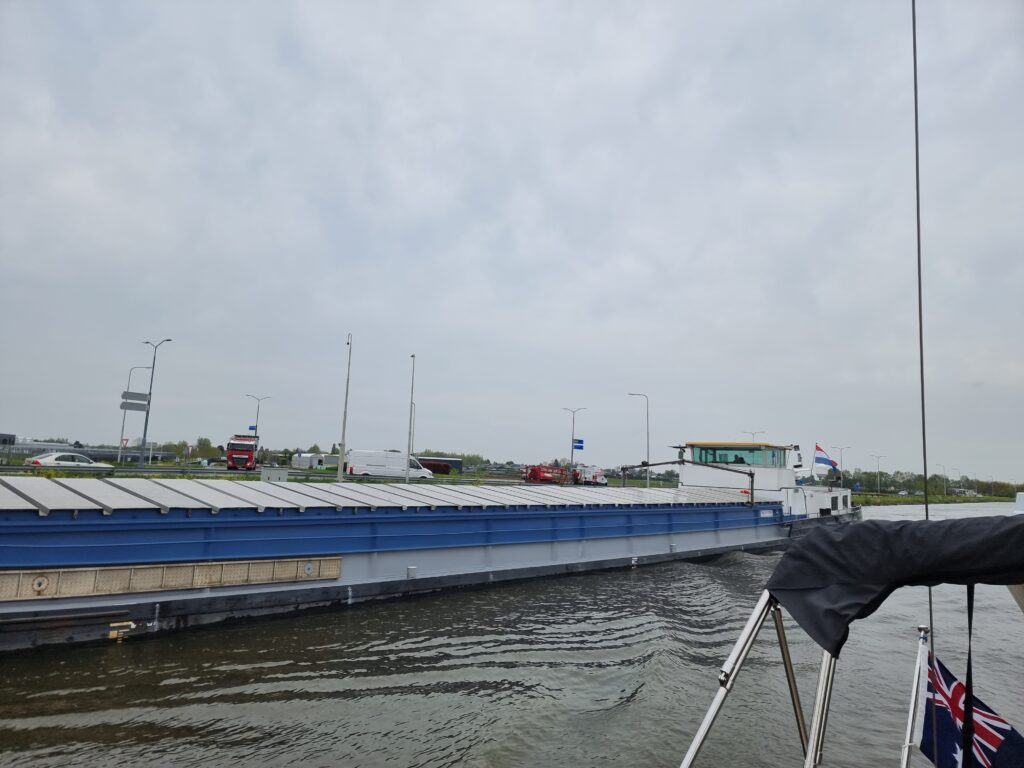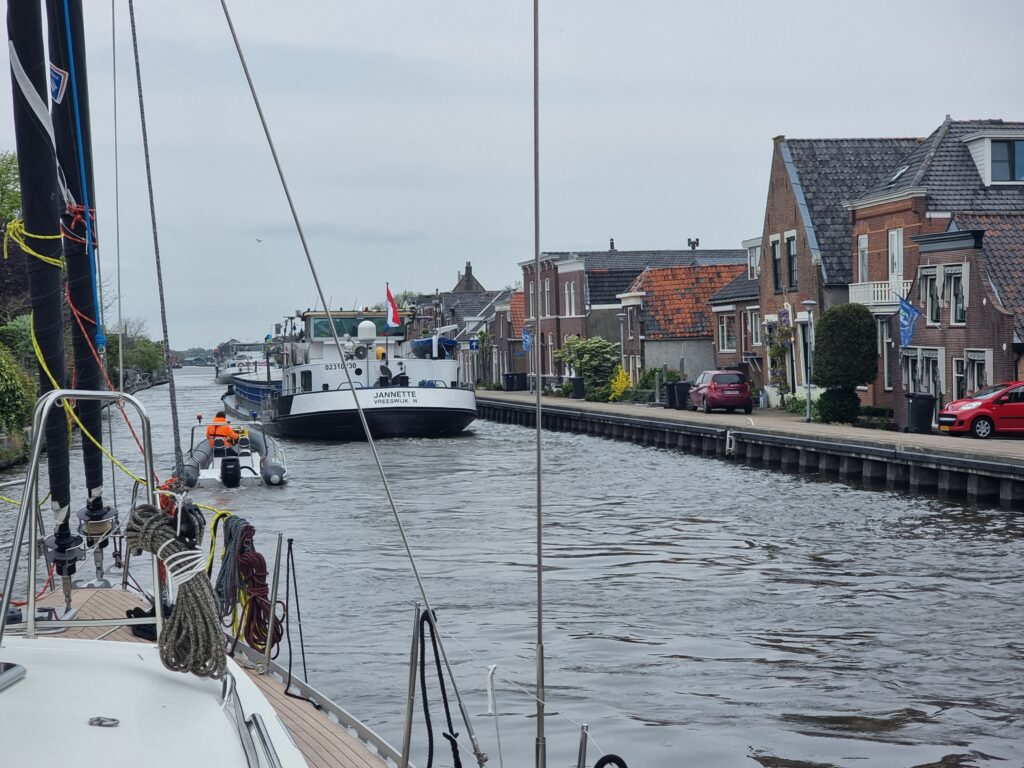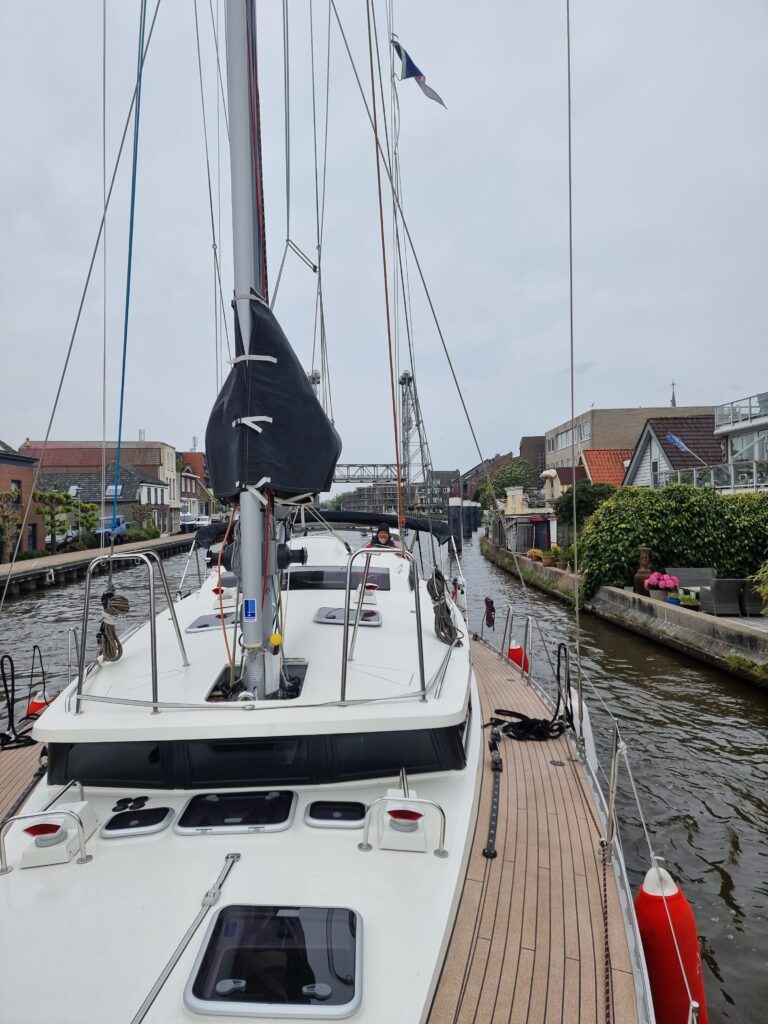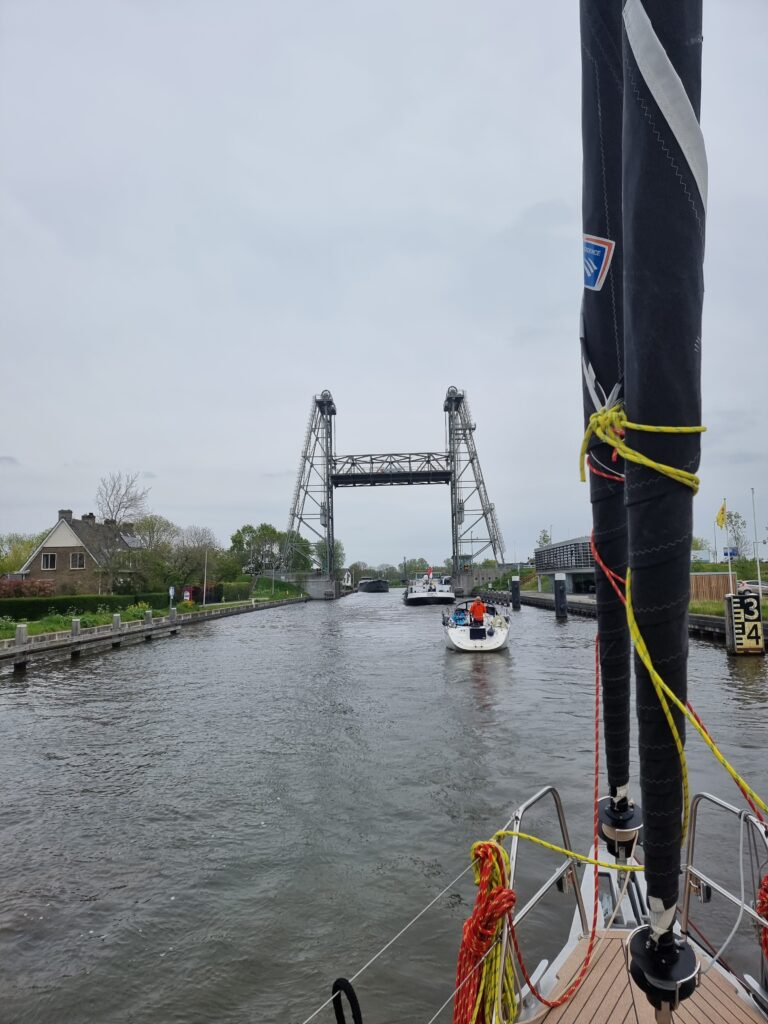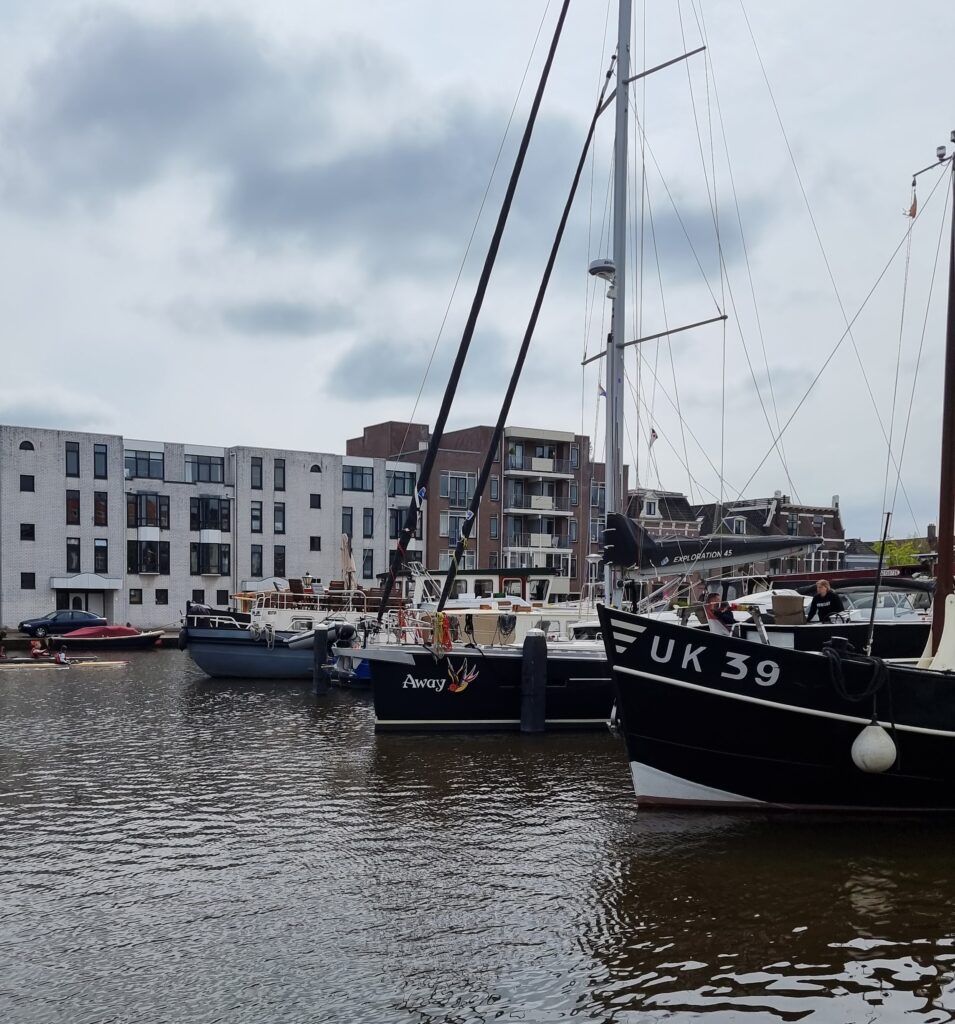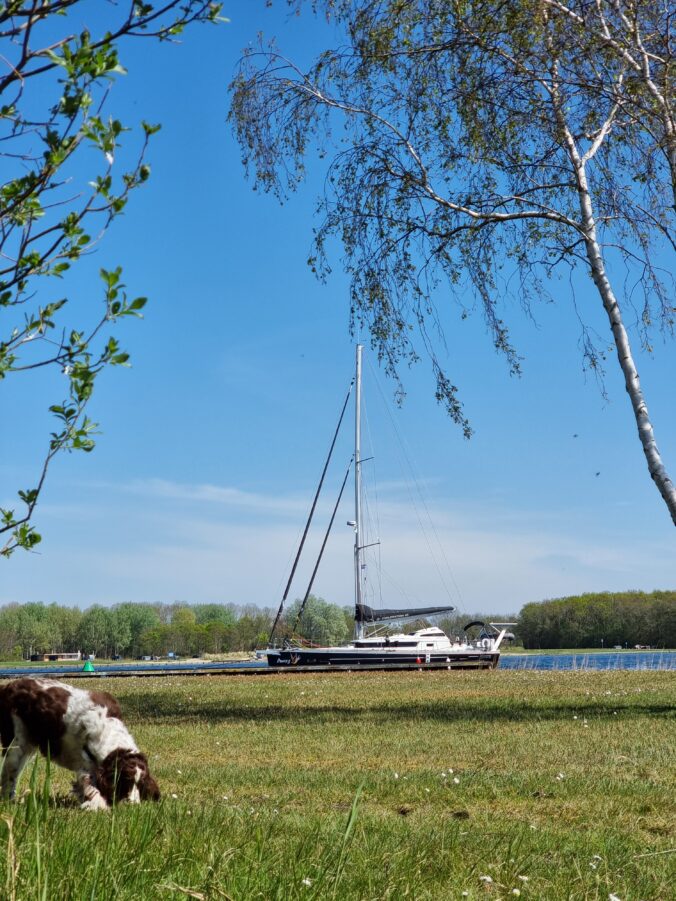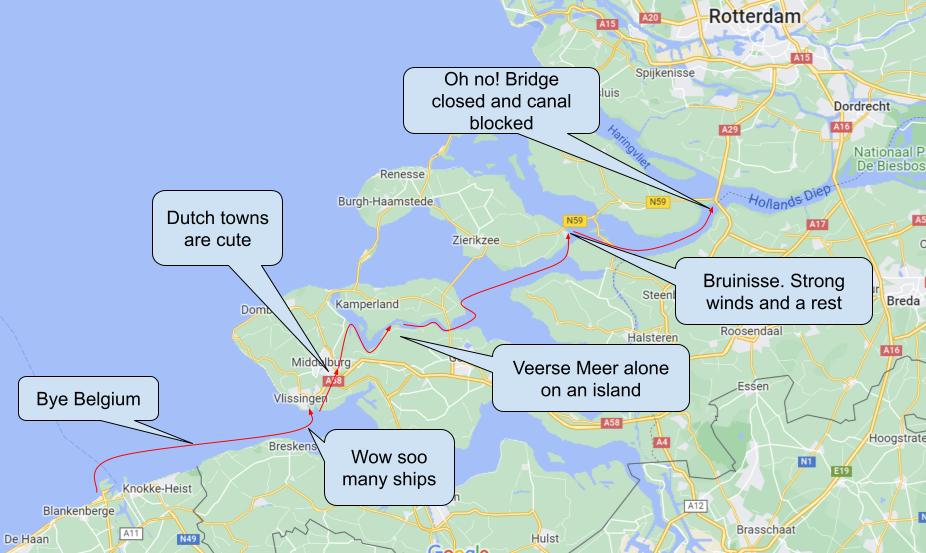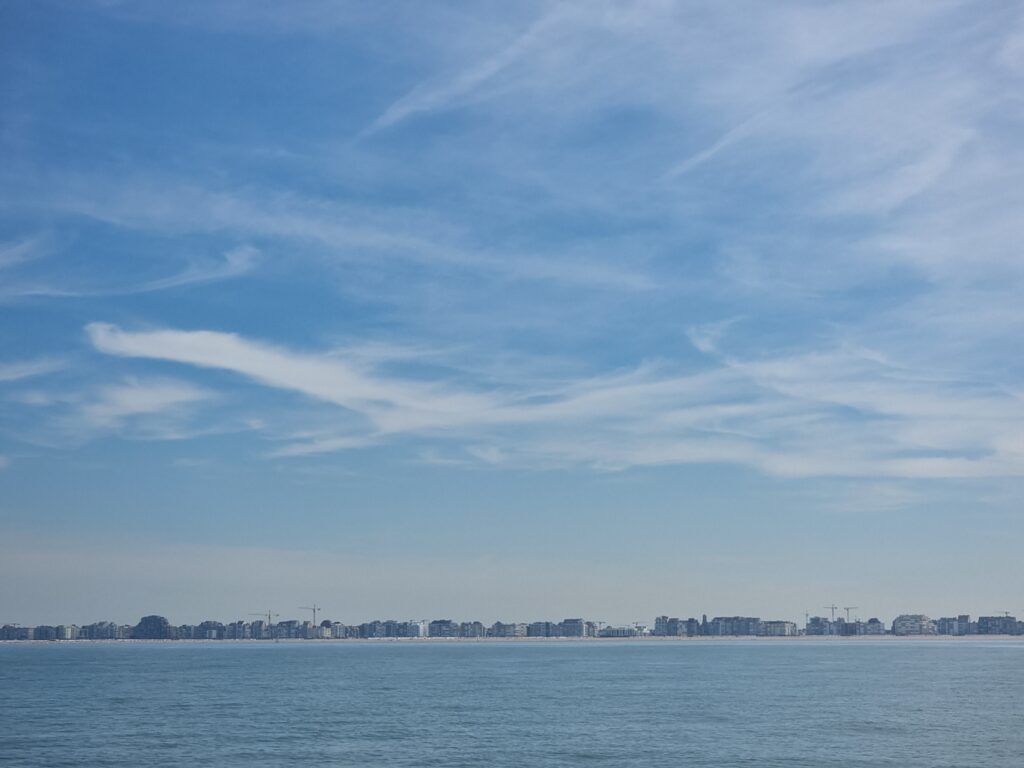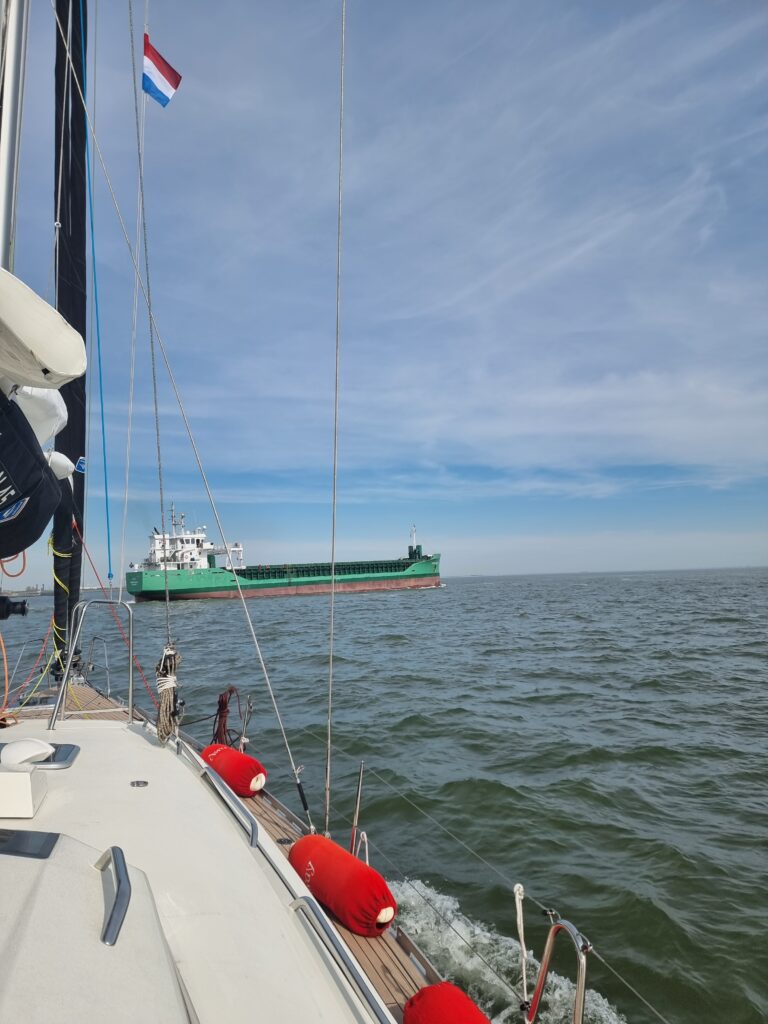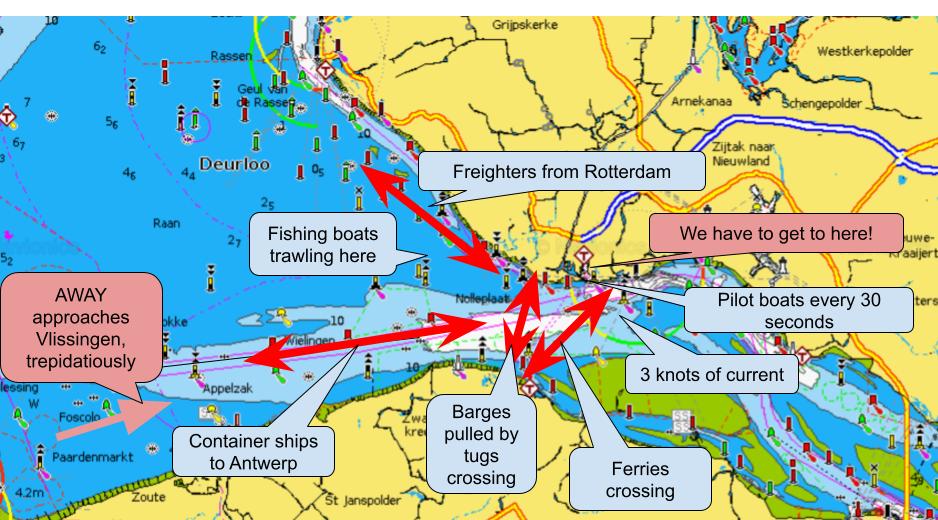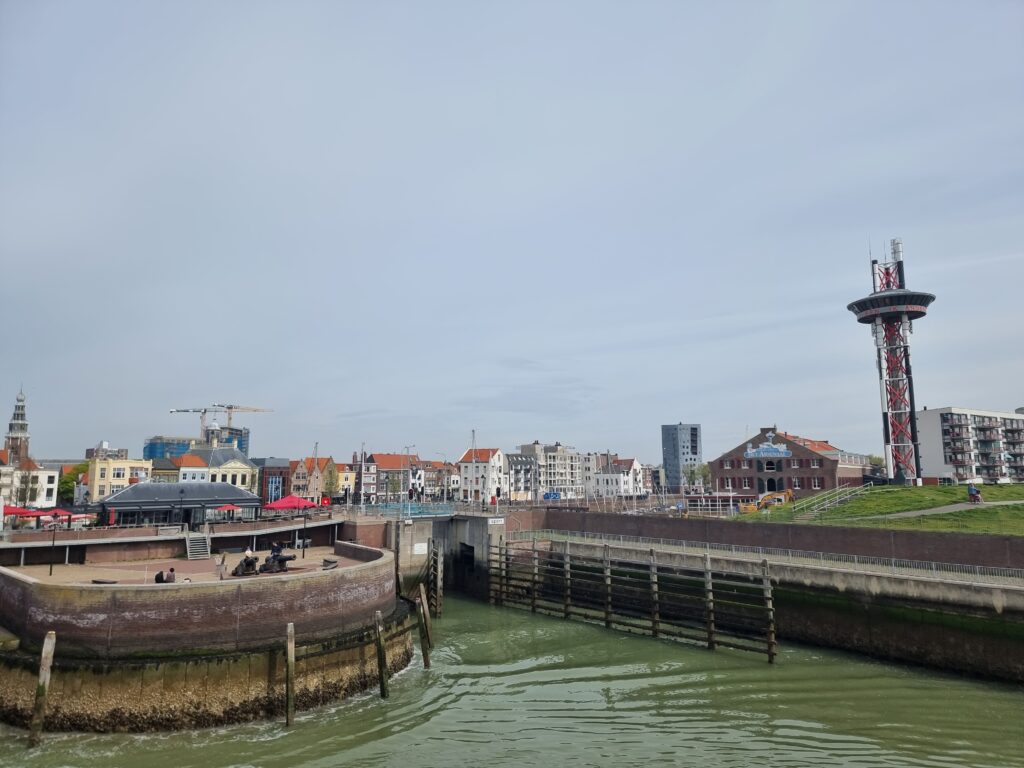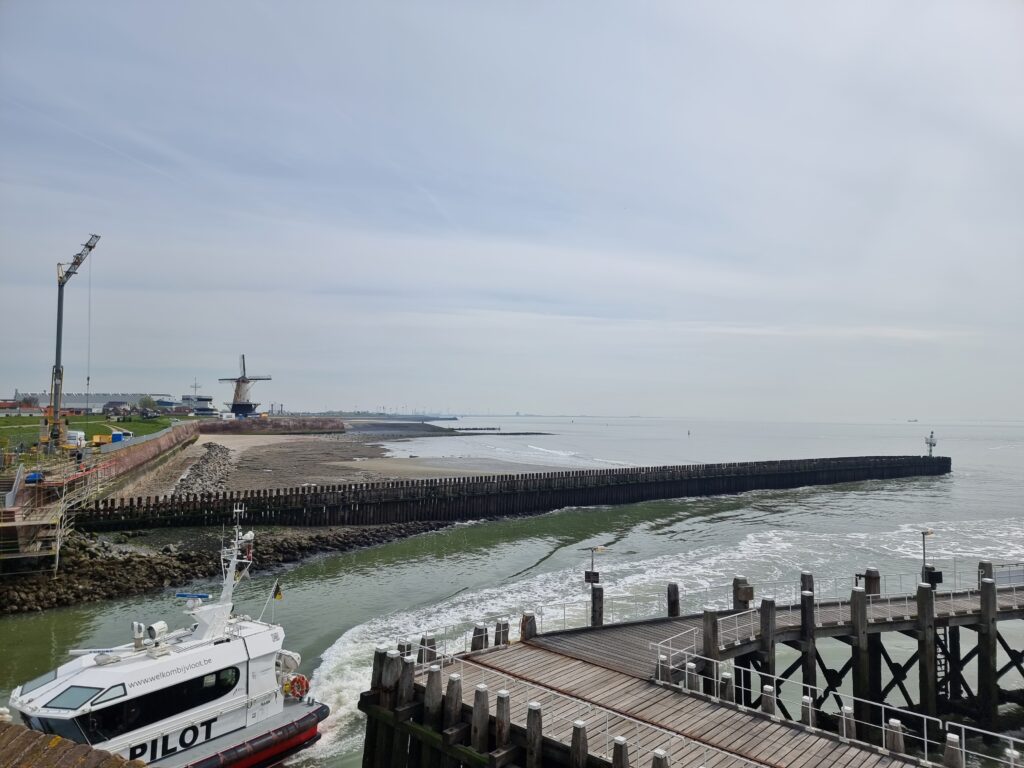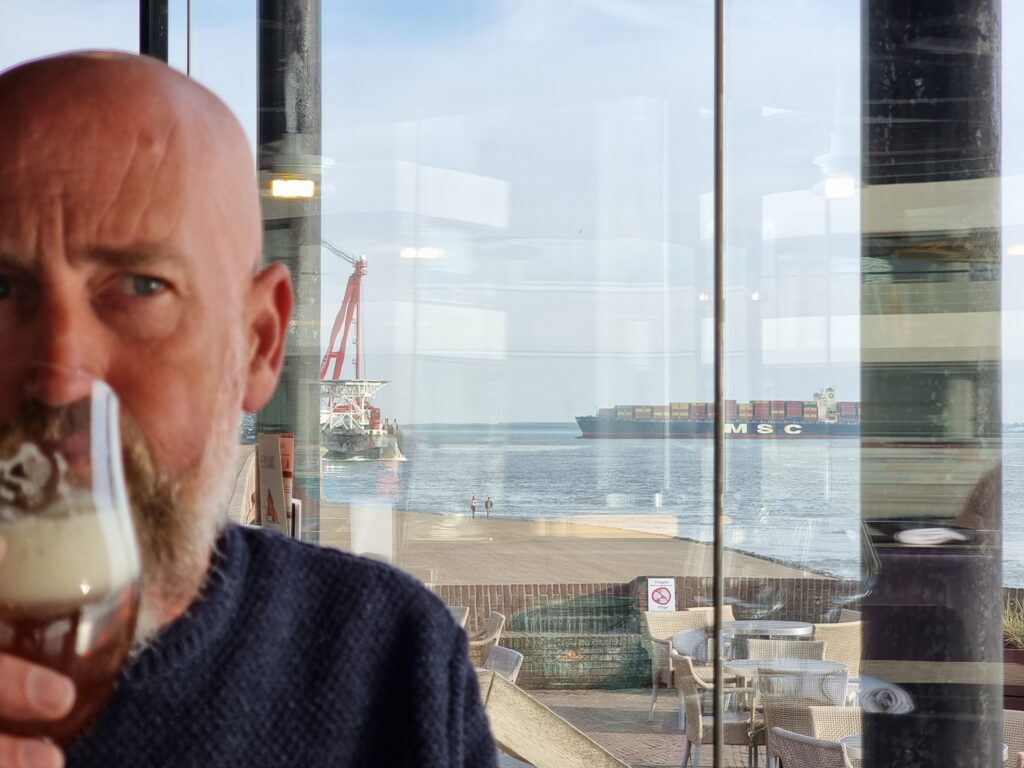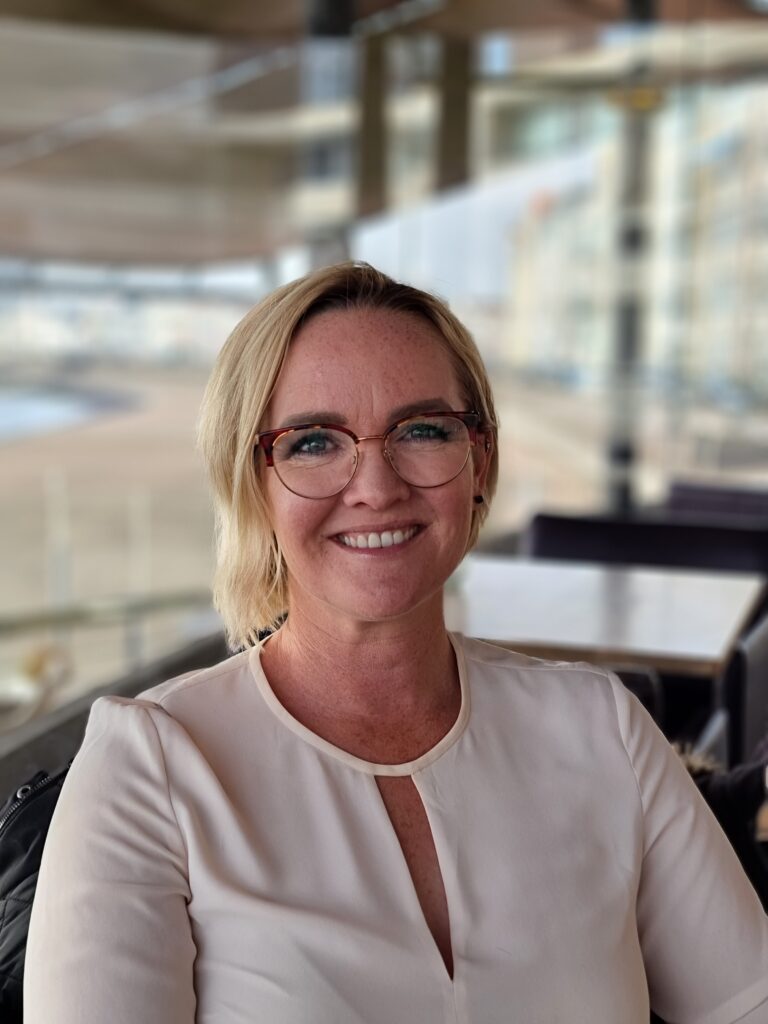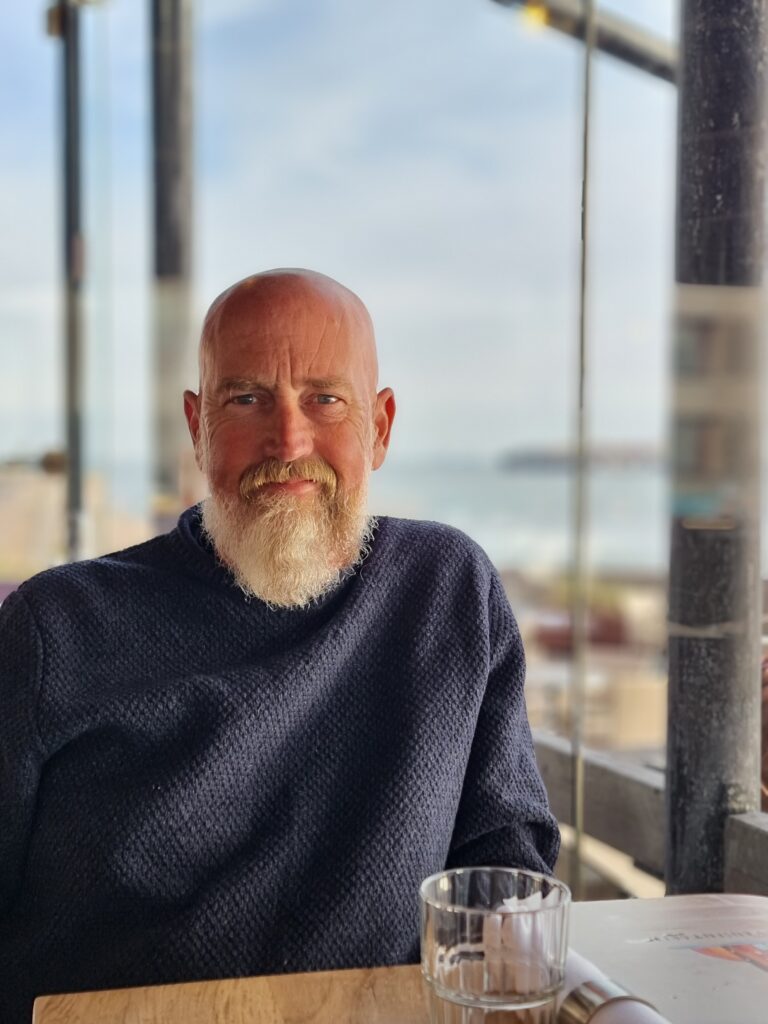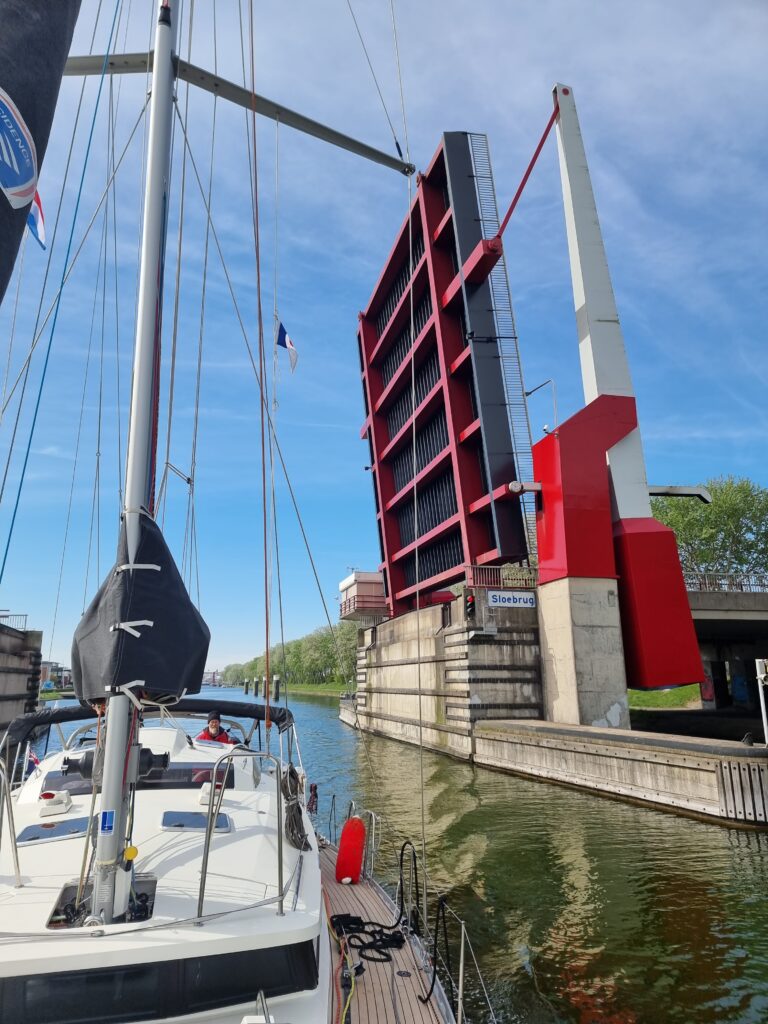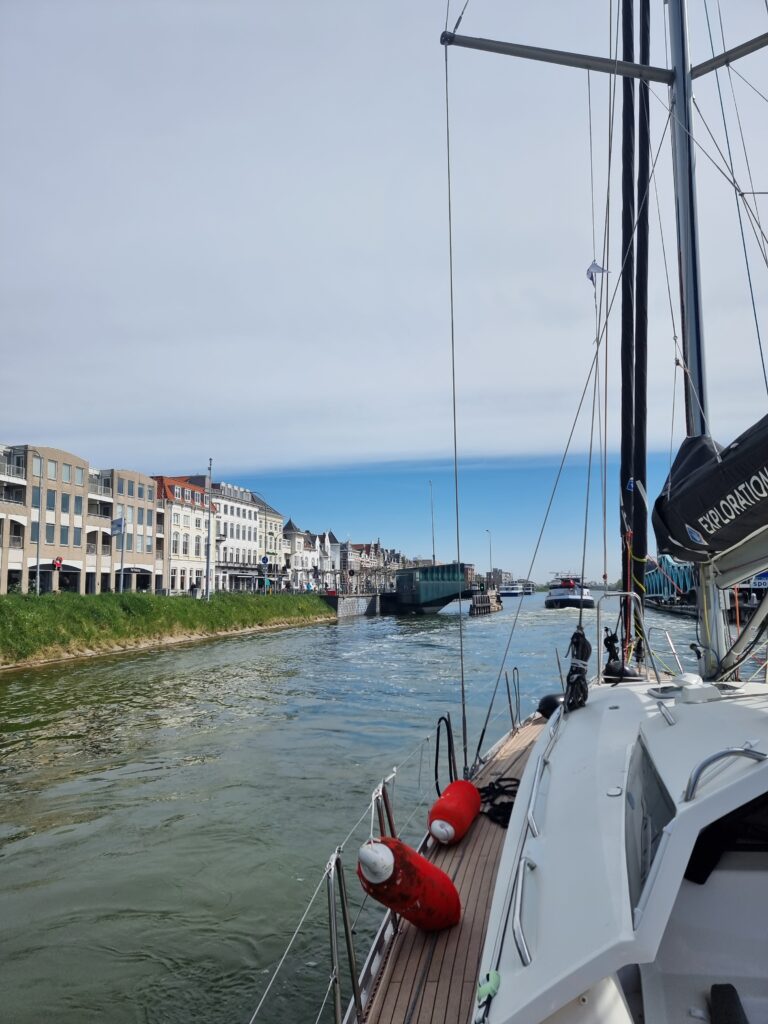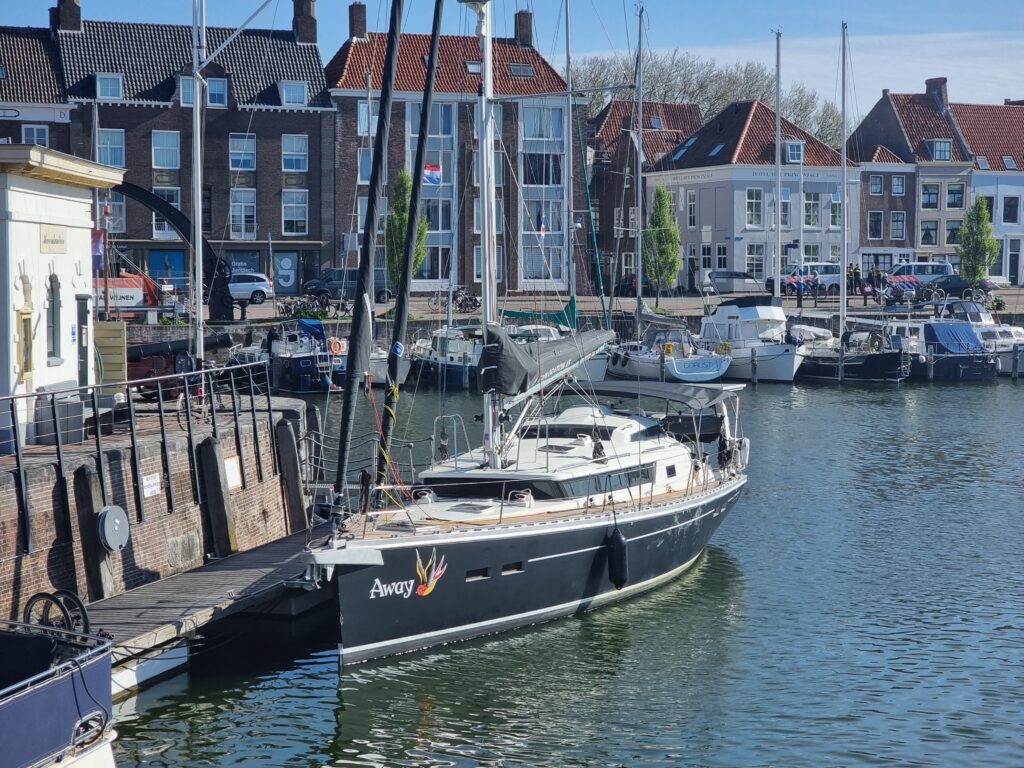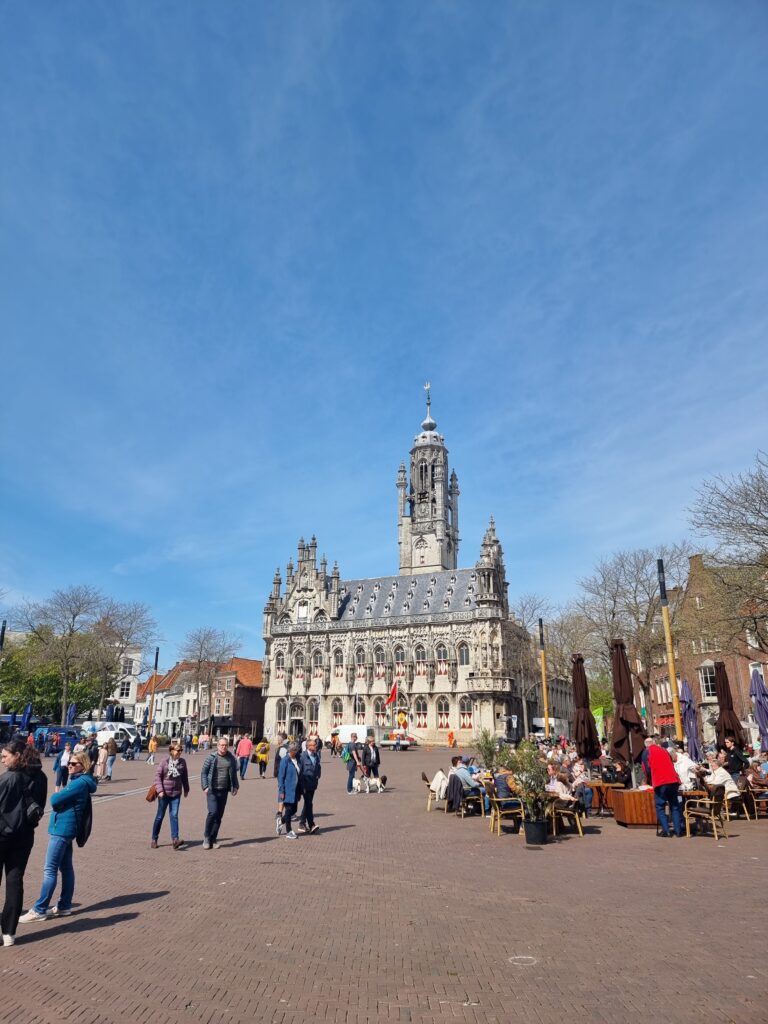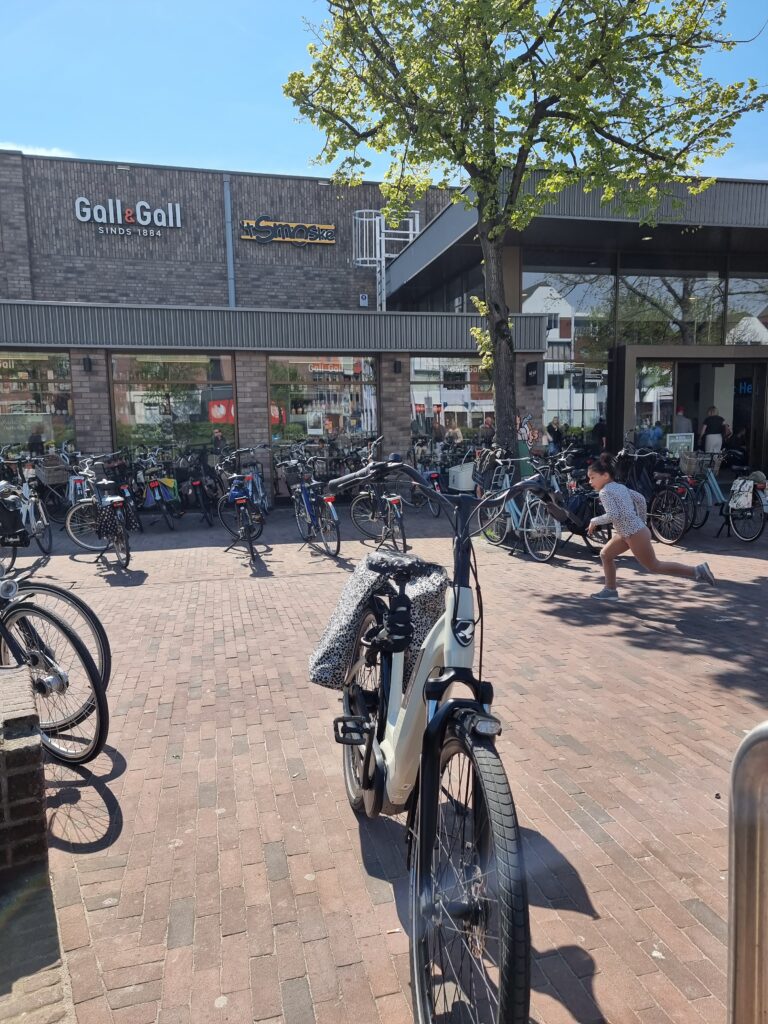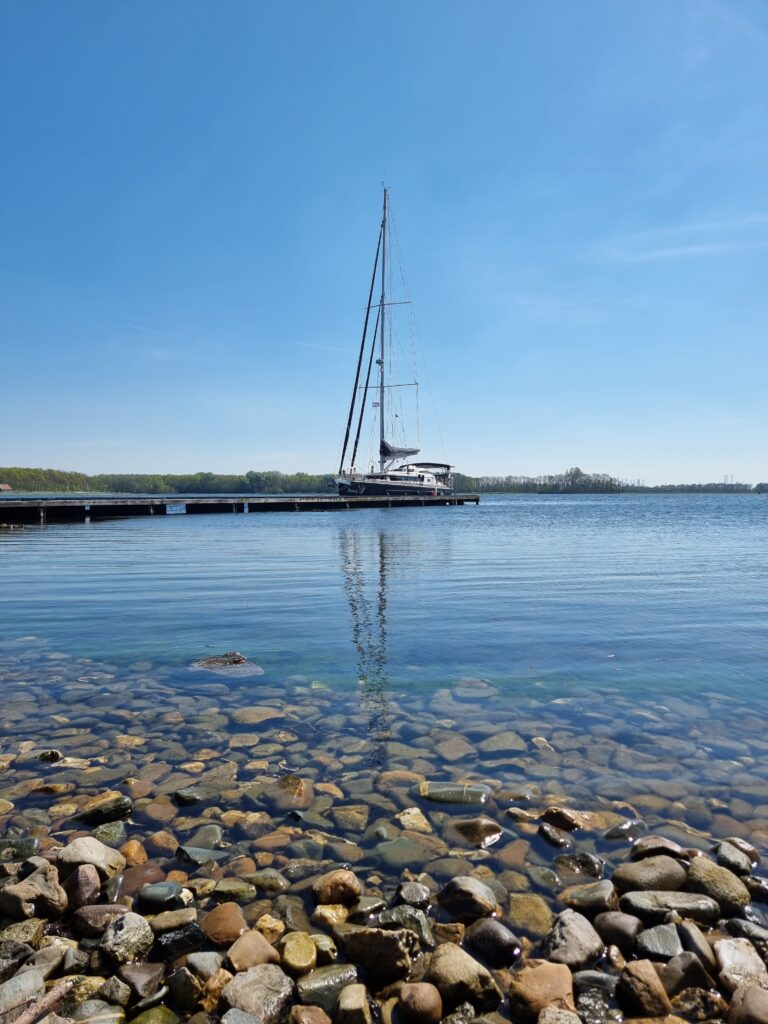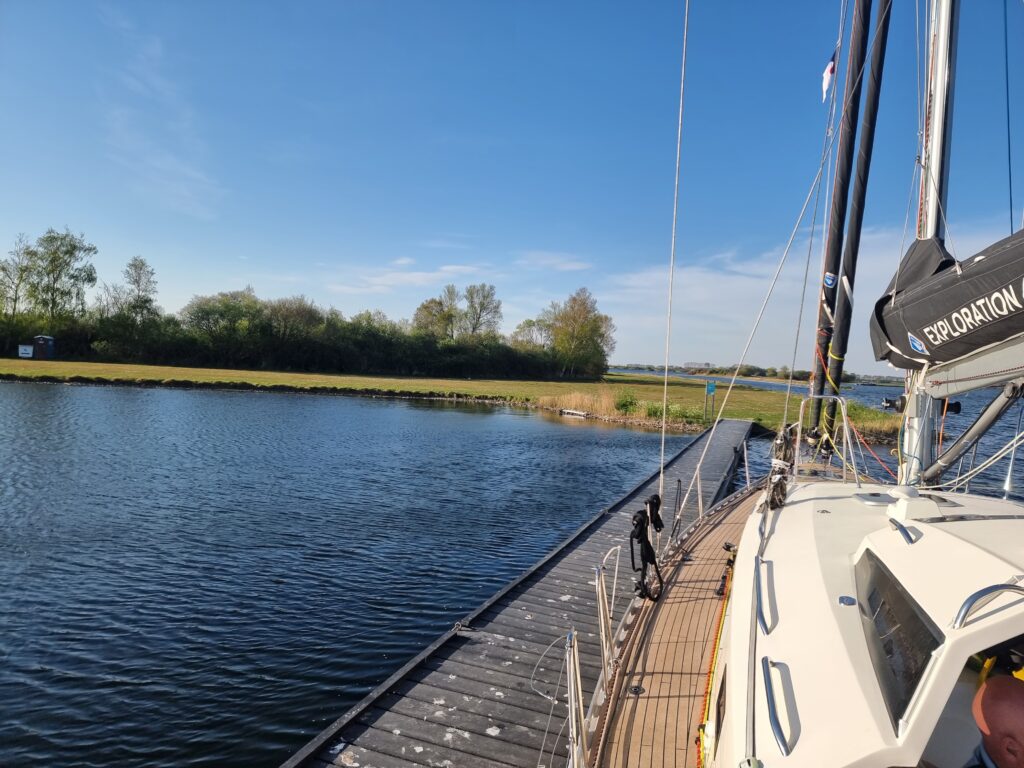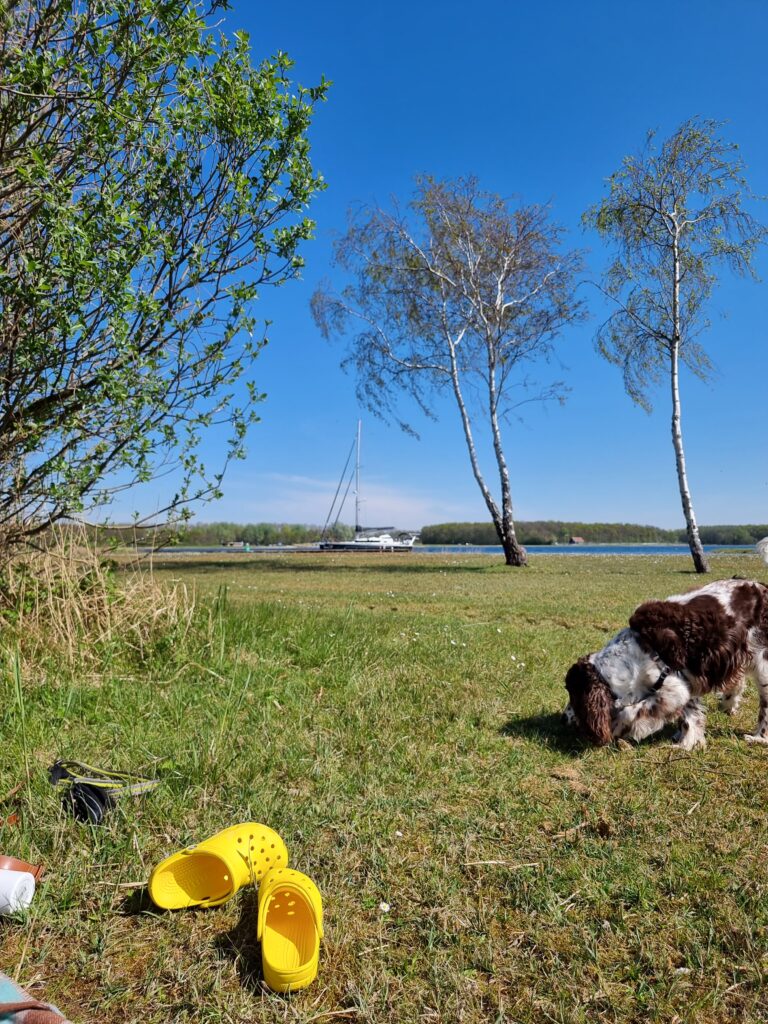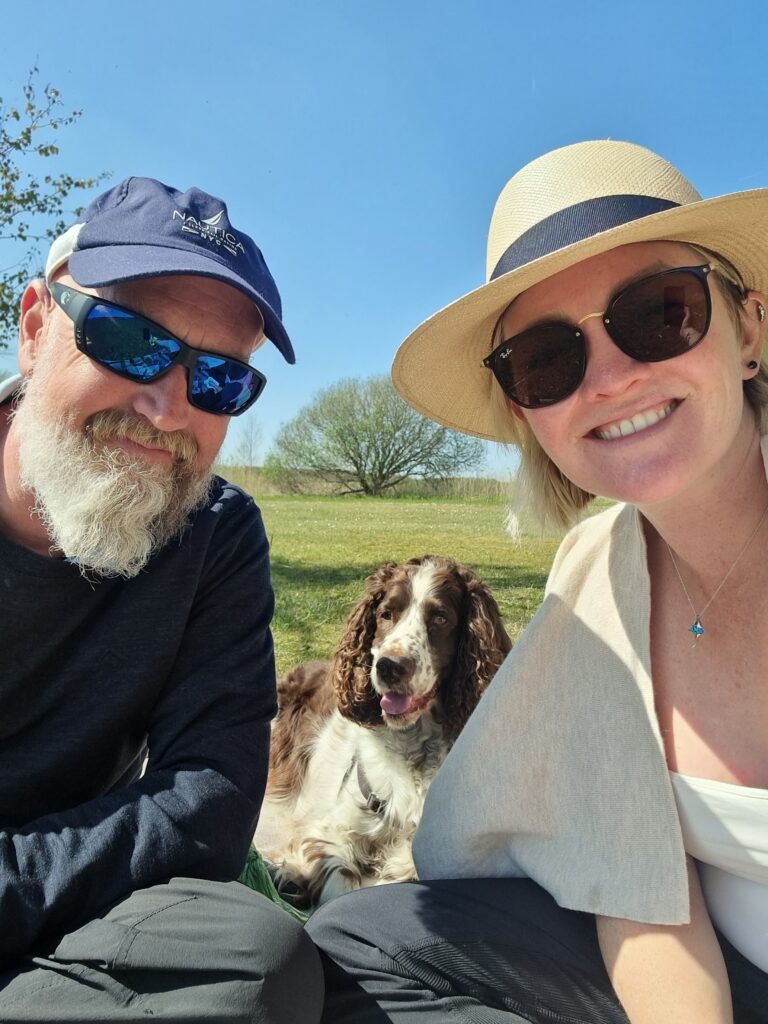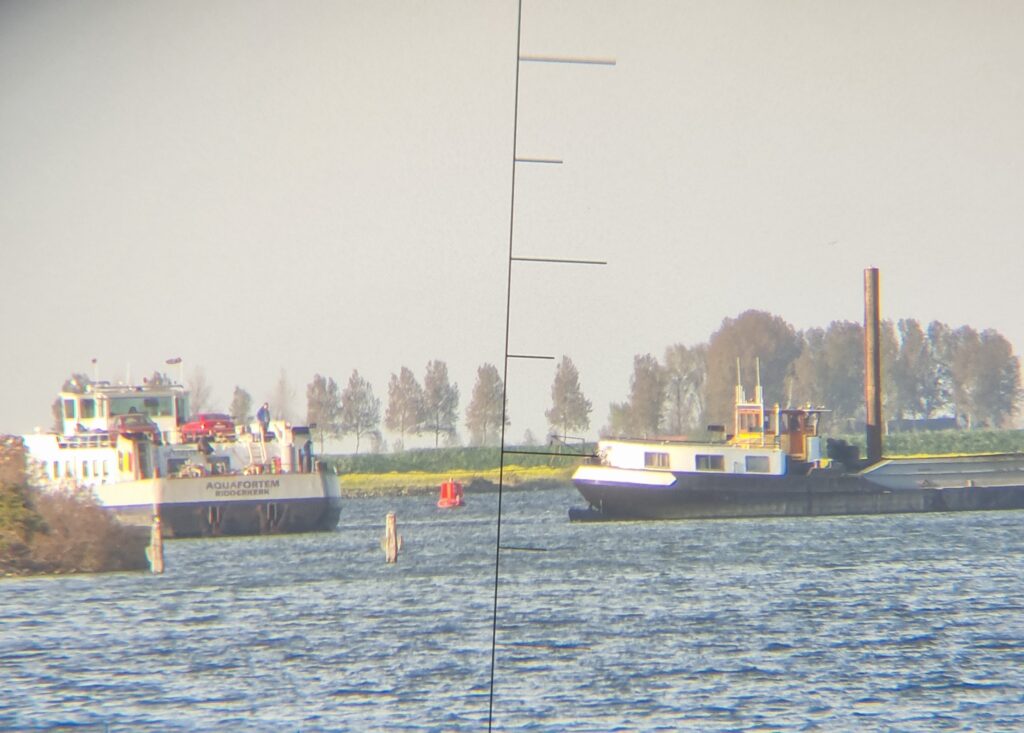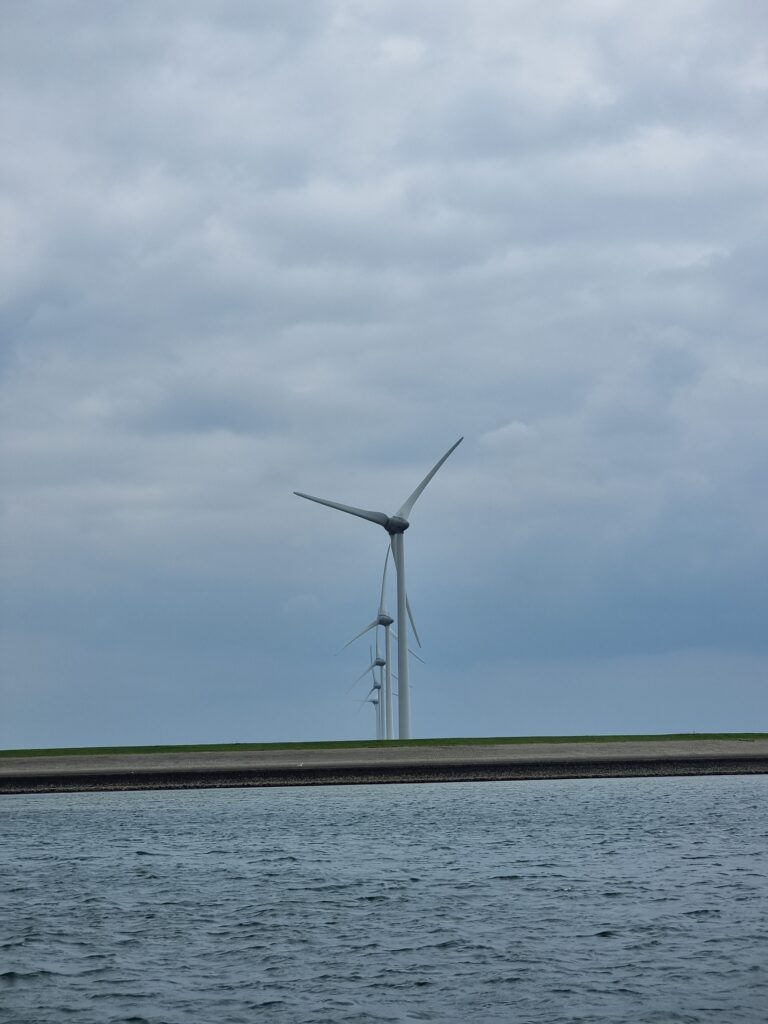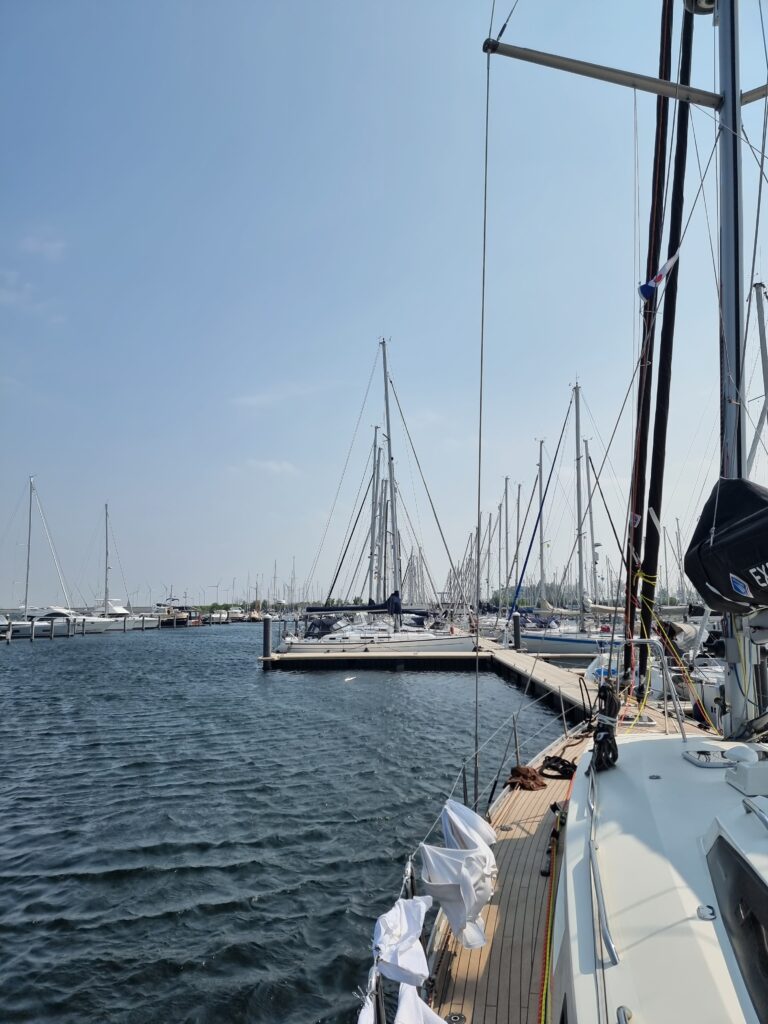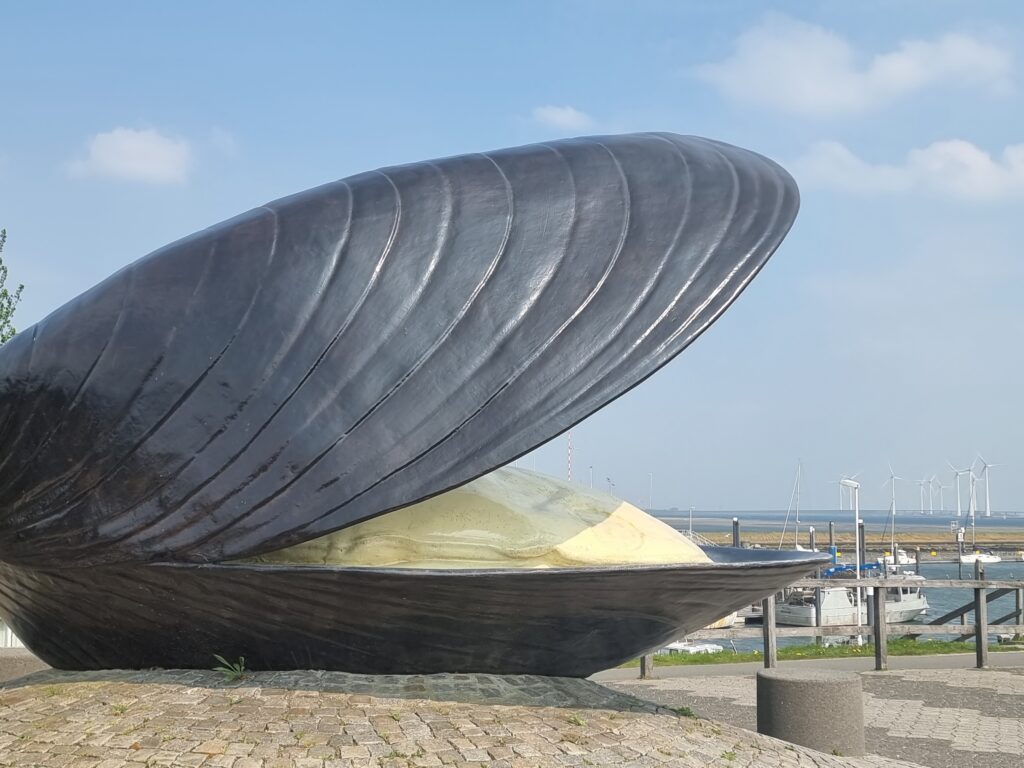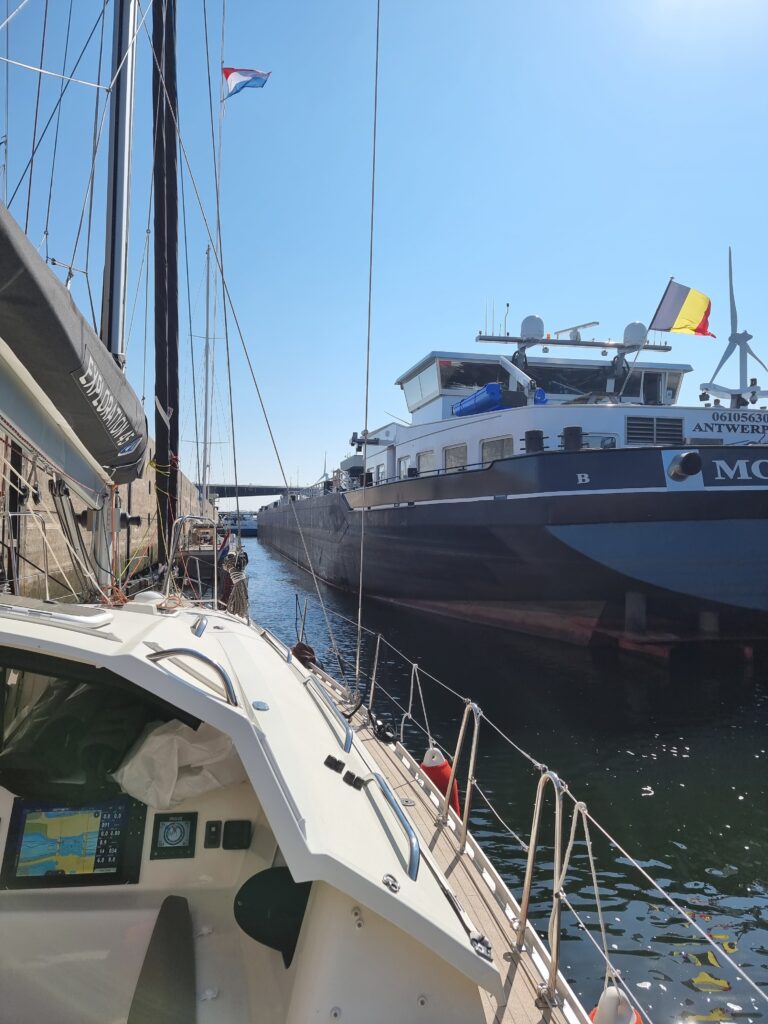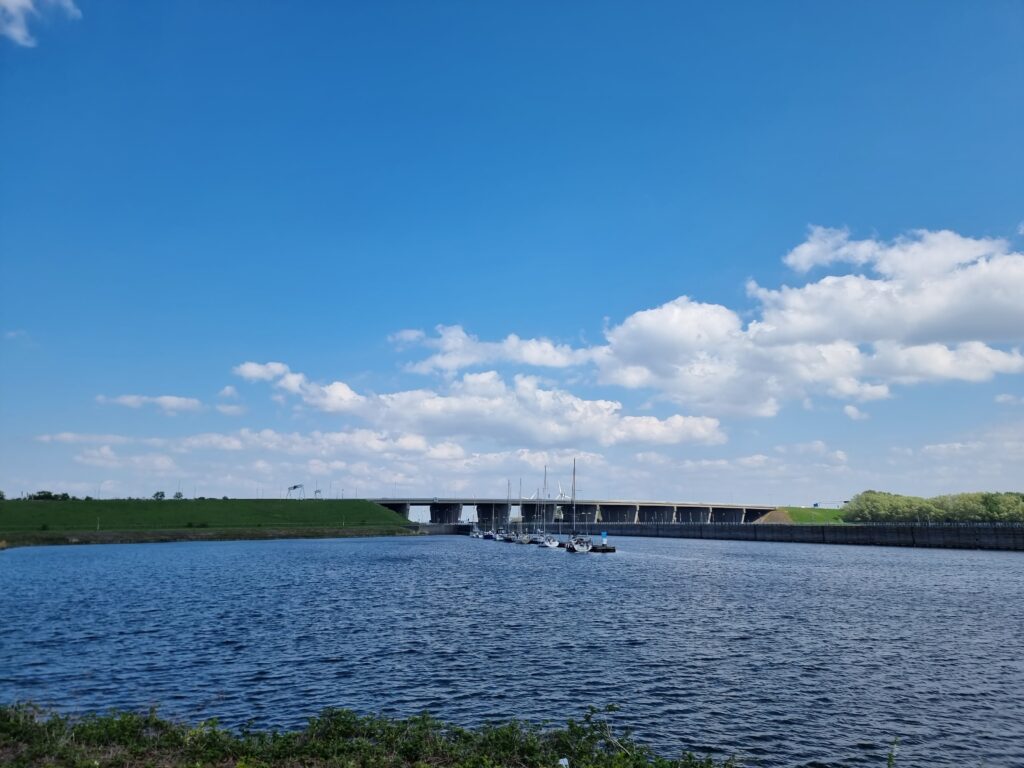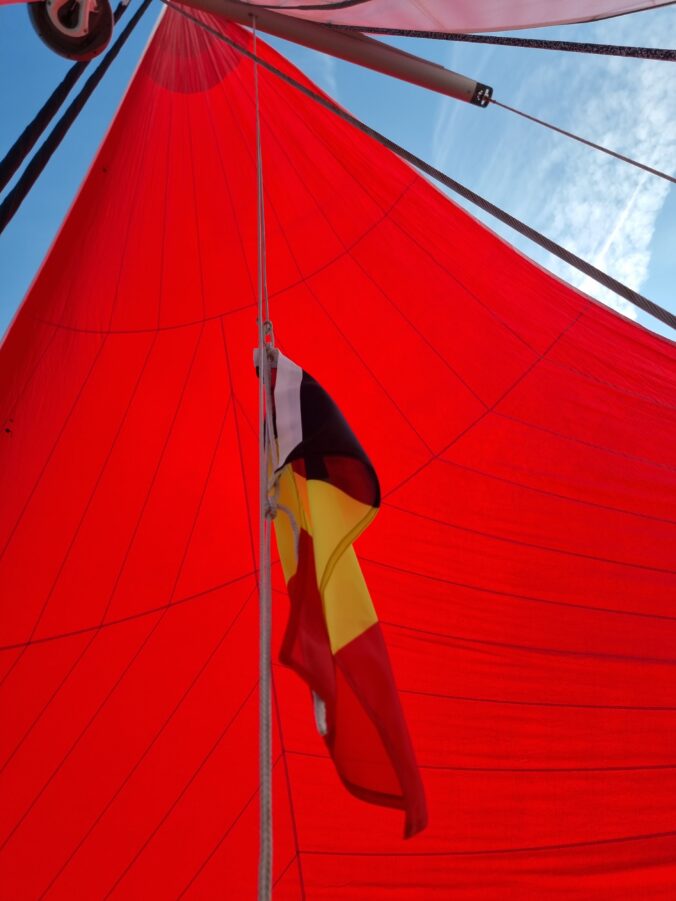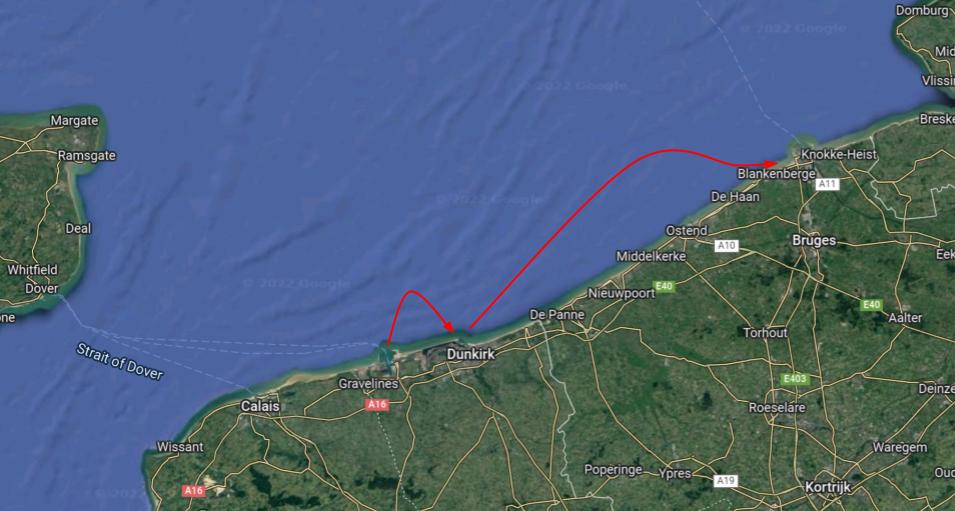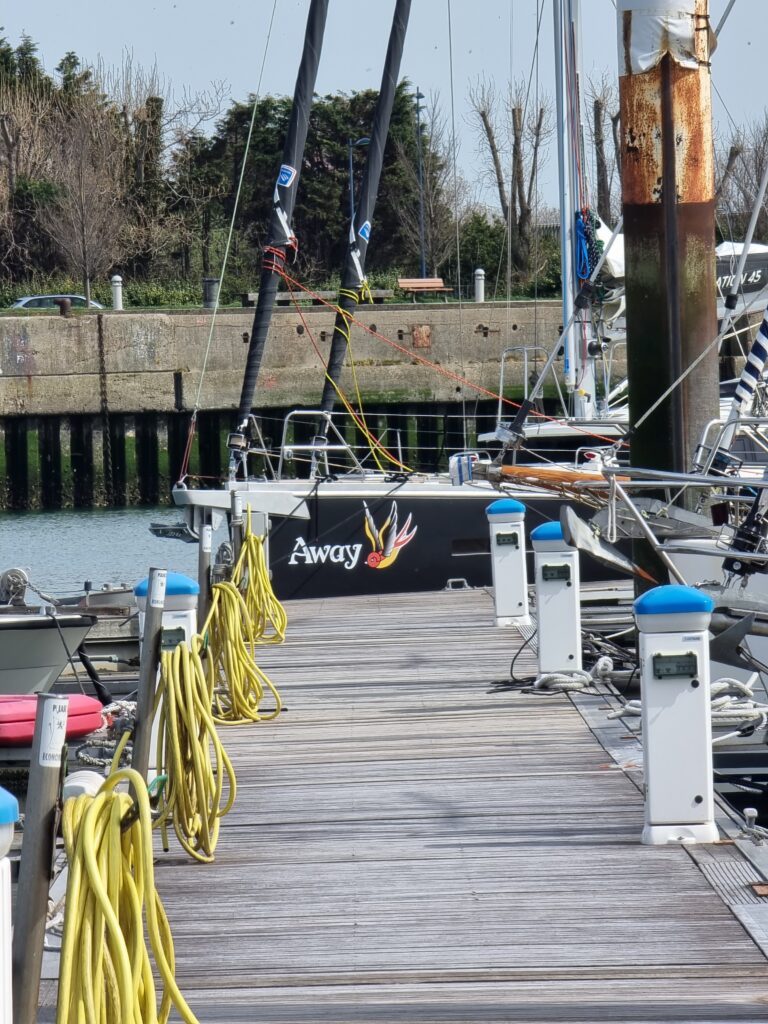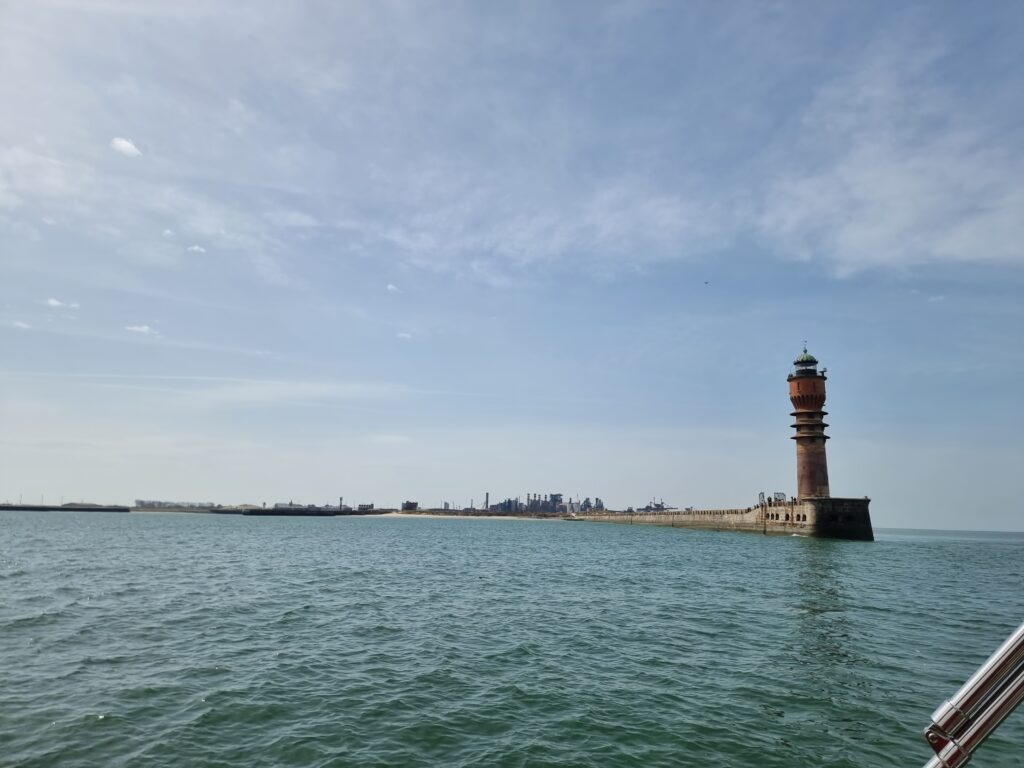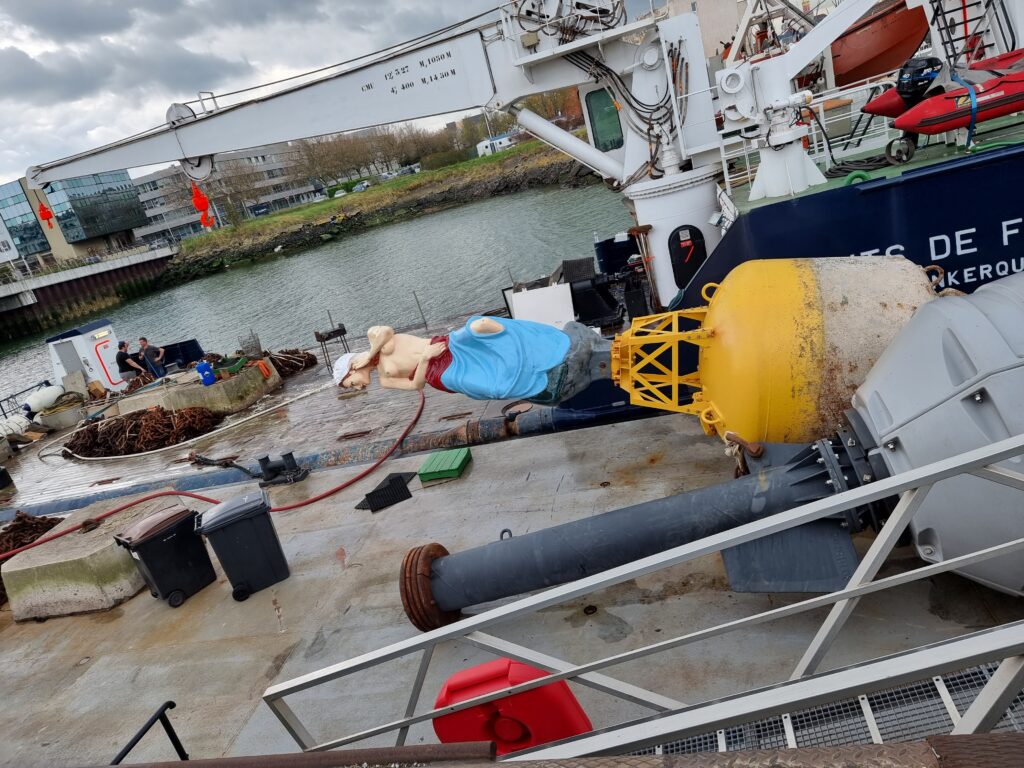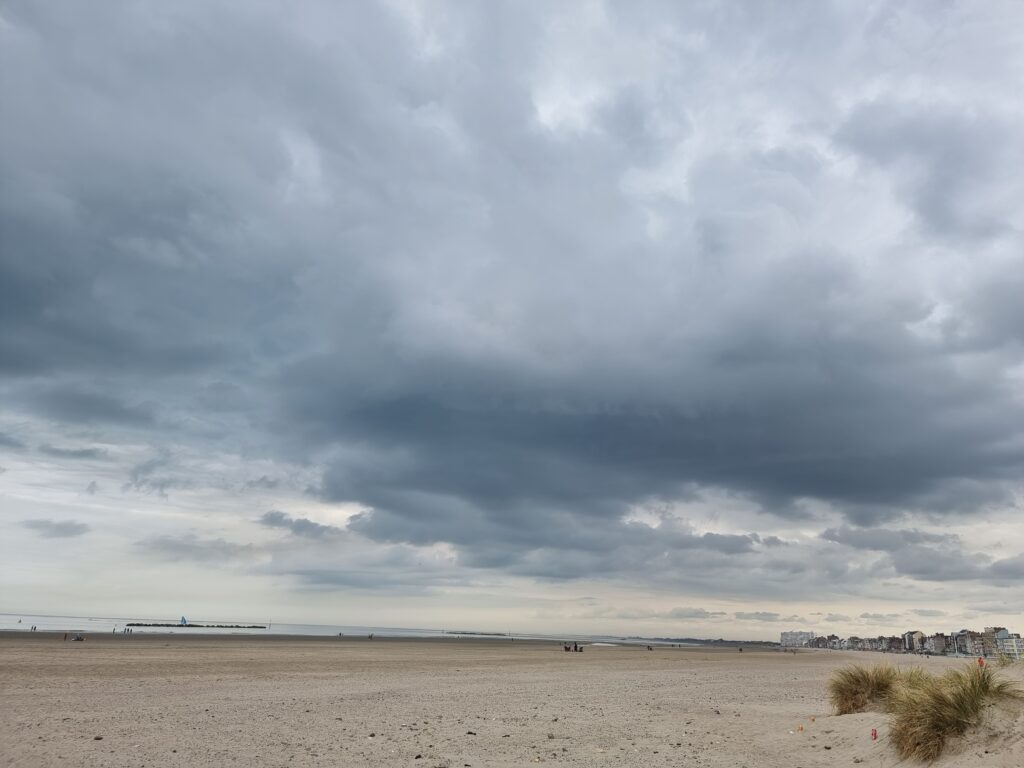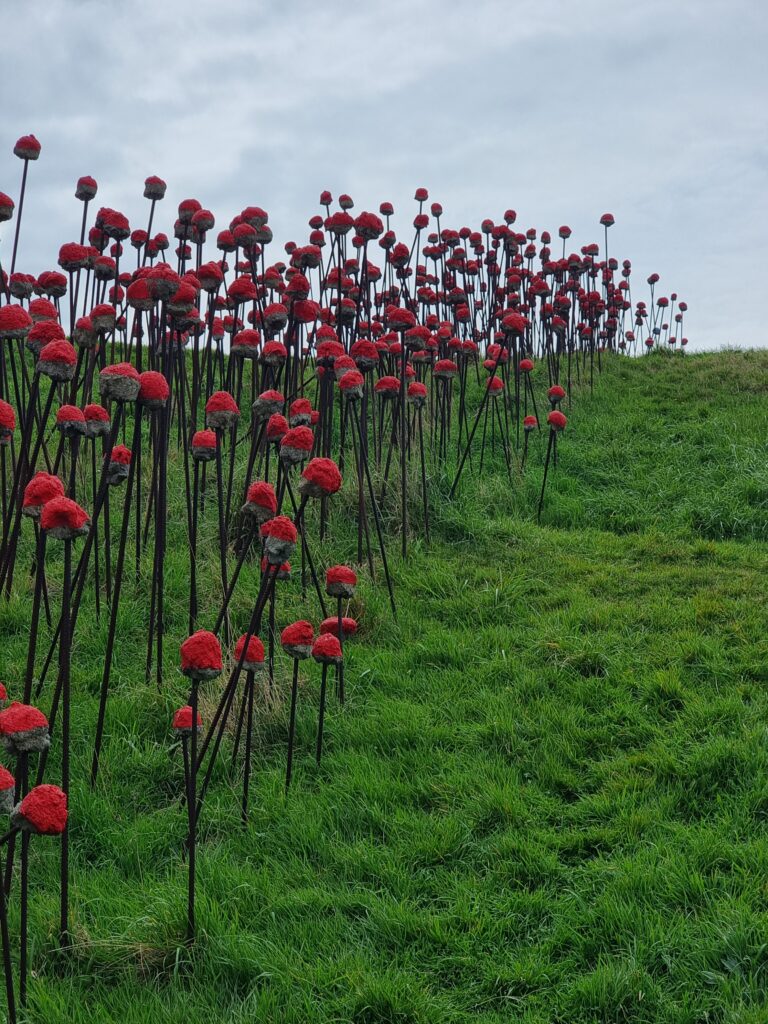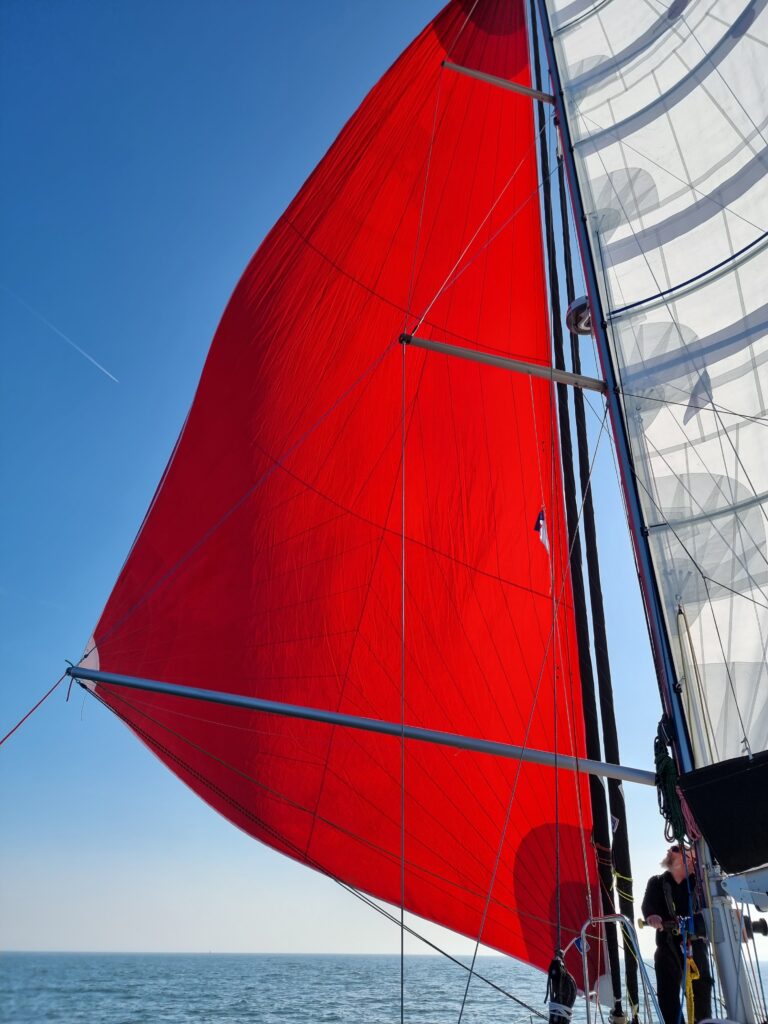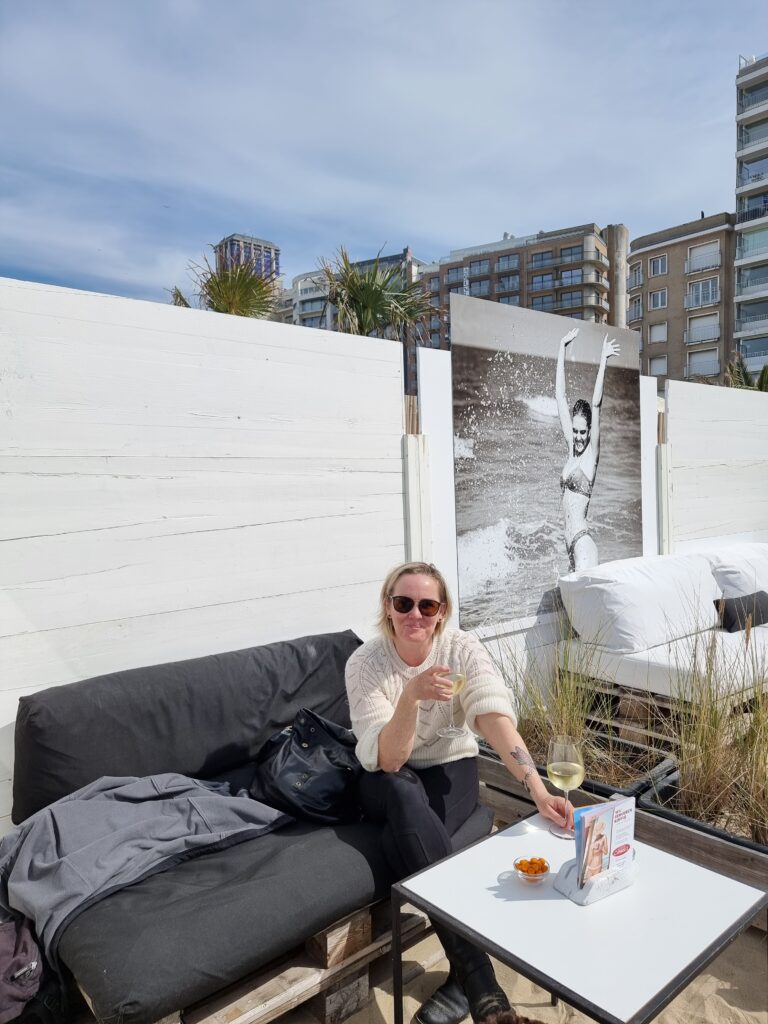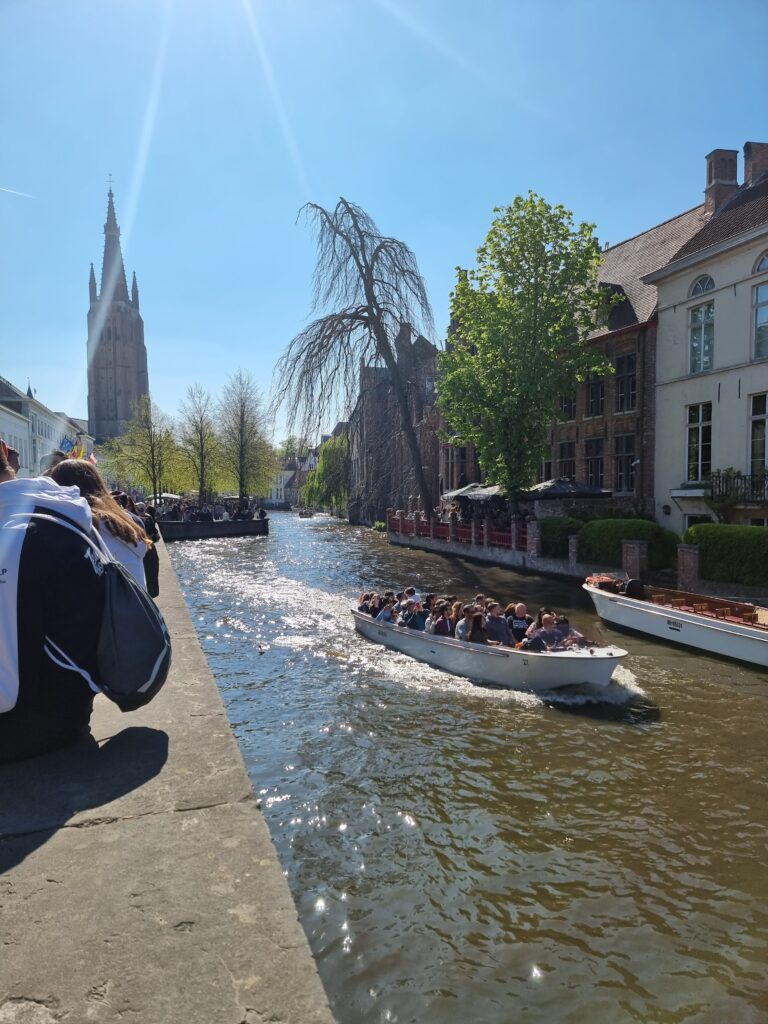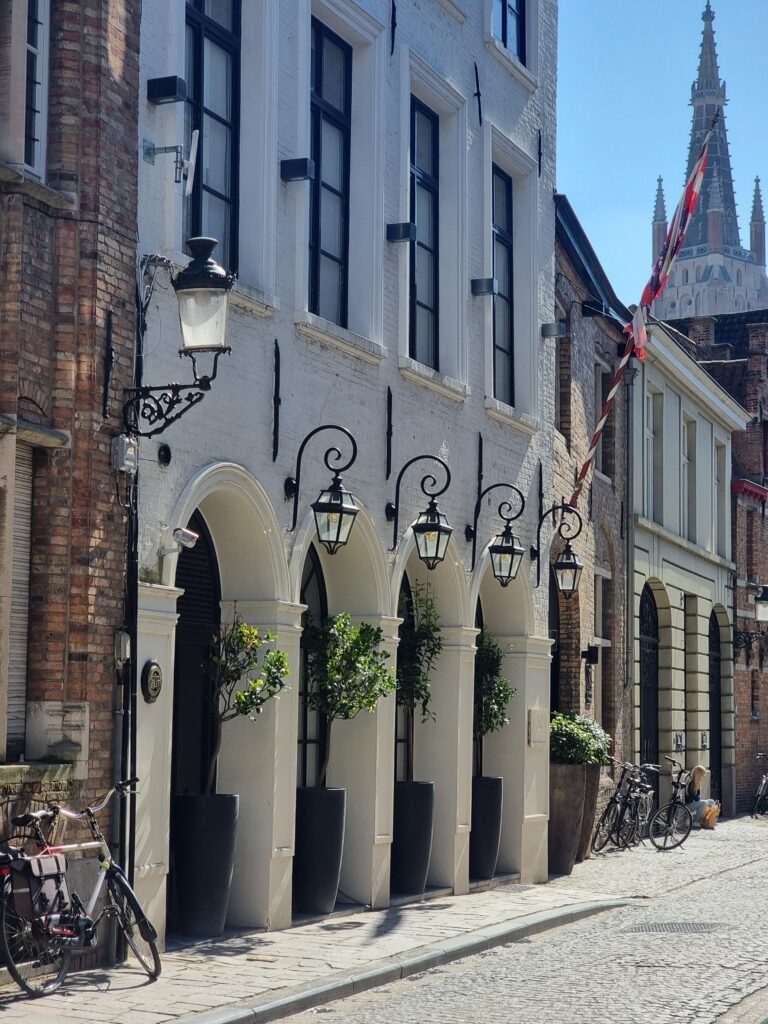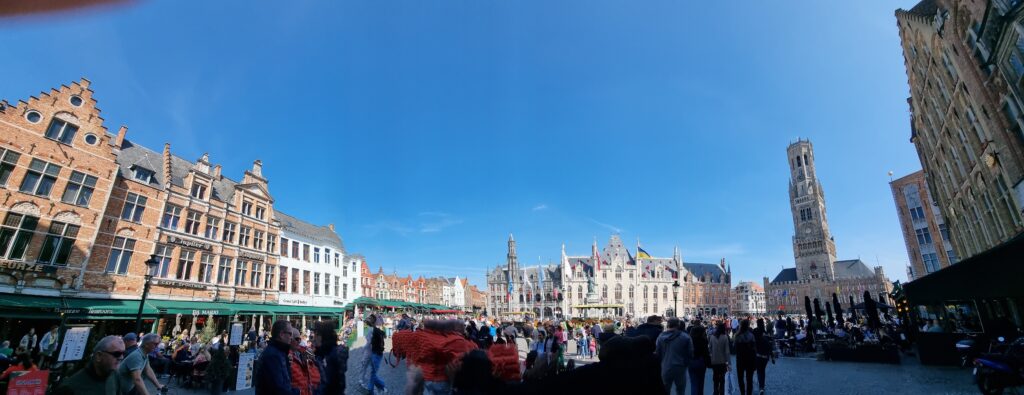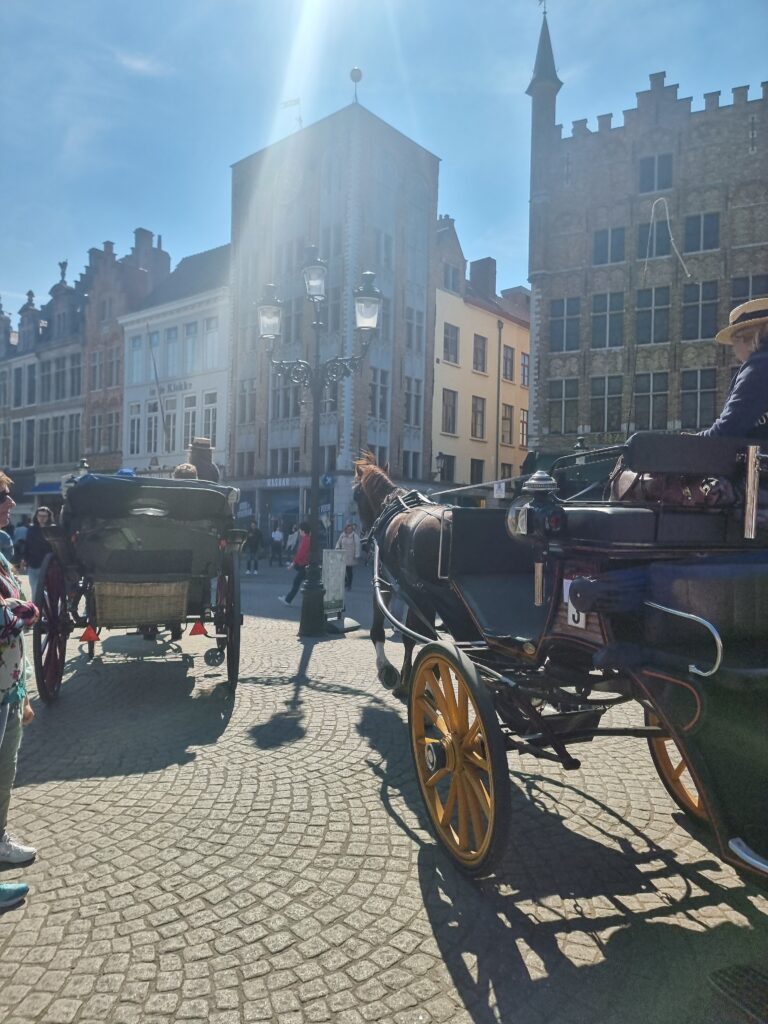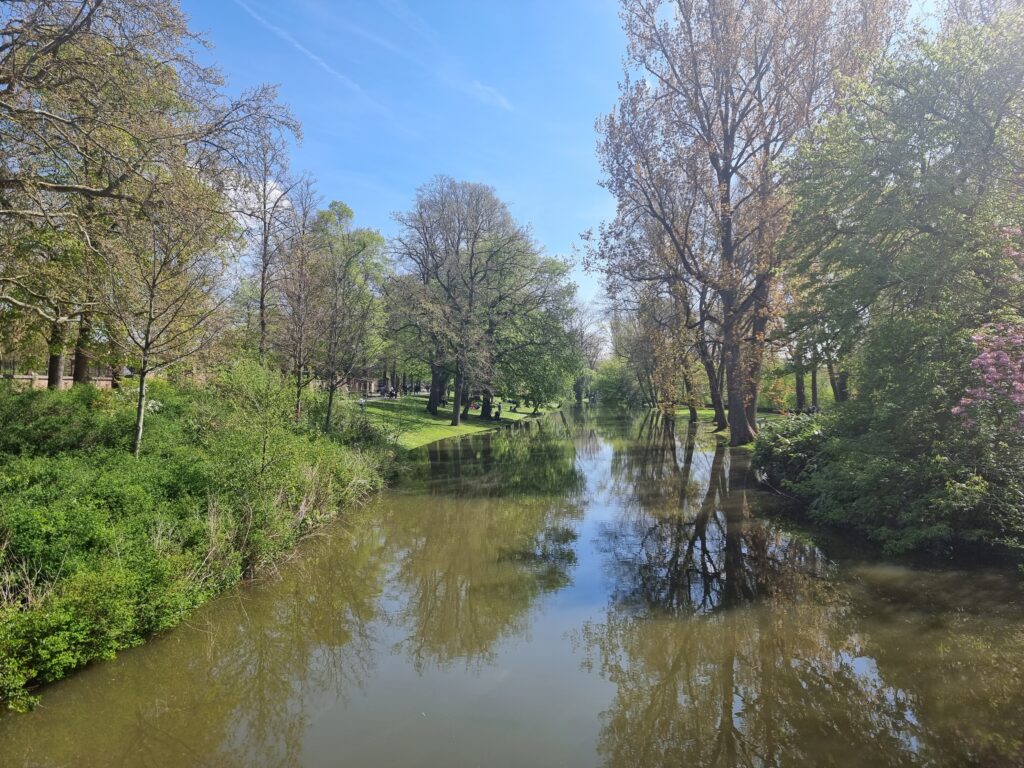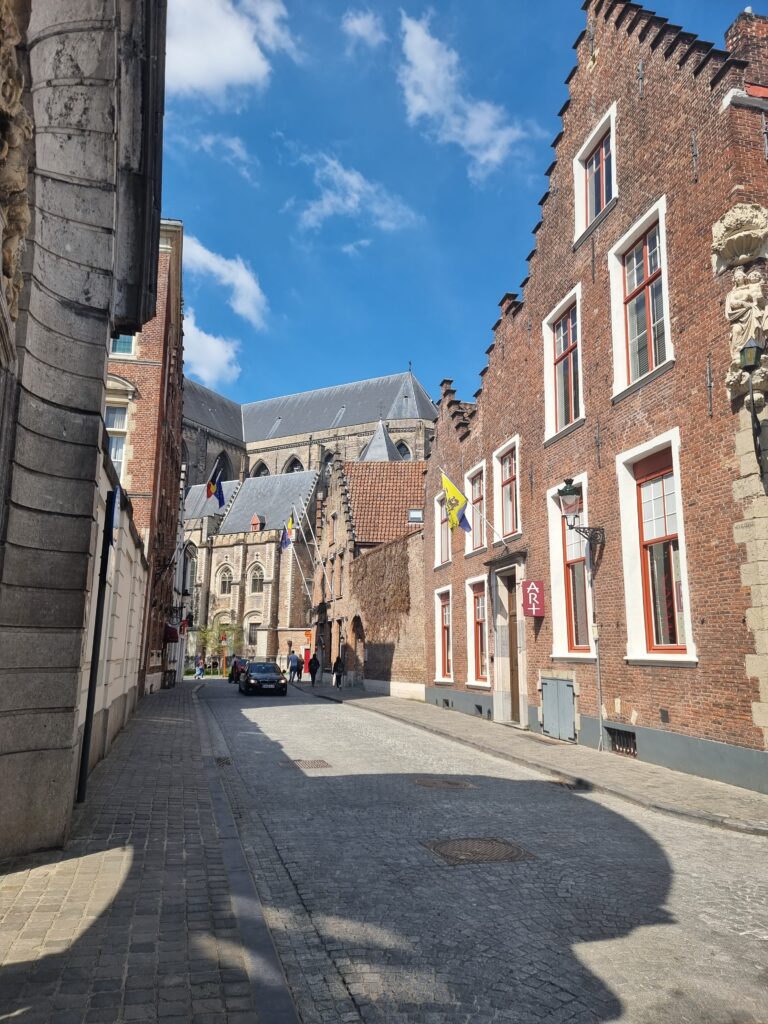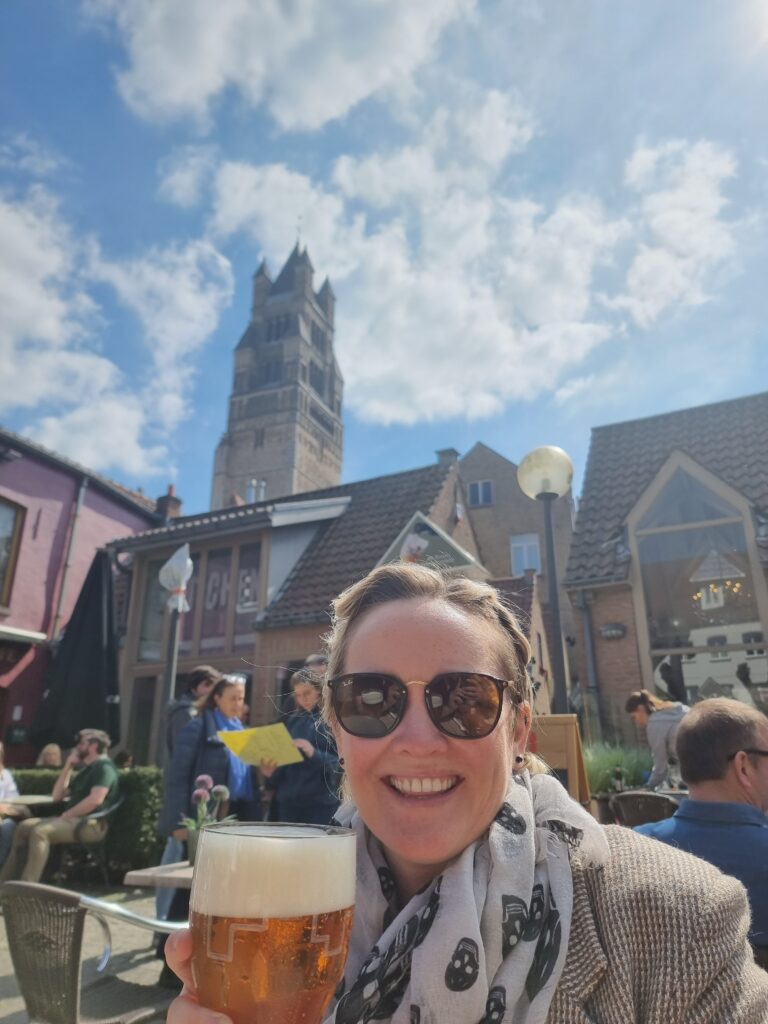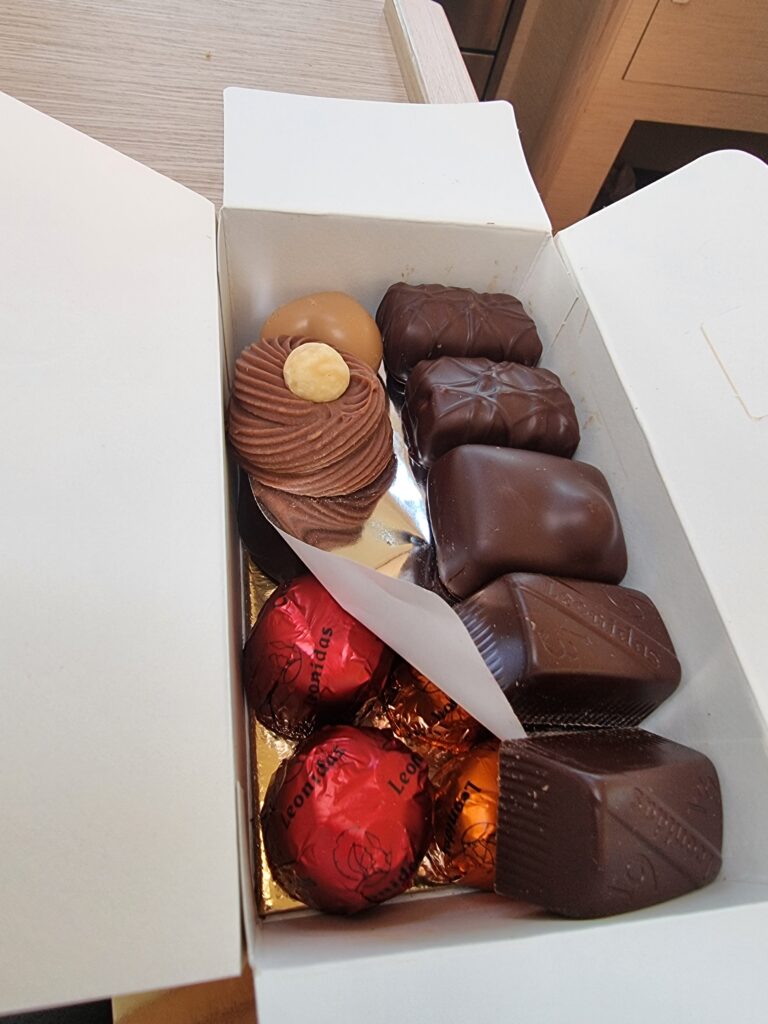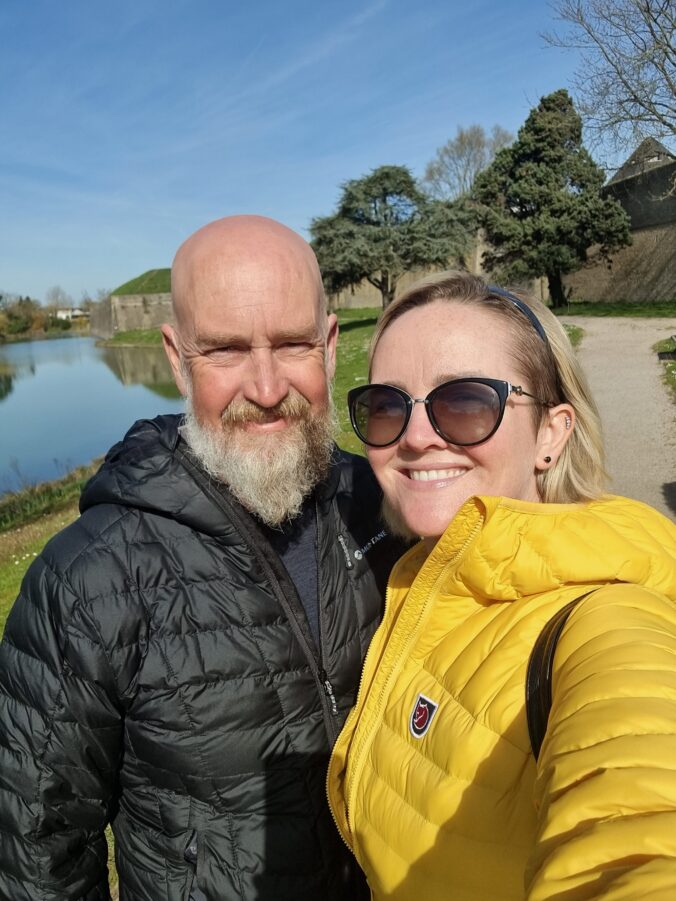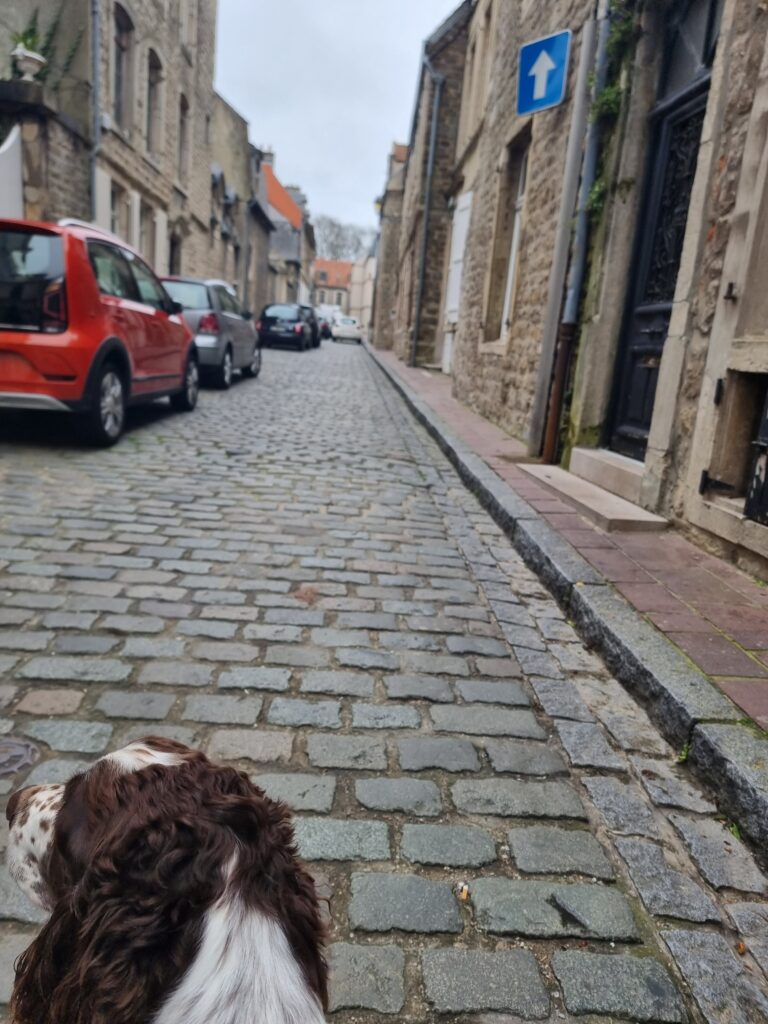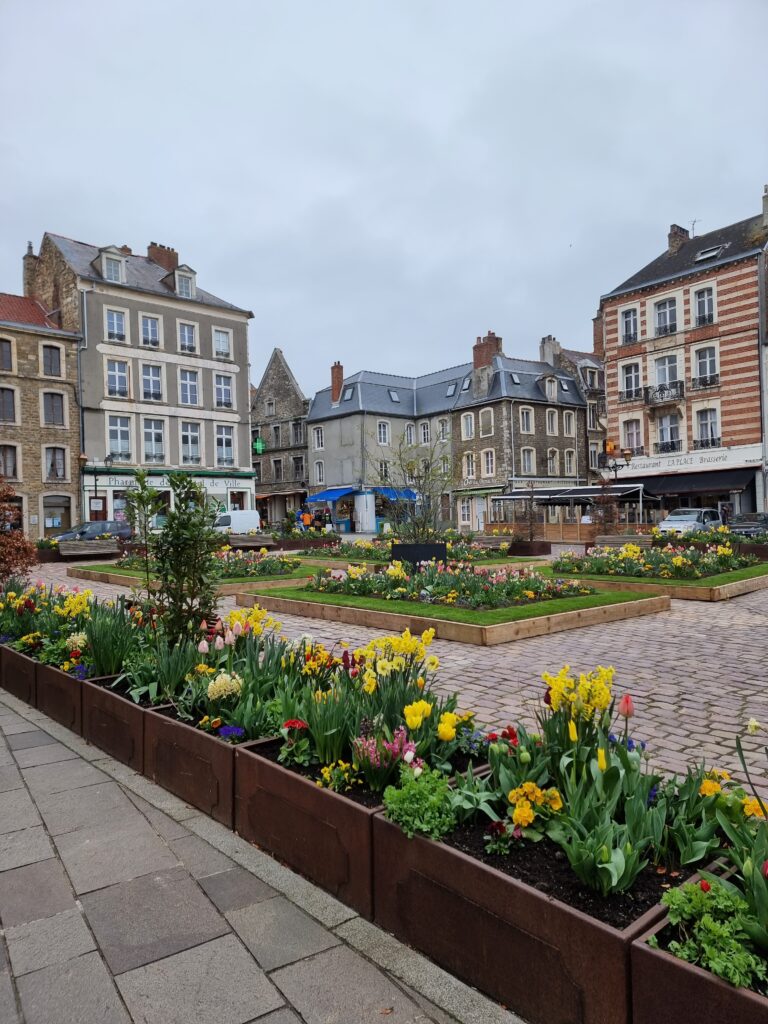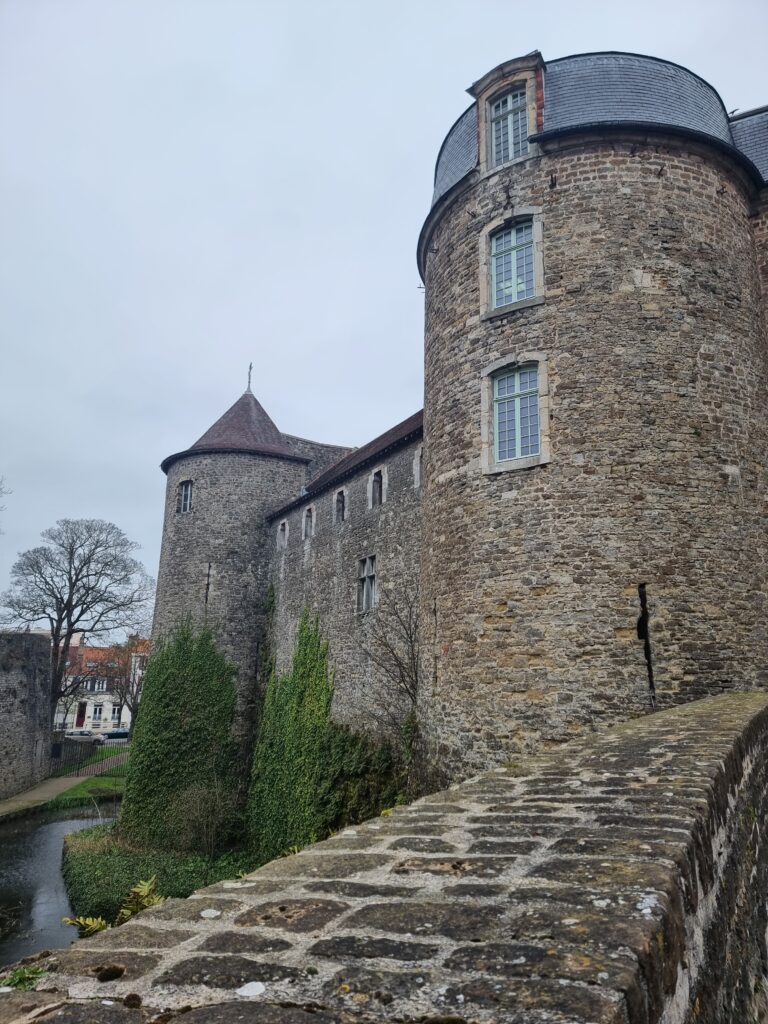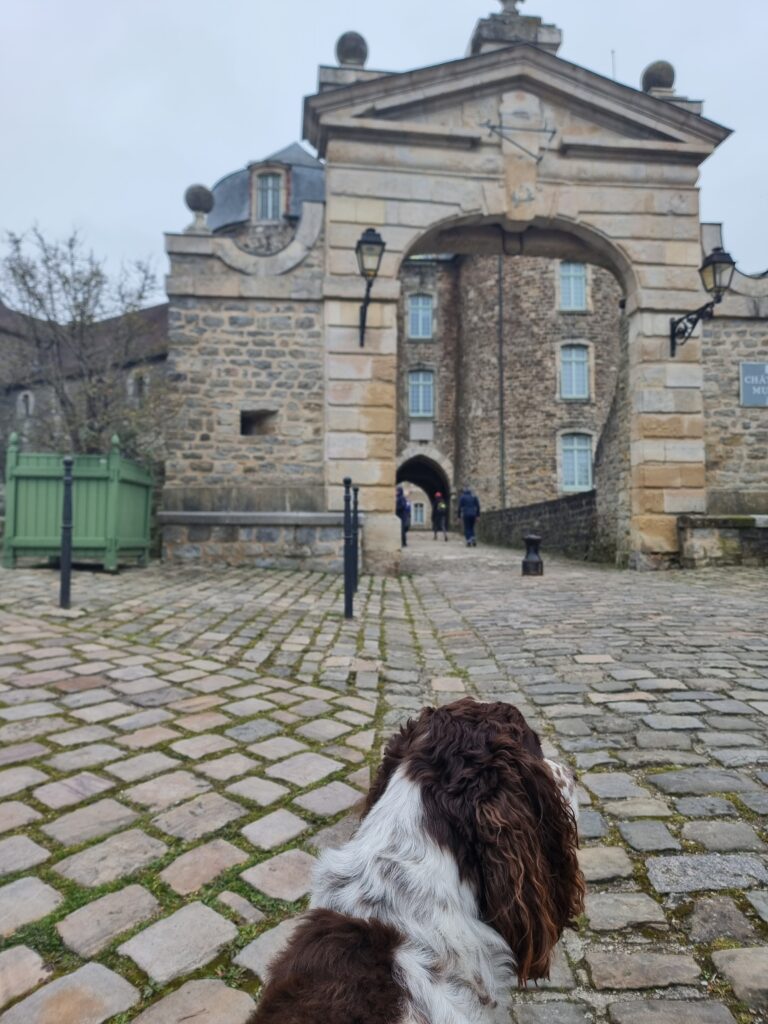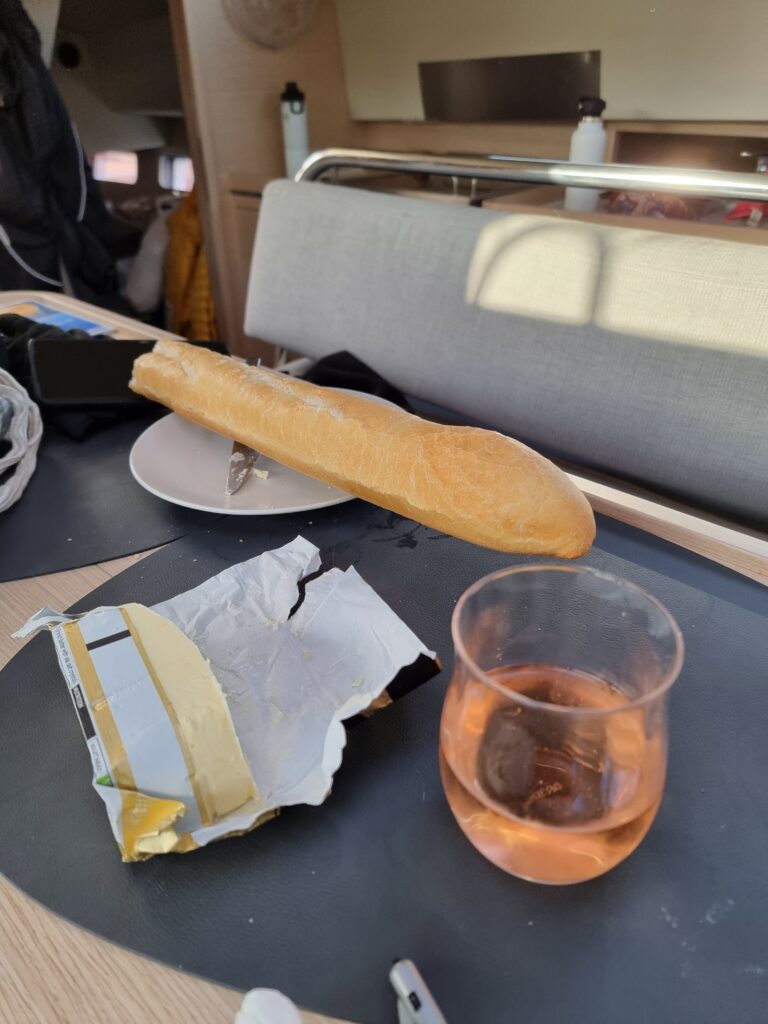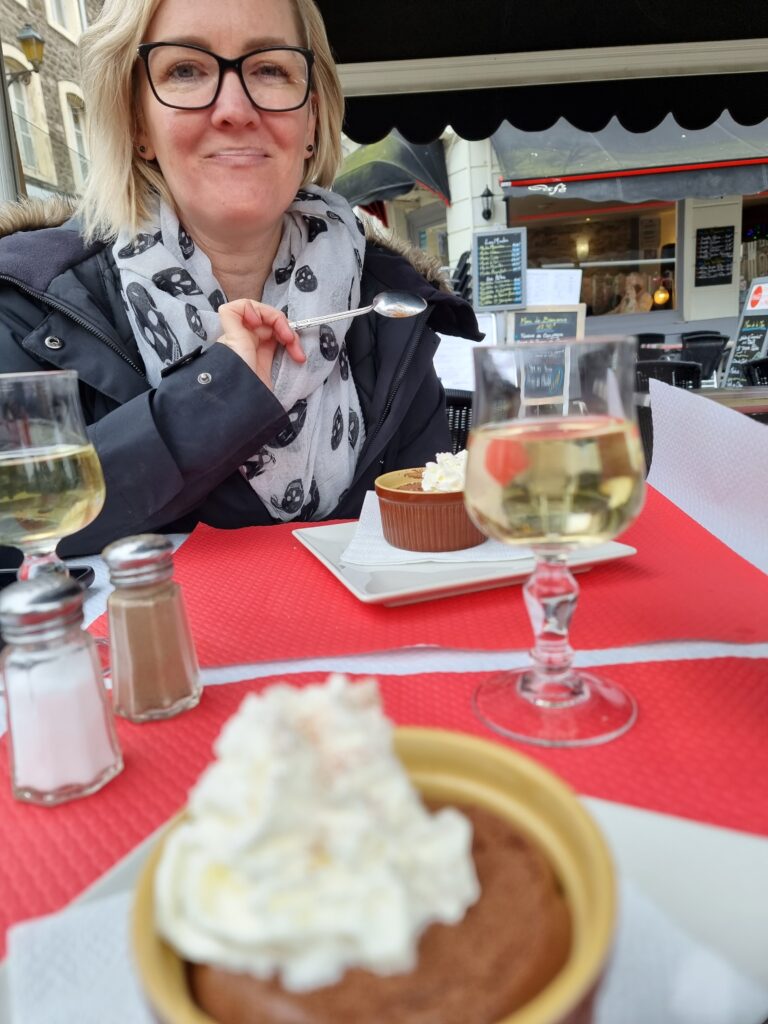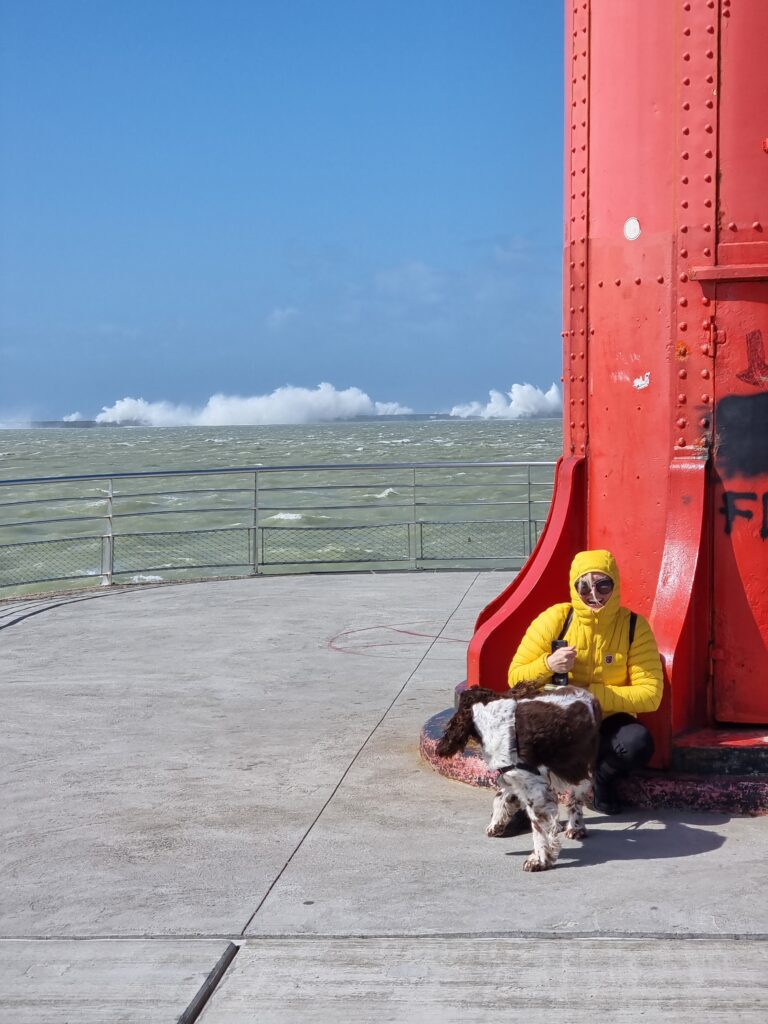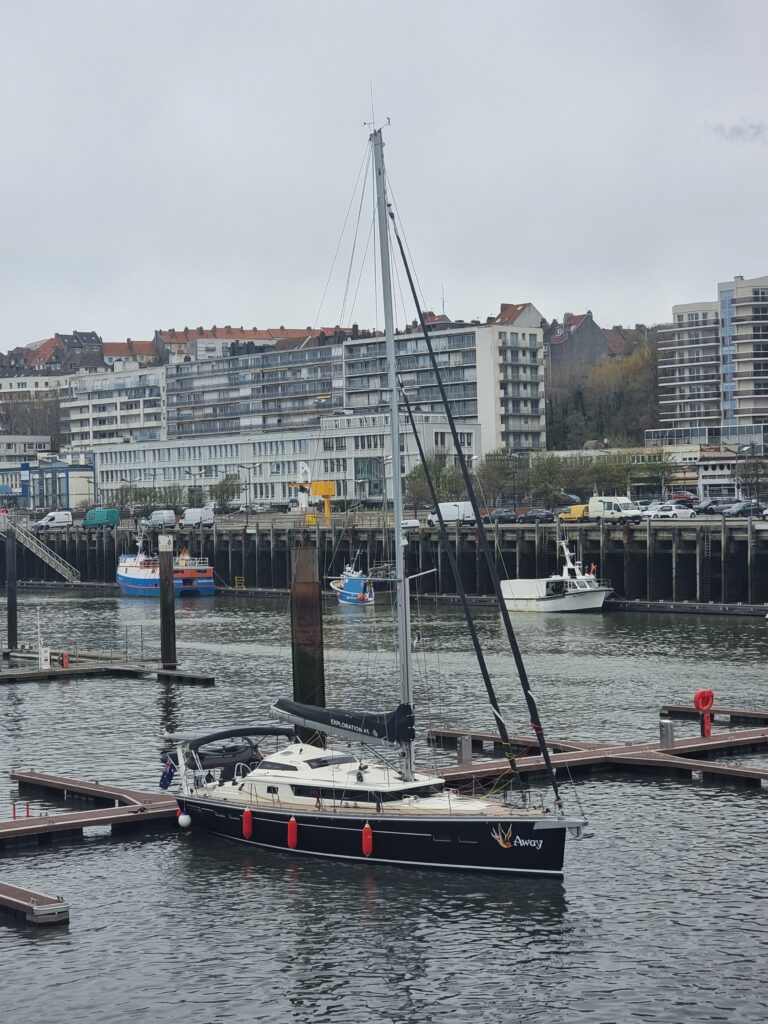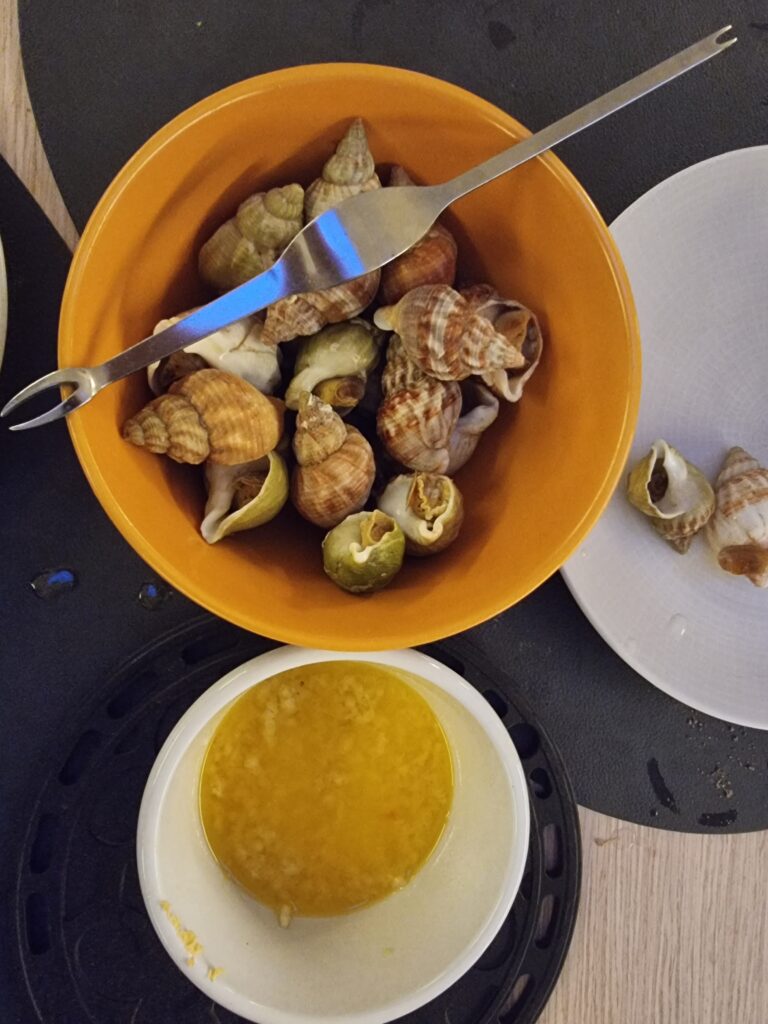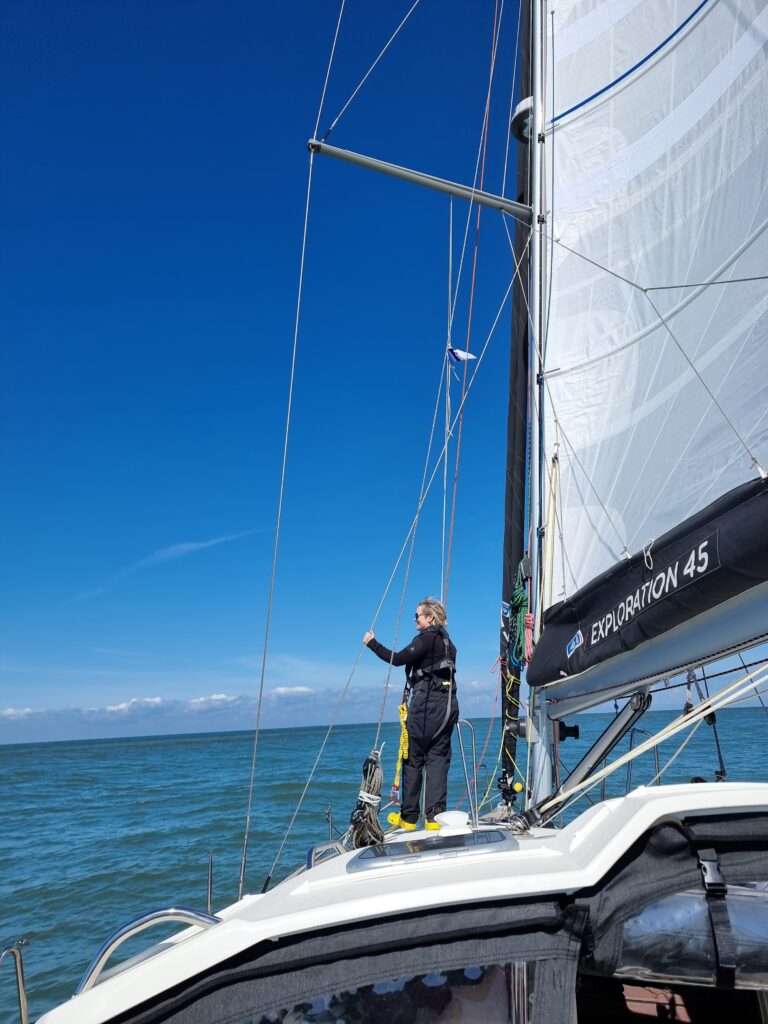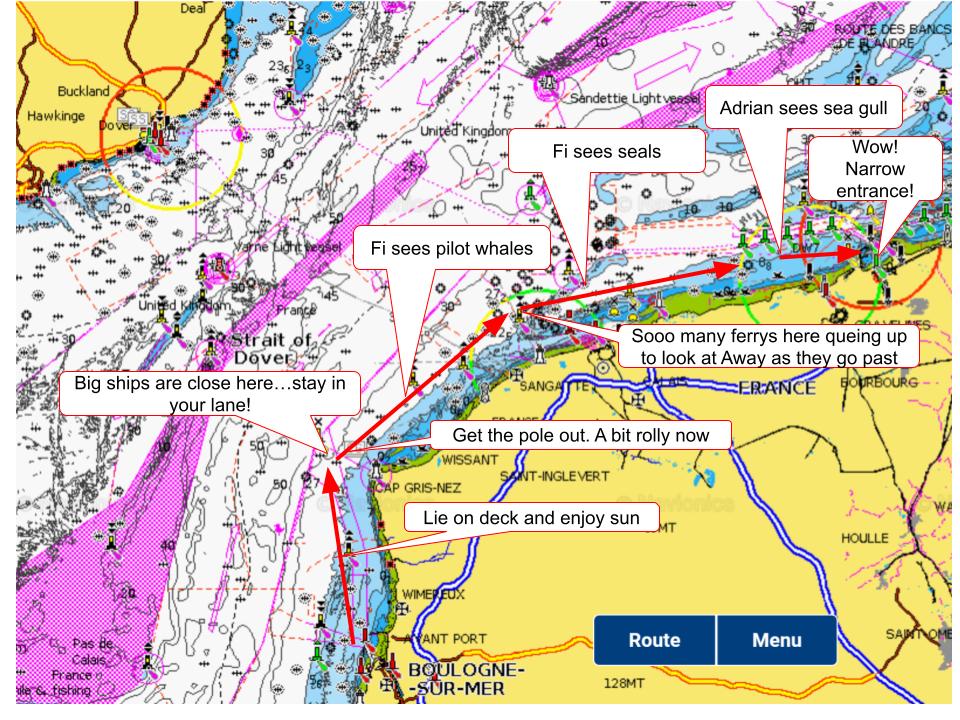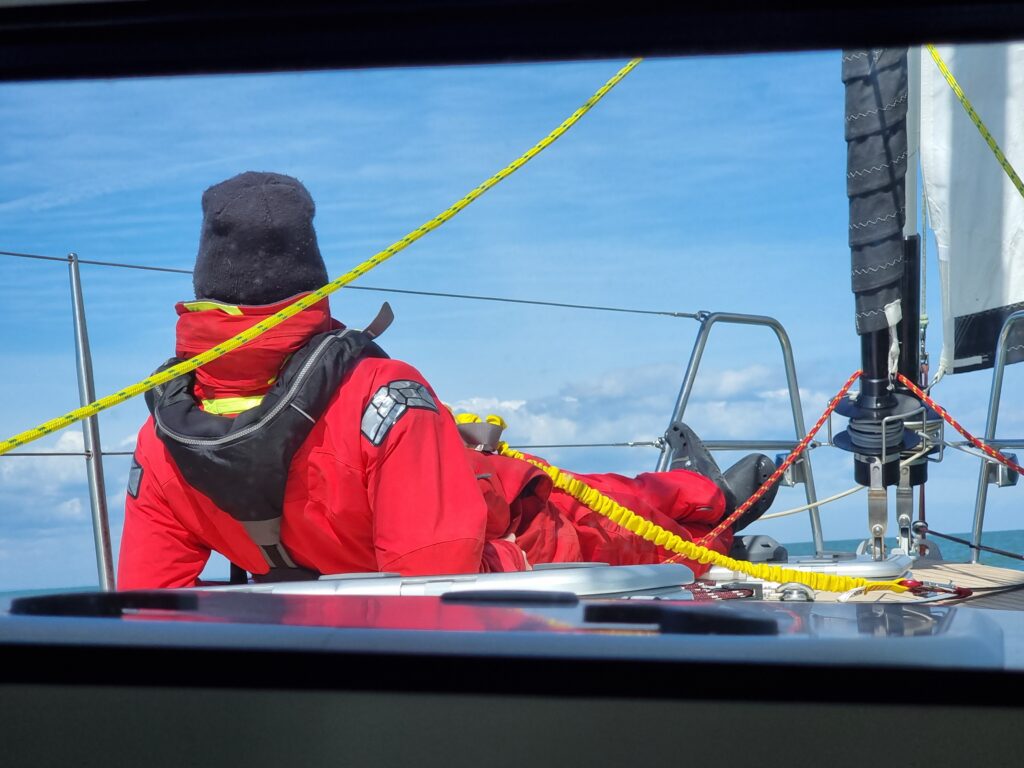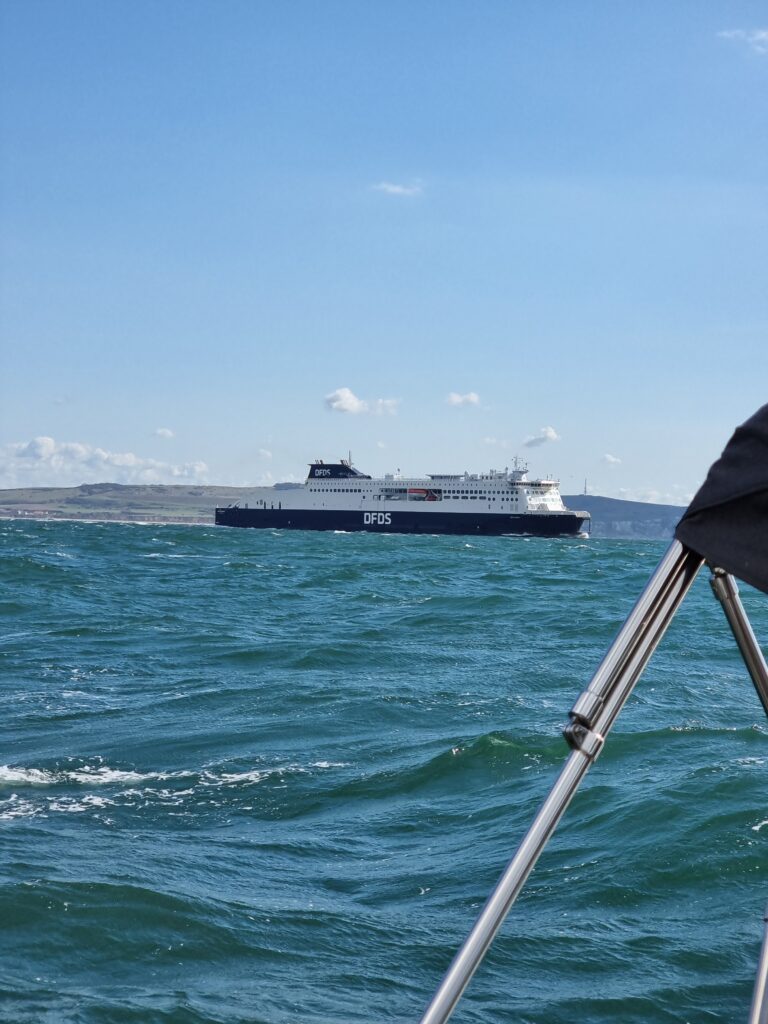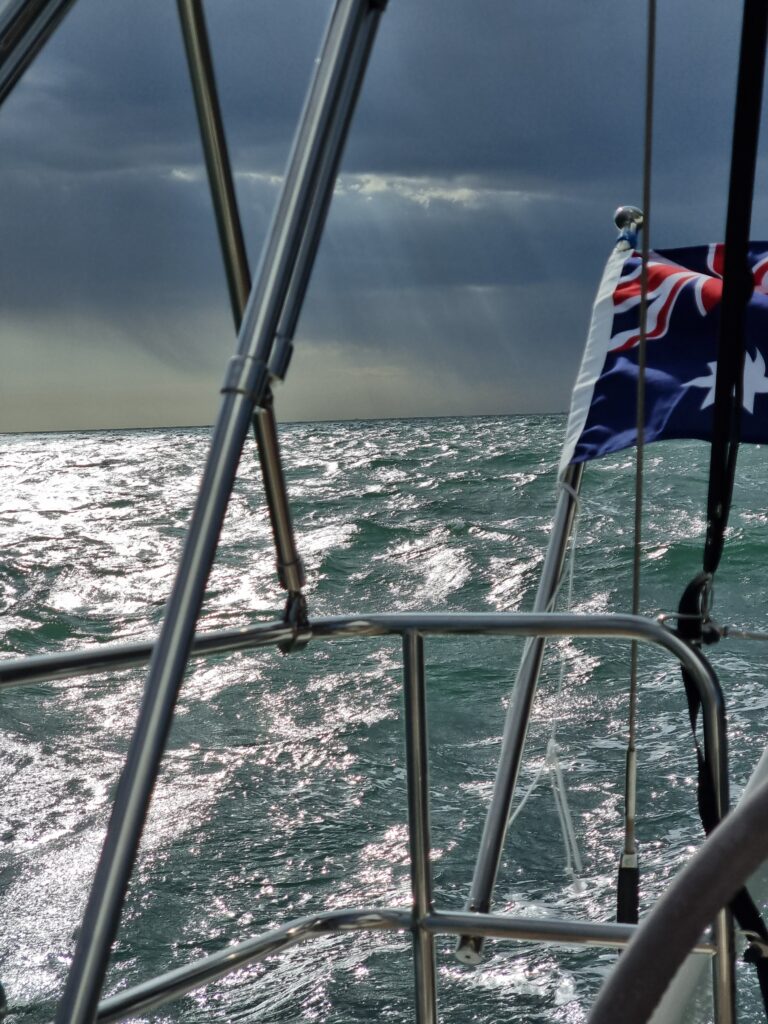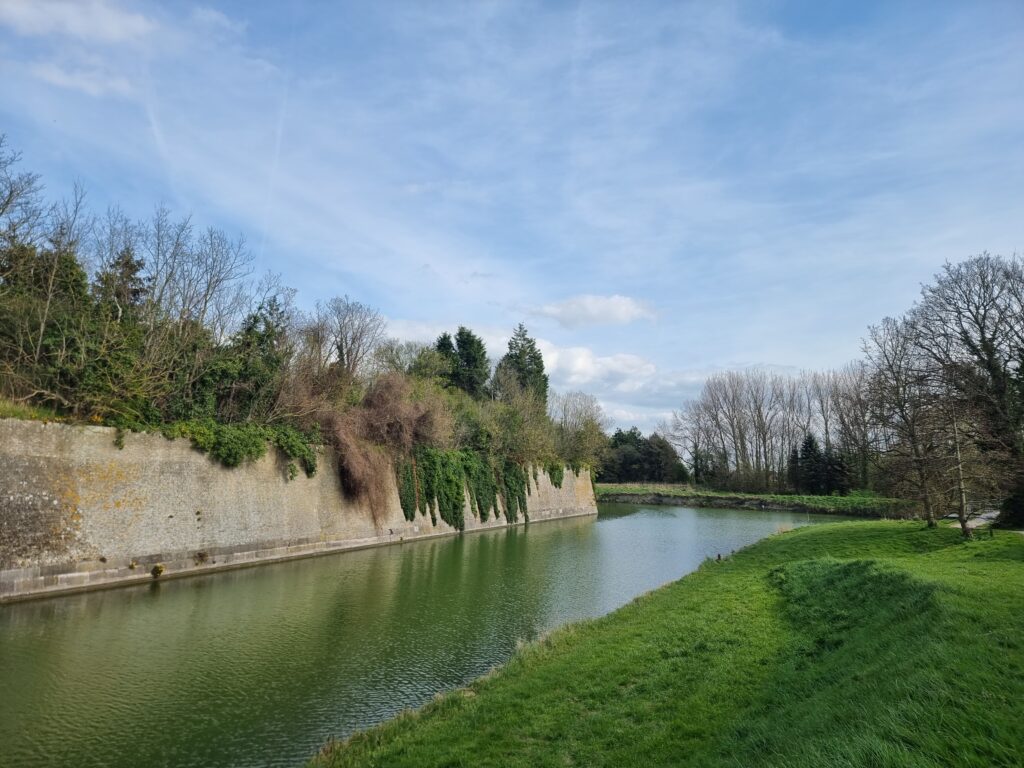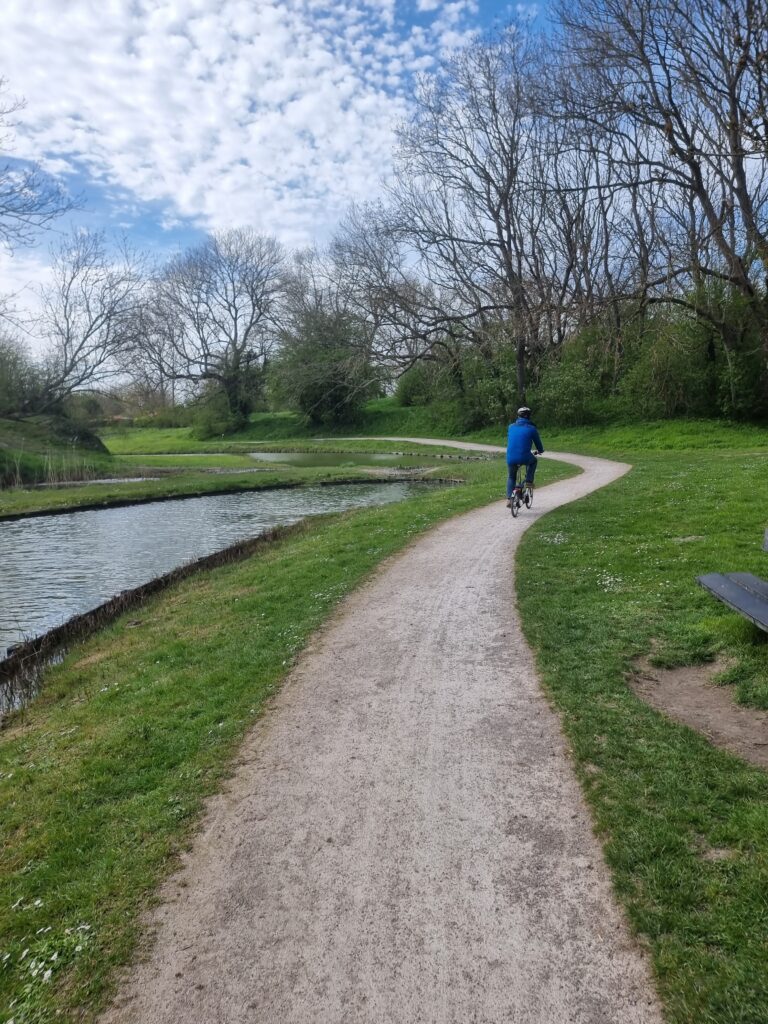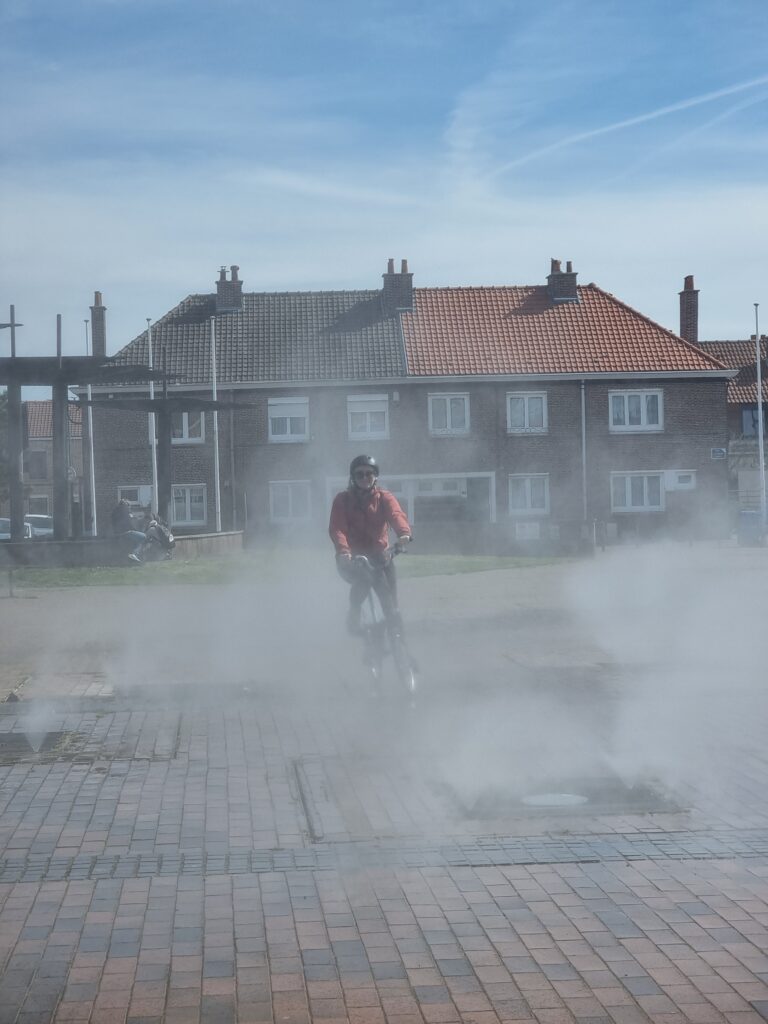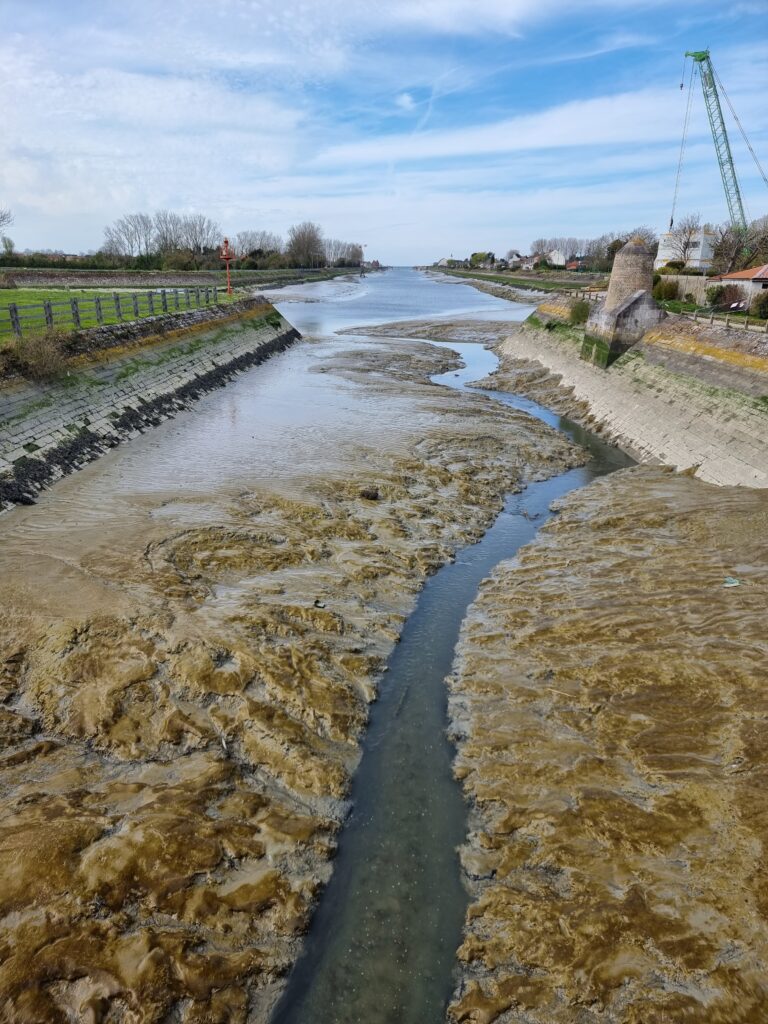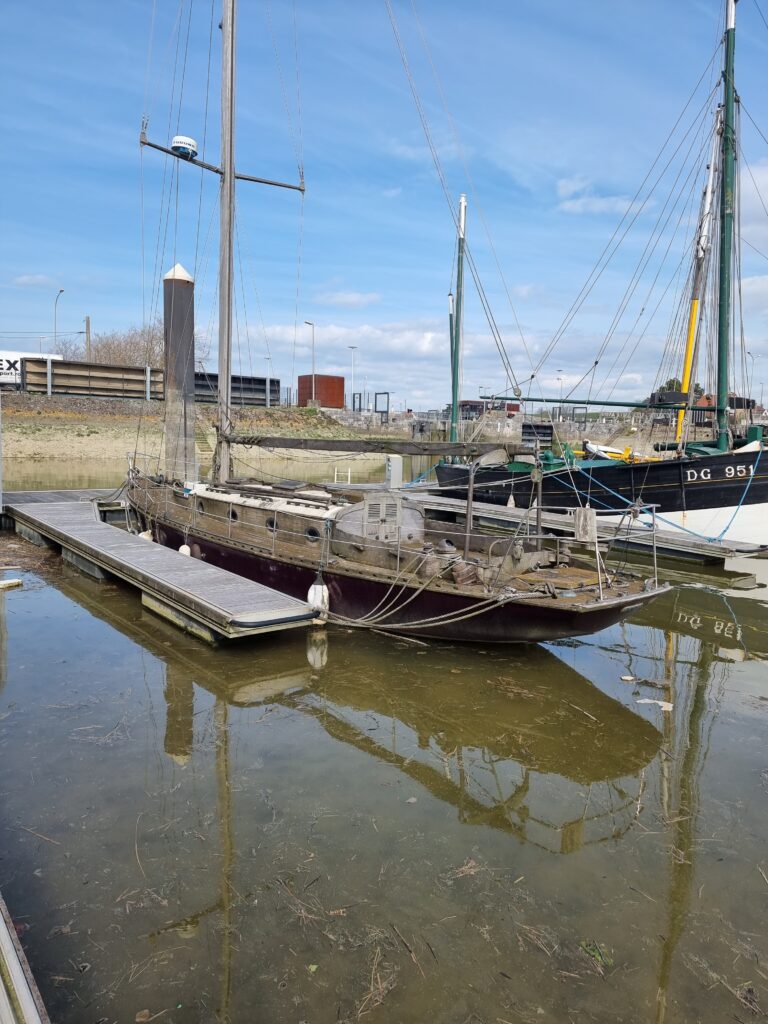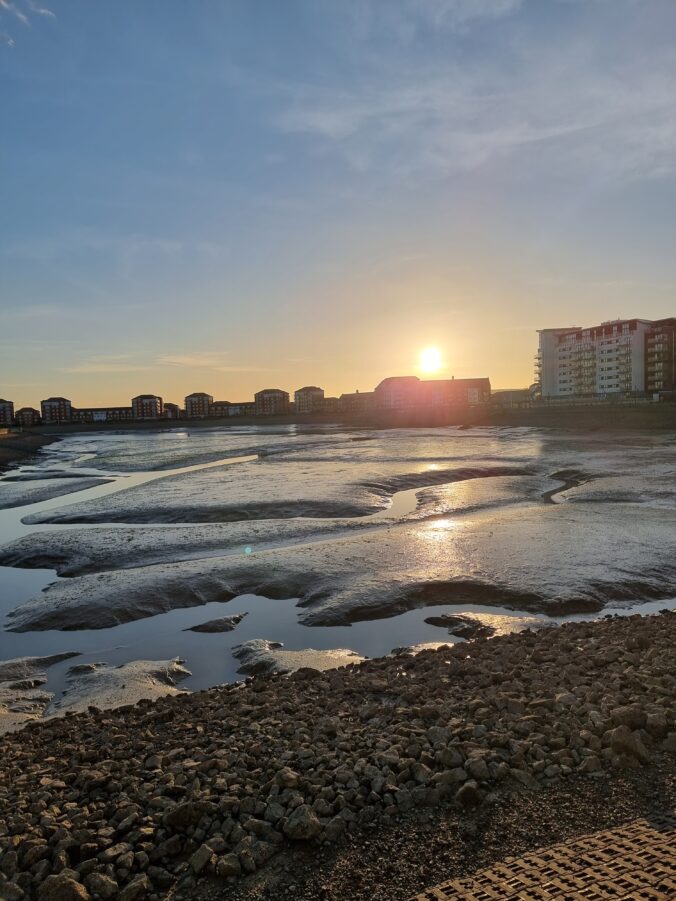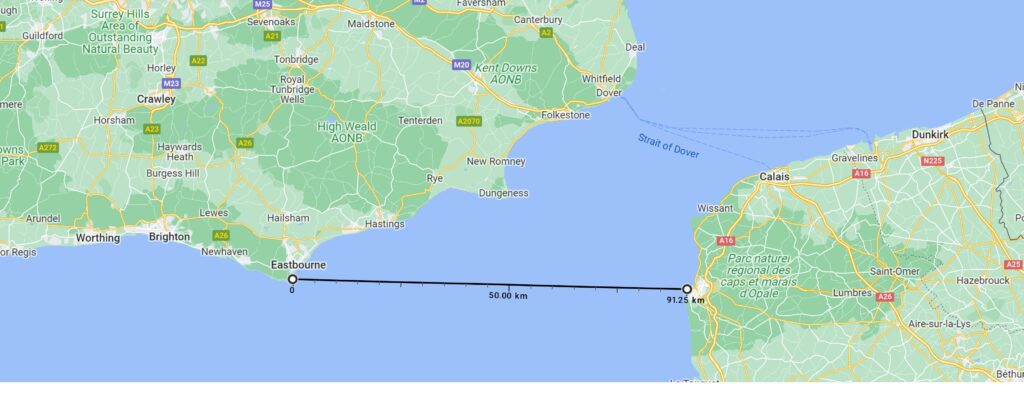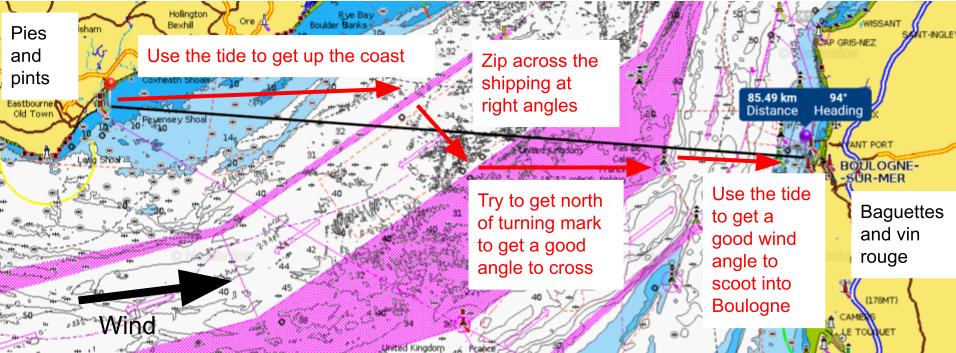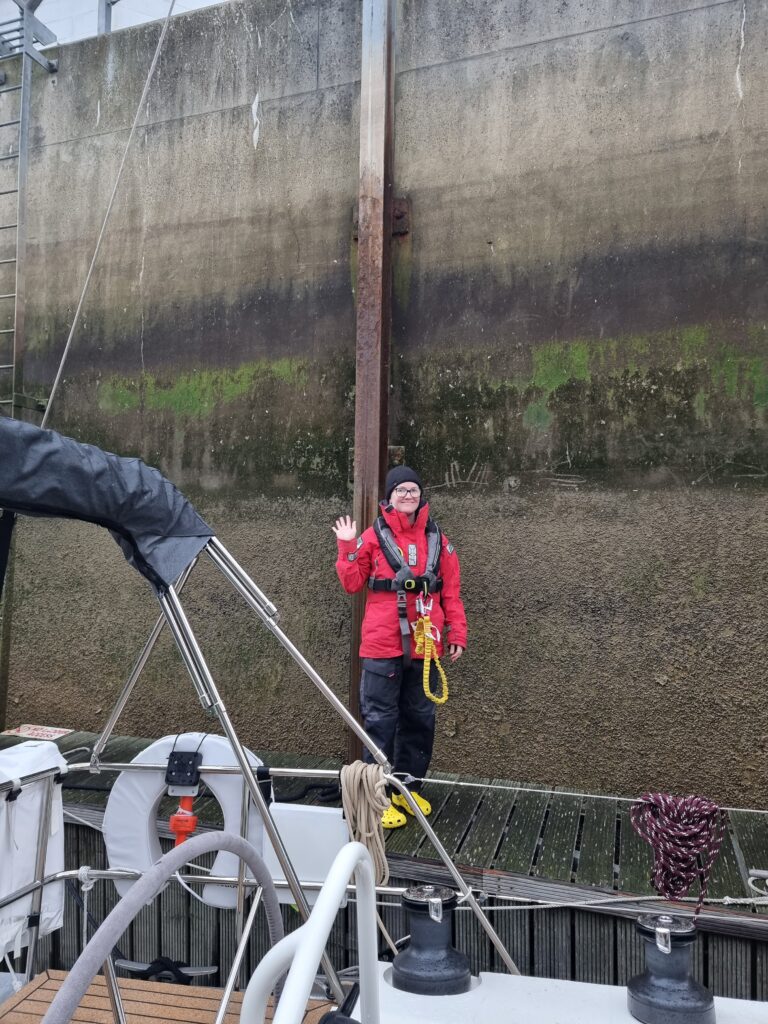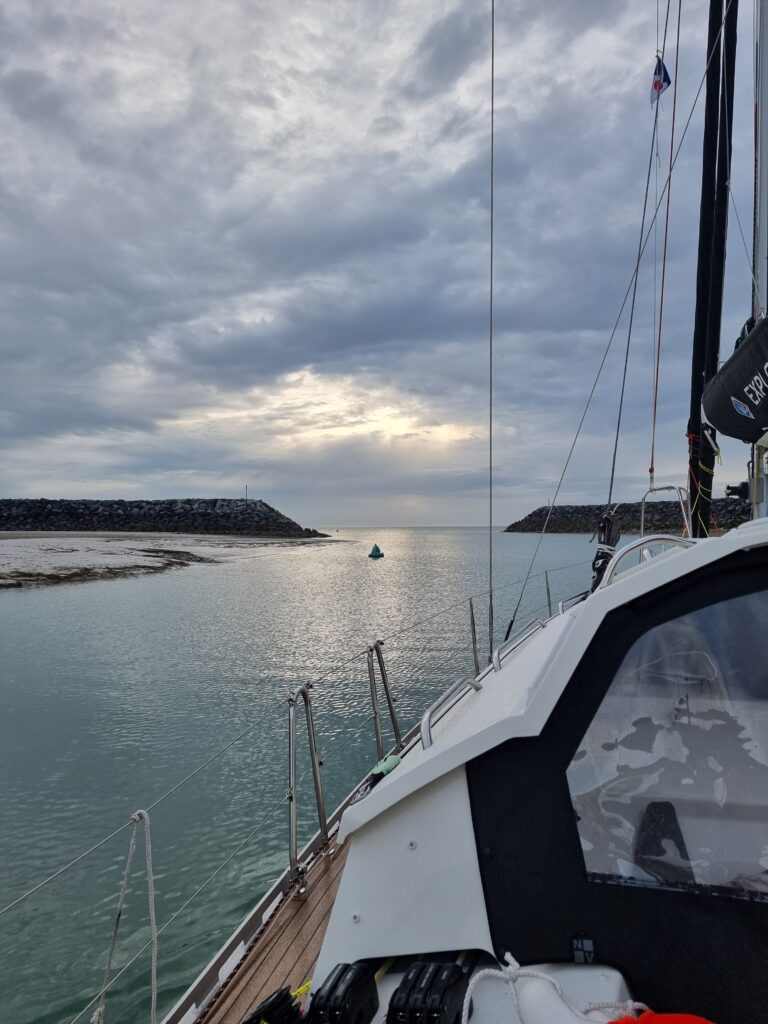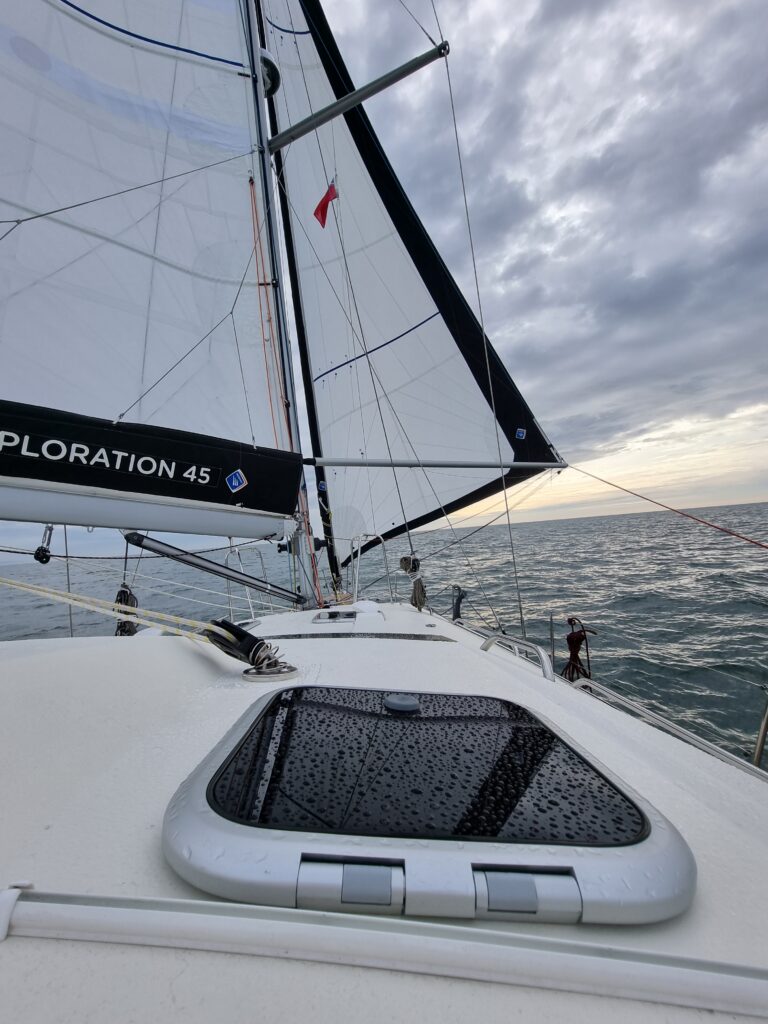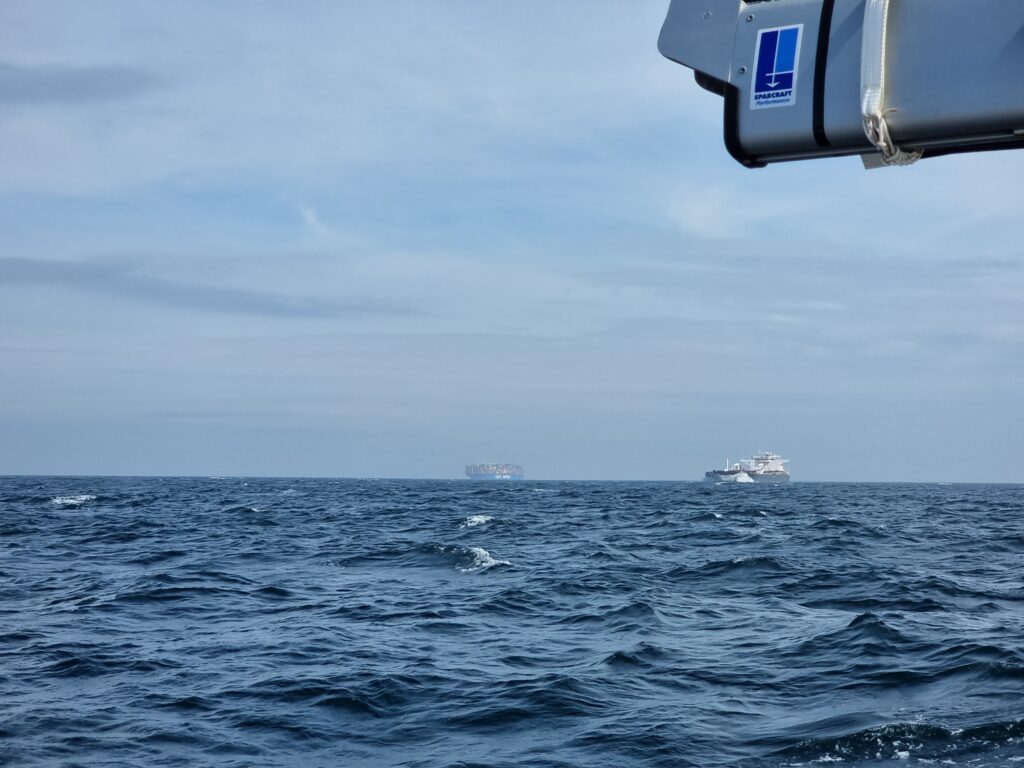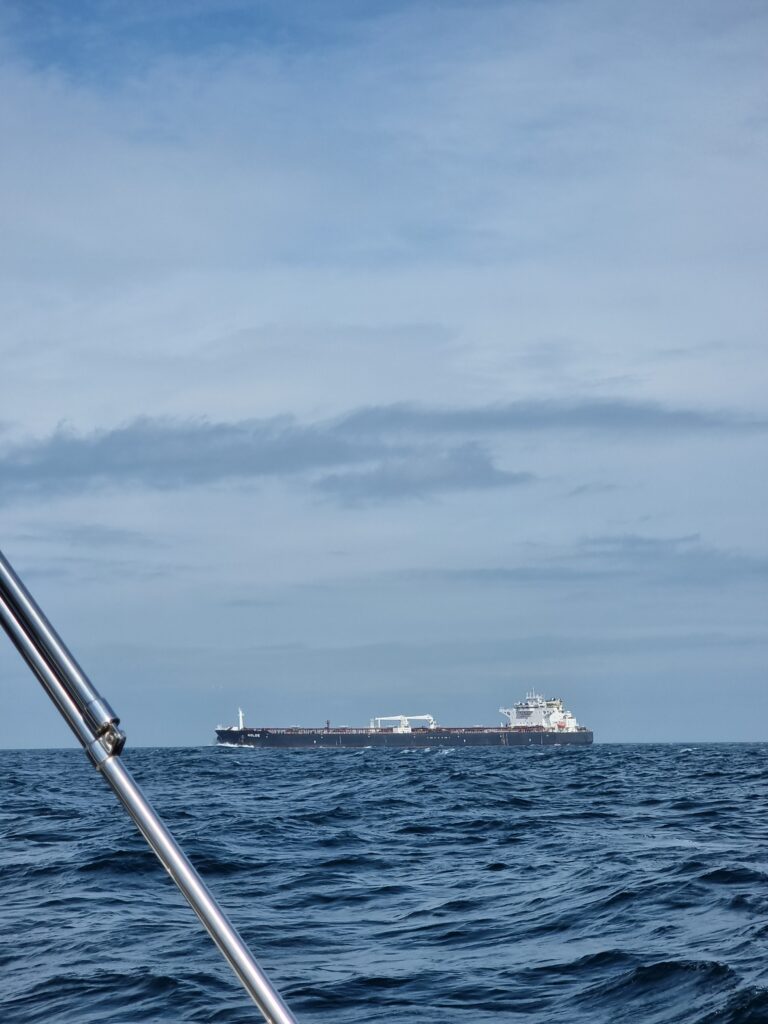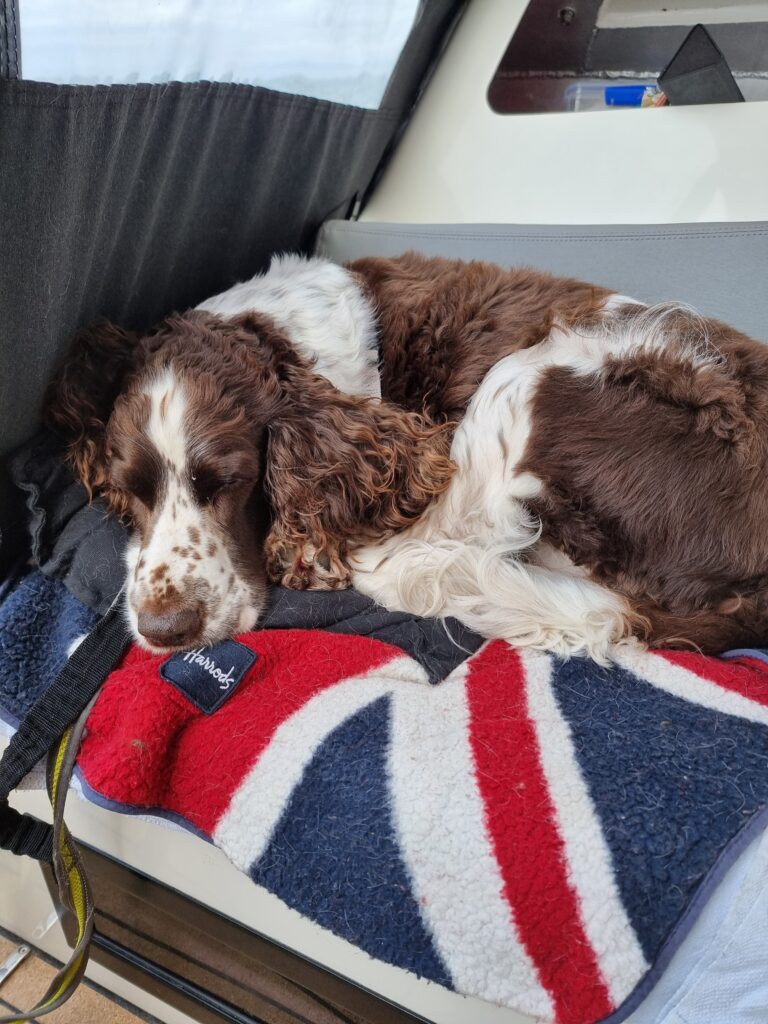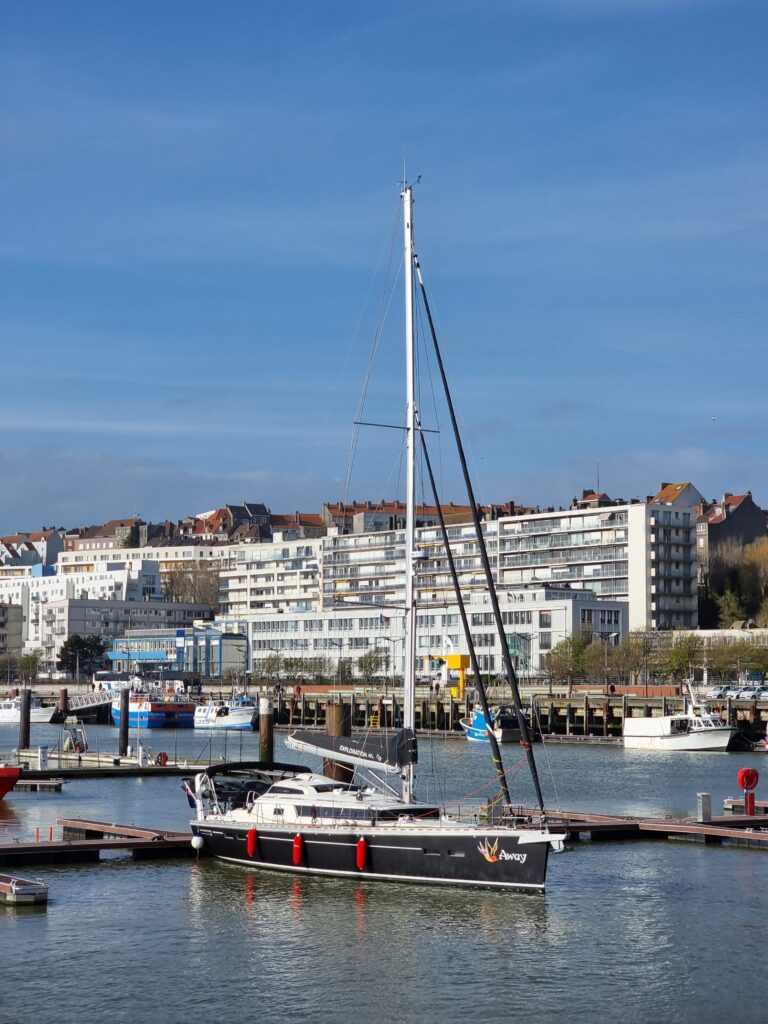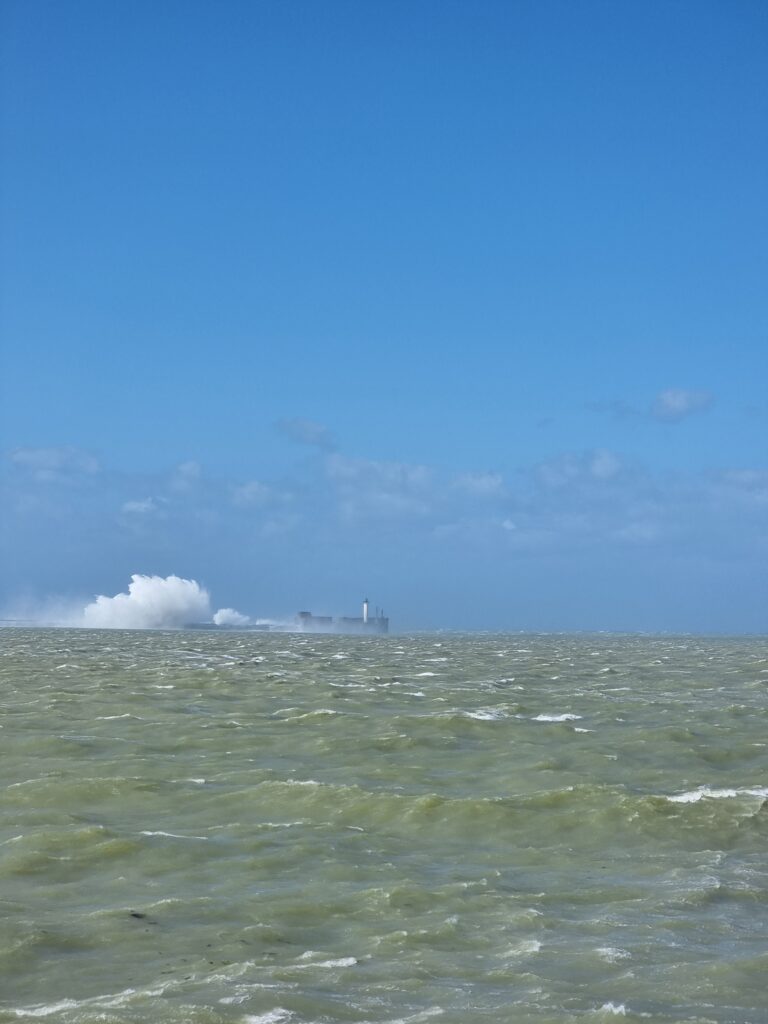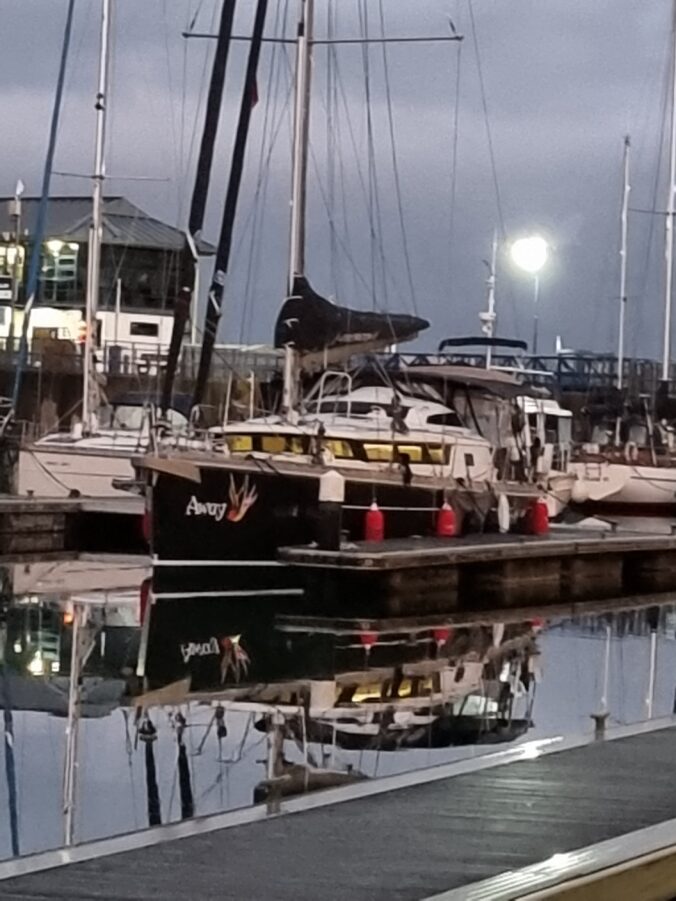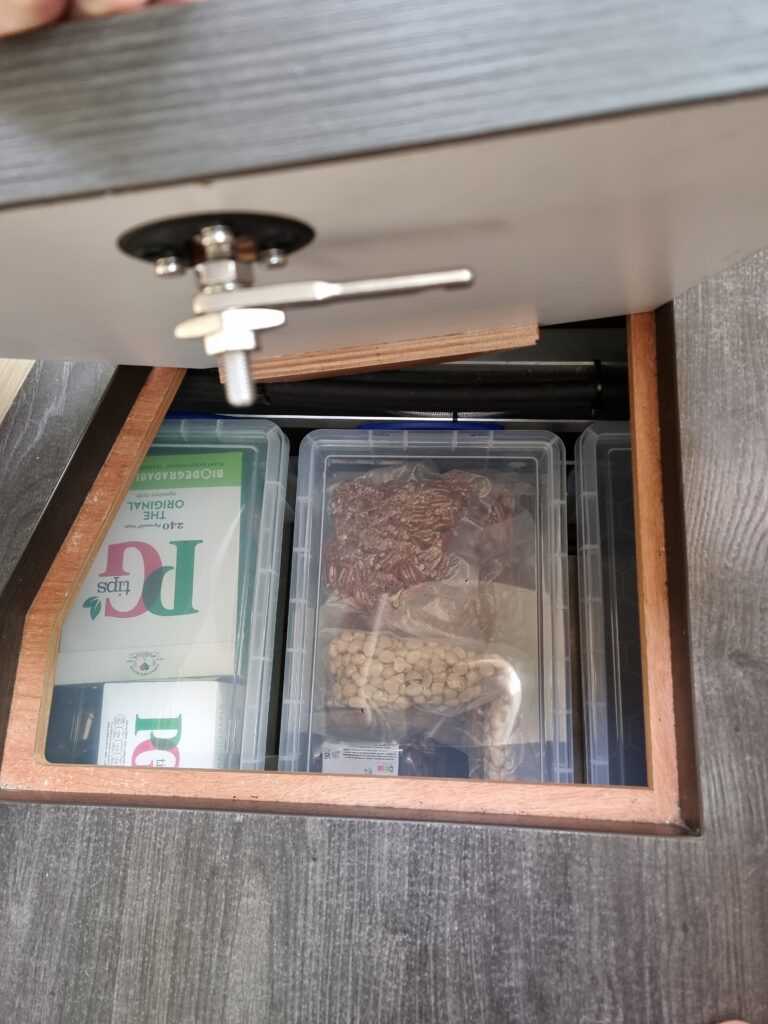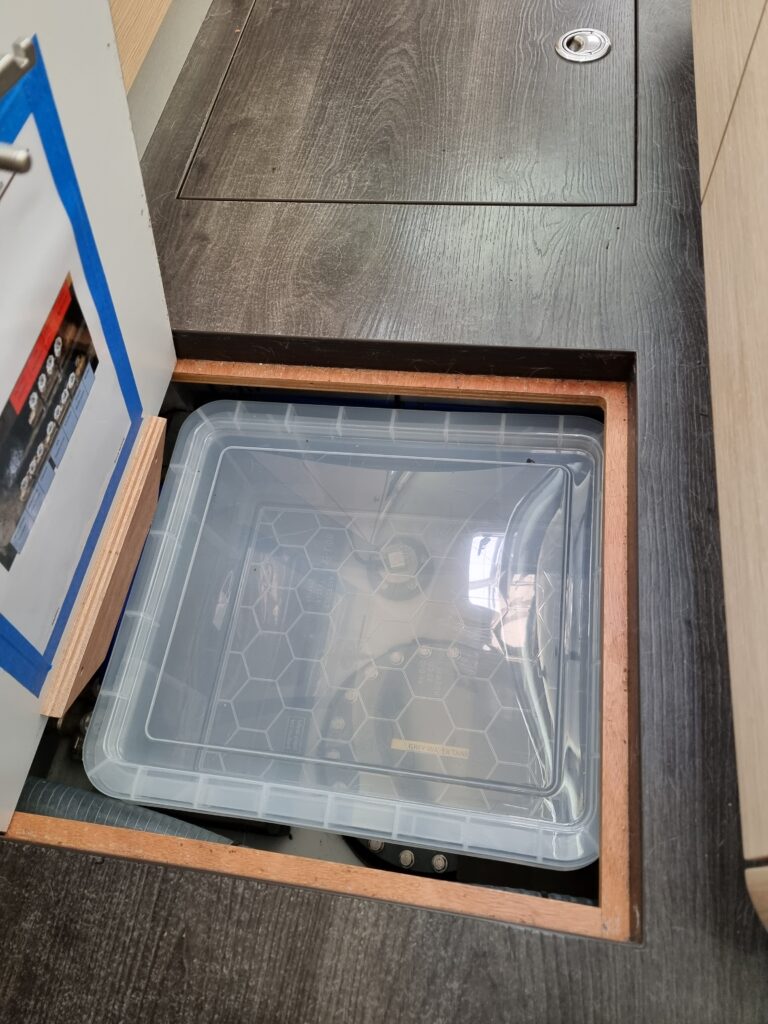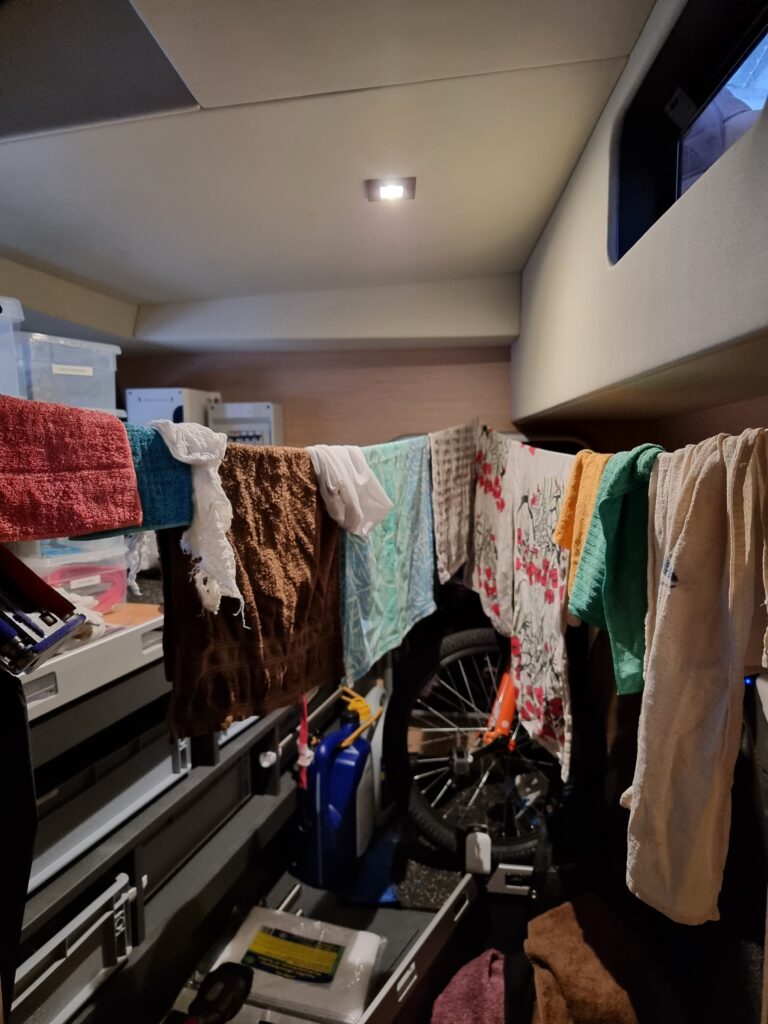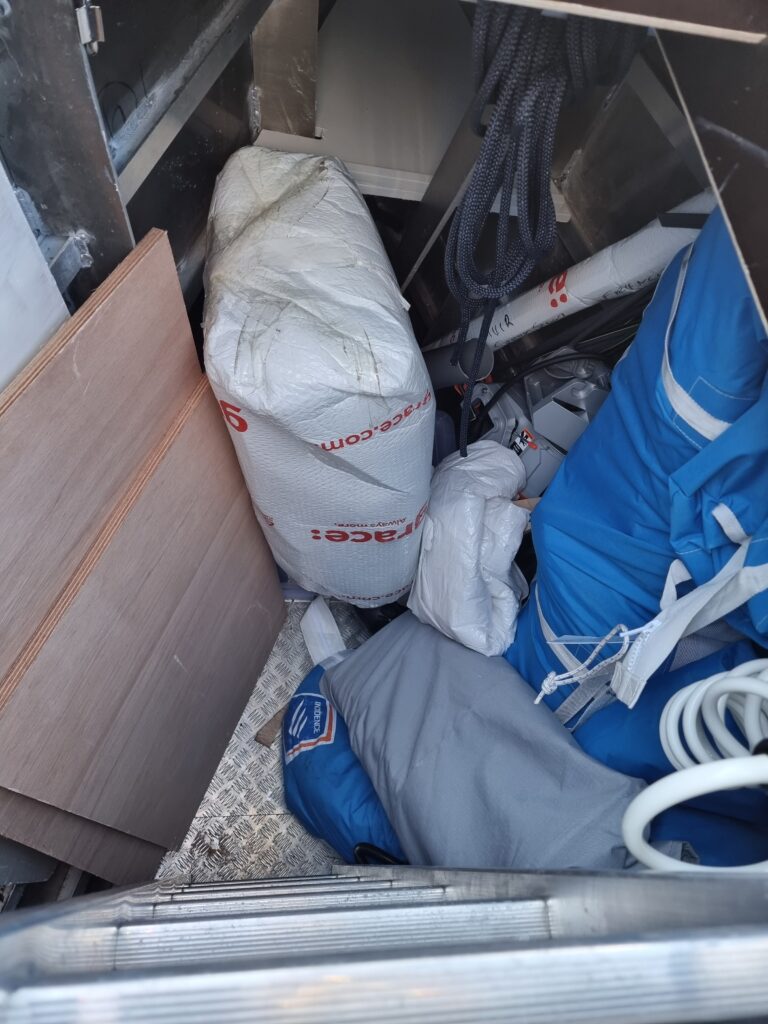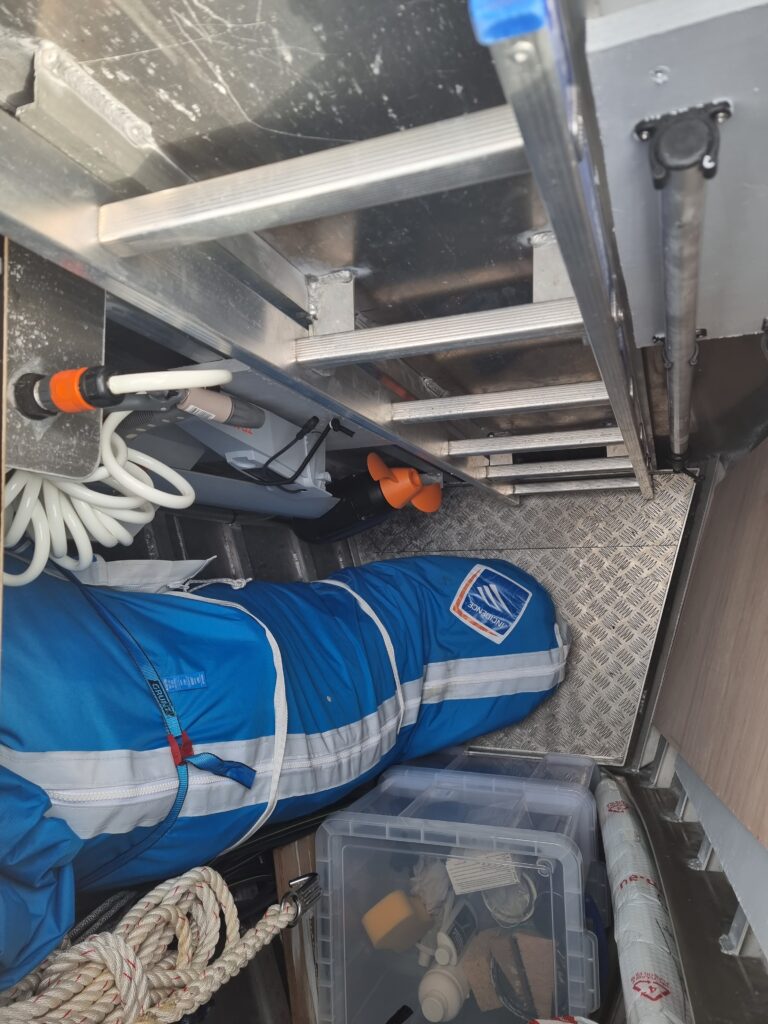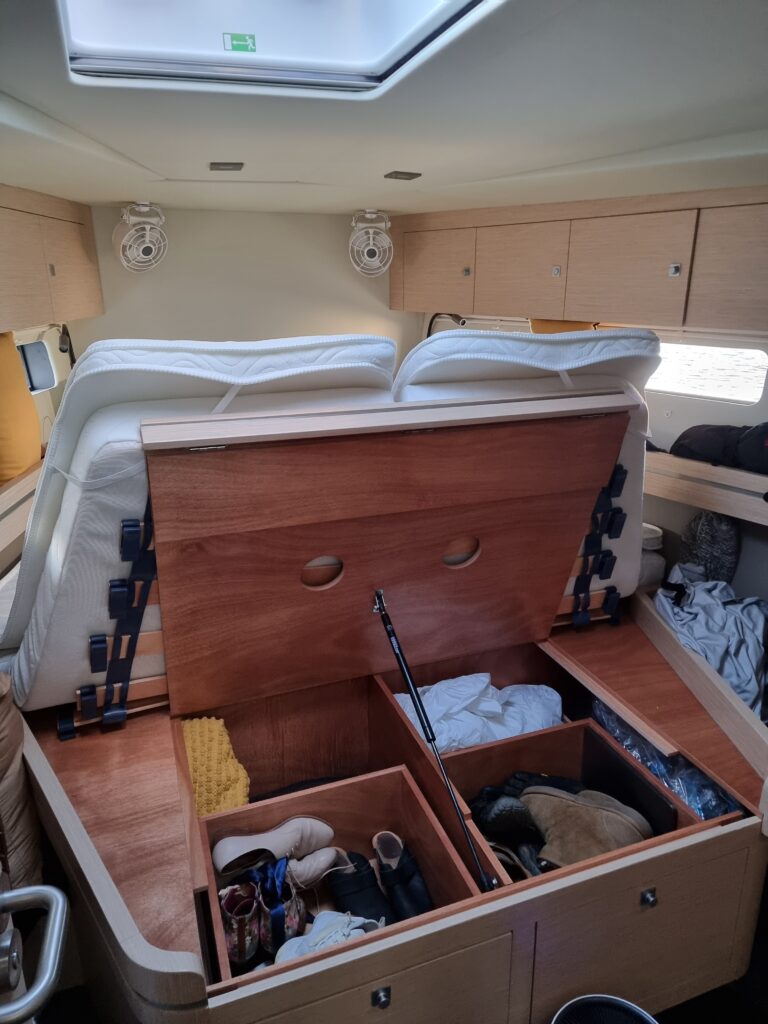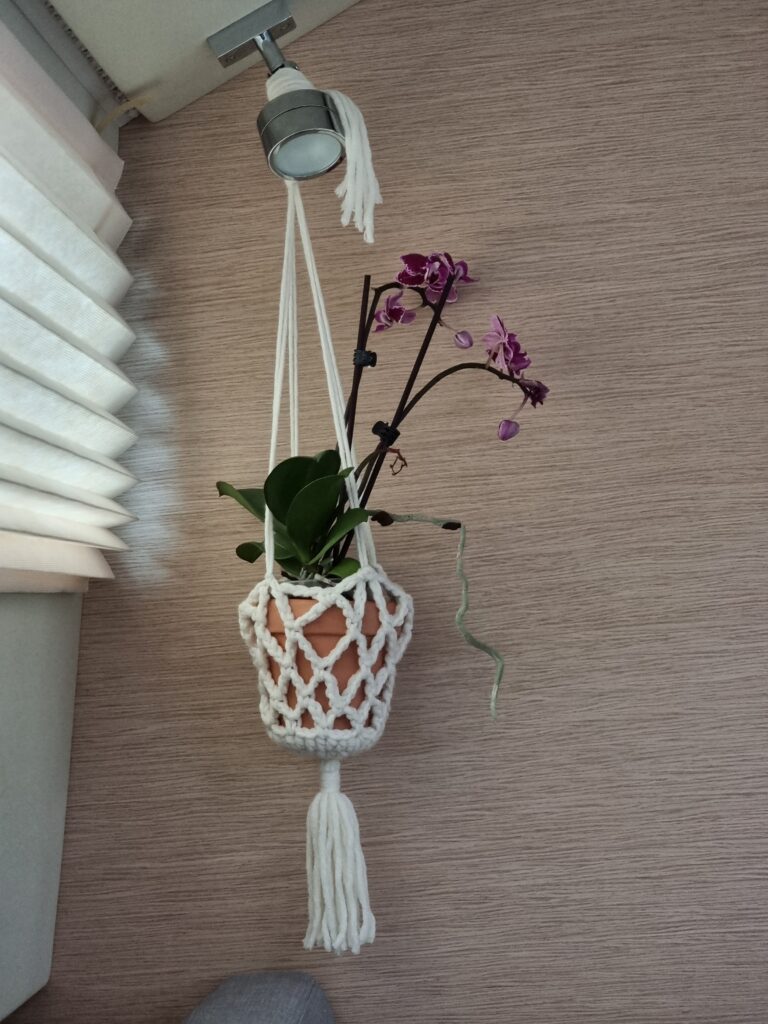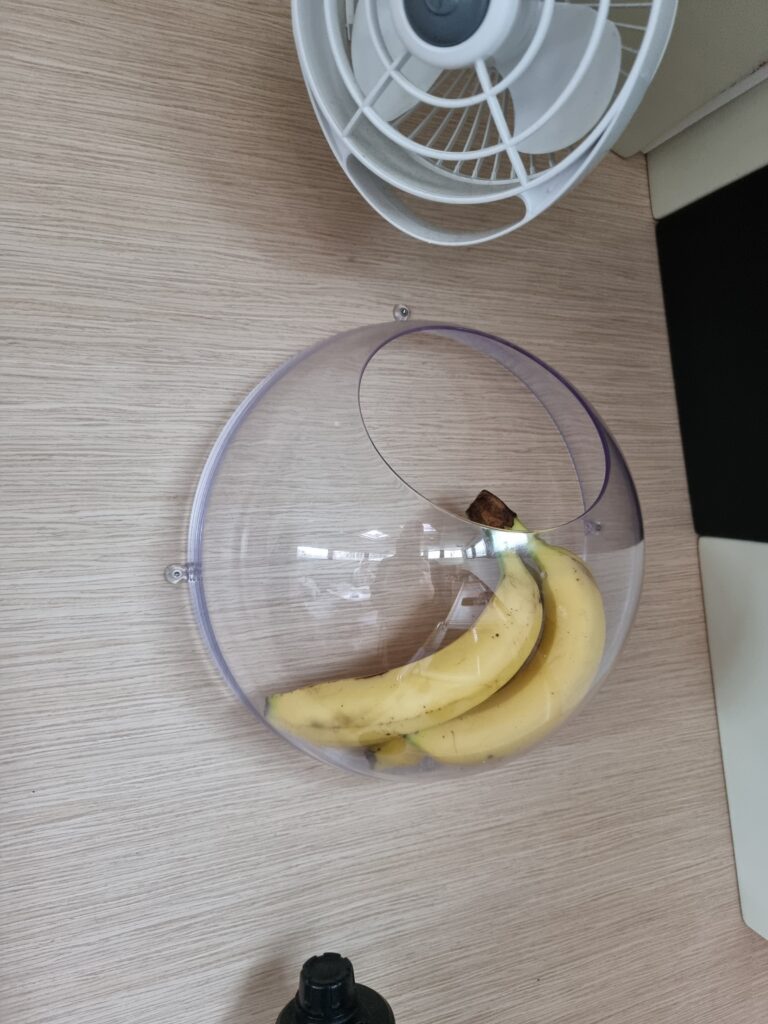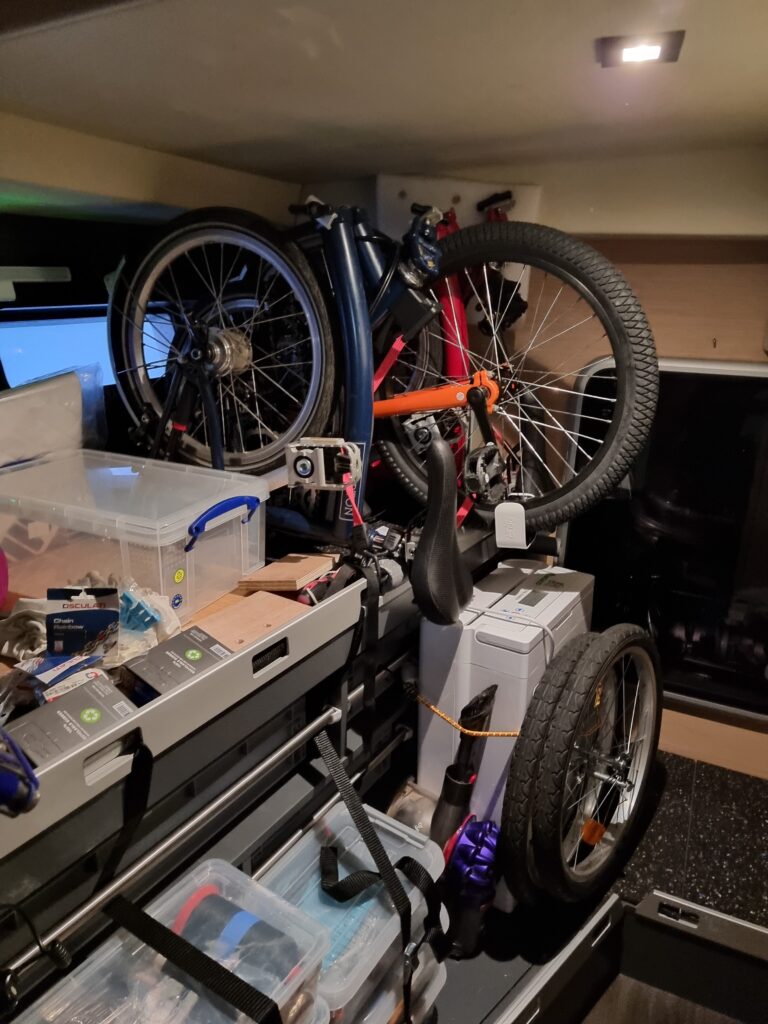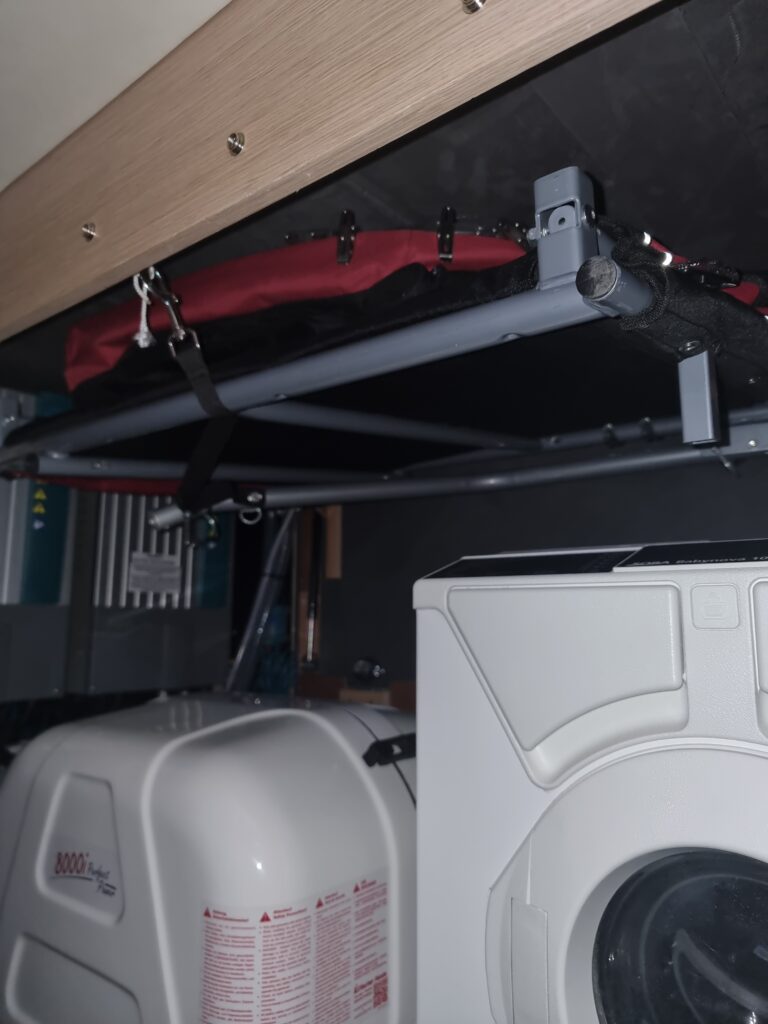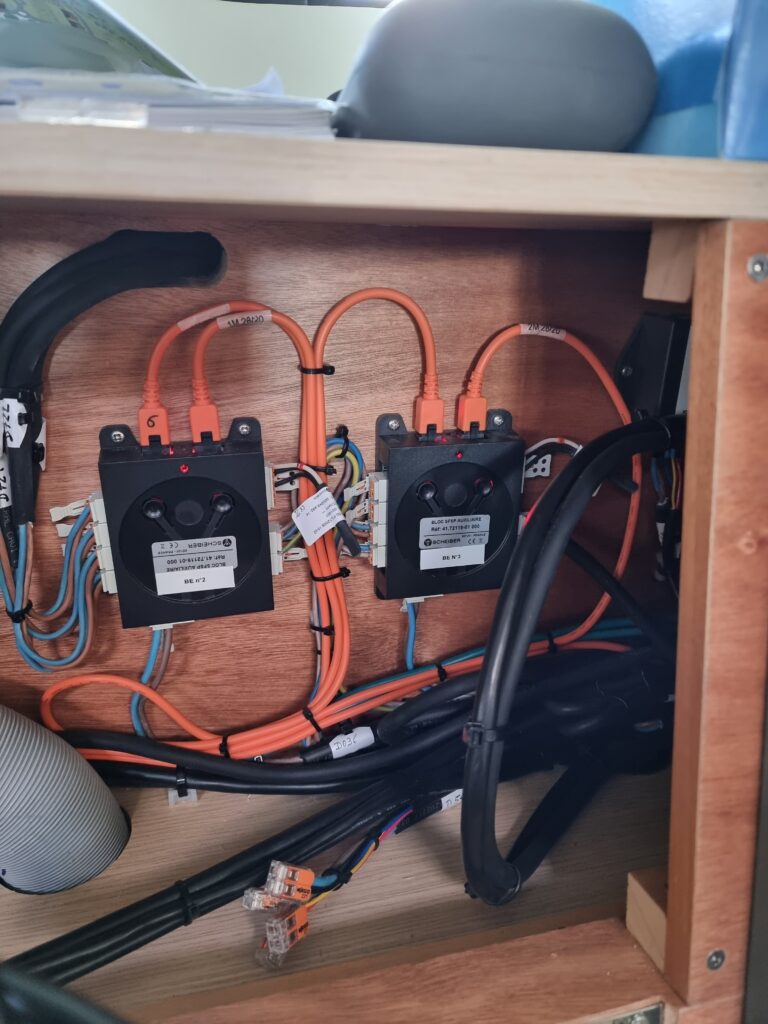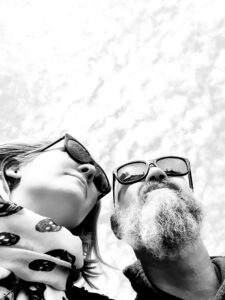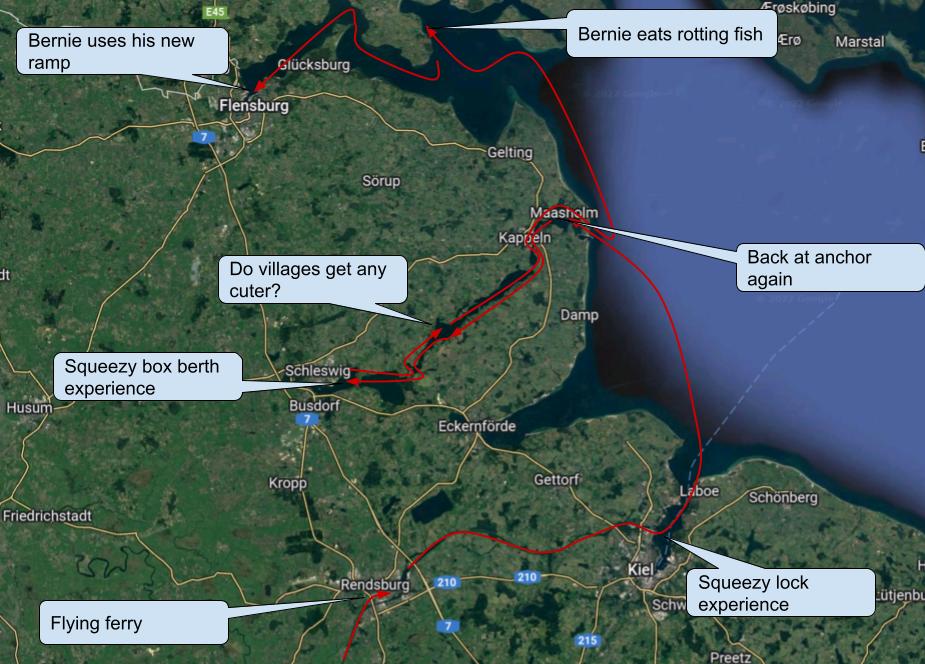
The Kiel Canal is the shortcut through Germany to the Baltic, avoiding a long loop around the north end of Denmark. Its used by large cargo ships, cruise ships and quite a few pleasure craft. The largest ships need to pass each other at special passing points with traffic lights. Smaller craft like us just keep out of the way so we don’t get crushed.
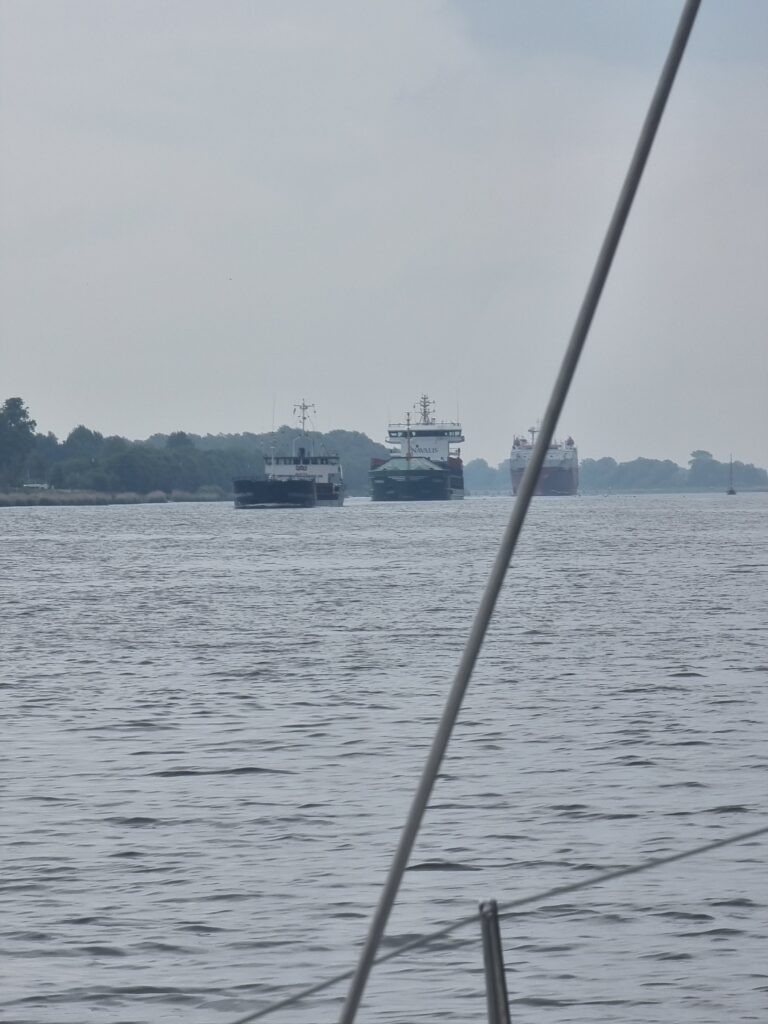
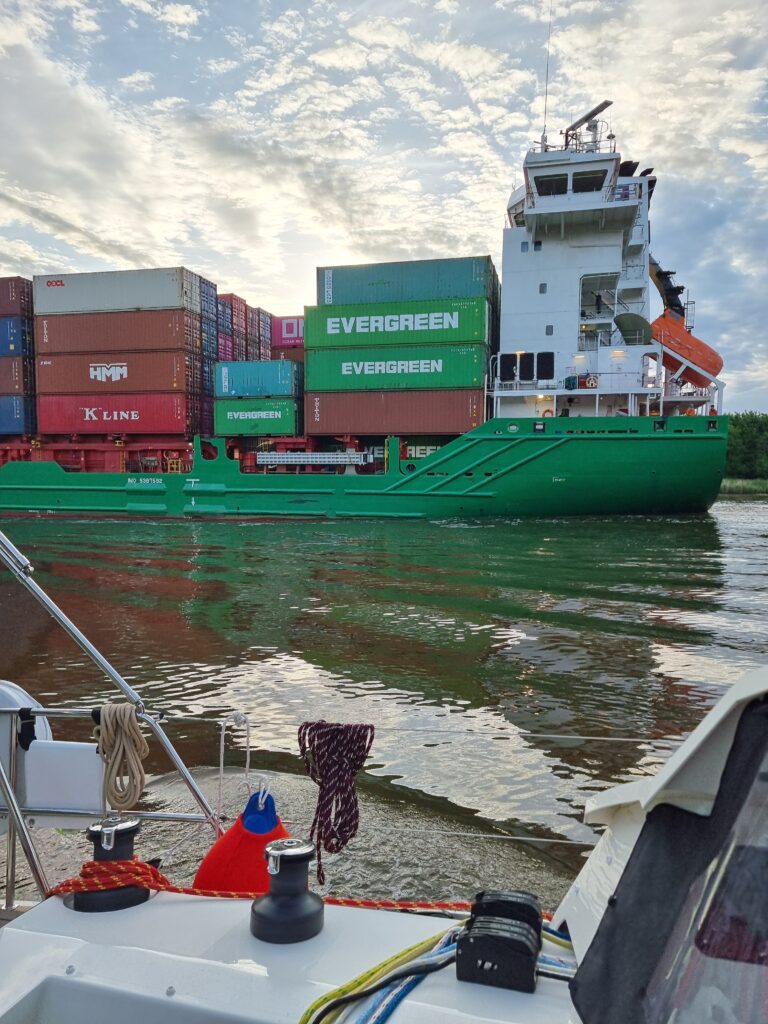
After locking in to the canal after our rather bumpy passage (you may remember from last blog) we headed for the Brunsbuttel marina next to the lock, but quickly assessed it was too full for our liking. The next stopping point was a bunch of poles in a bay that we could just reach by the 9:30pm small boat curfew. We arrived just in time to find a deserted bay and entertained a couple on the beach by trying to secure ourselves to four of the posts for the night.
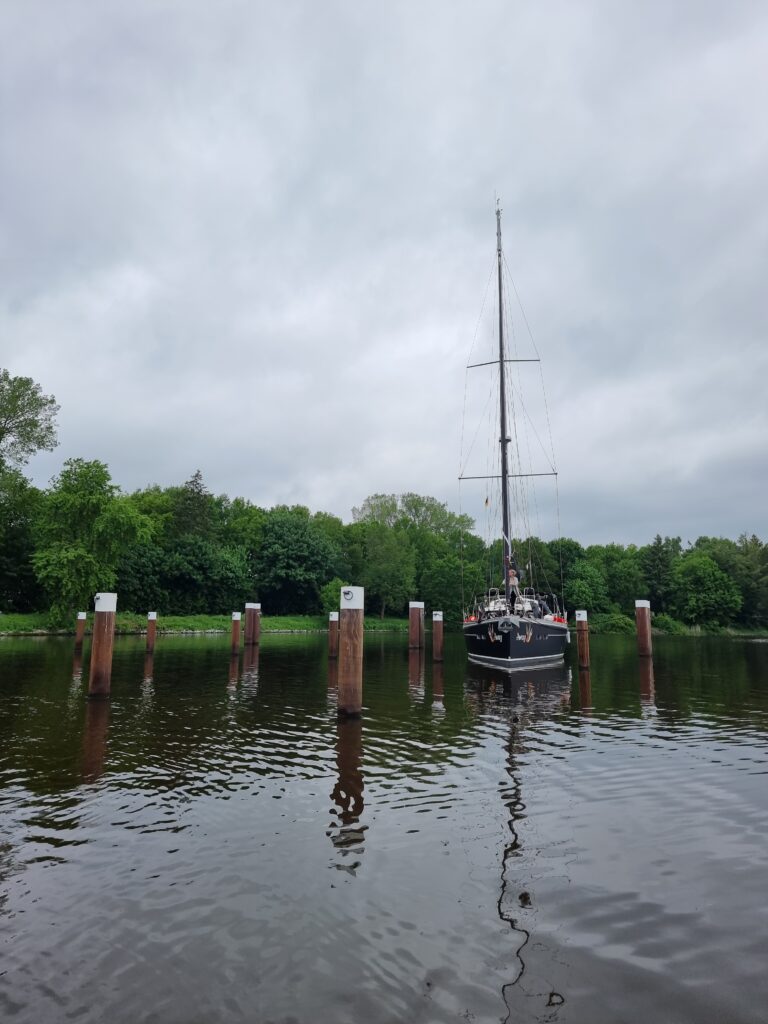
The bay was so peaceful most of the time, and then the occasional cruise liner or cargo ship passed a few meters away. The next day we pushed on to Rendsberg about two thirds along the canal. The famous suspended Rendsberg ferry was operating as we passed under the bridge.
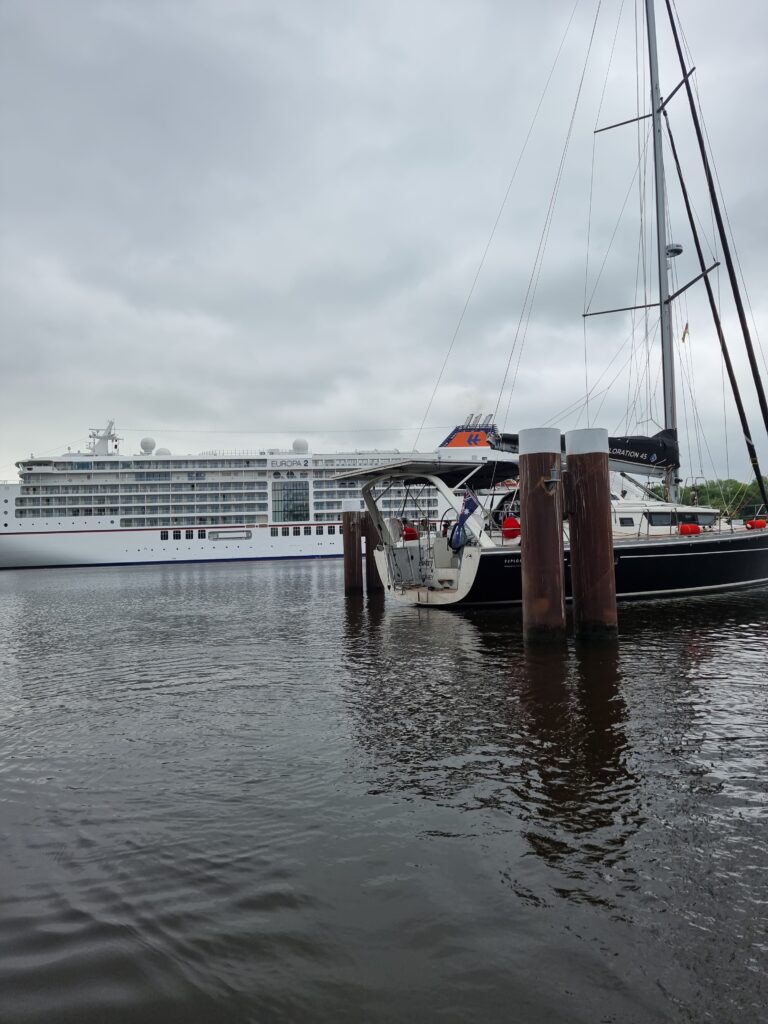
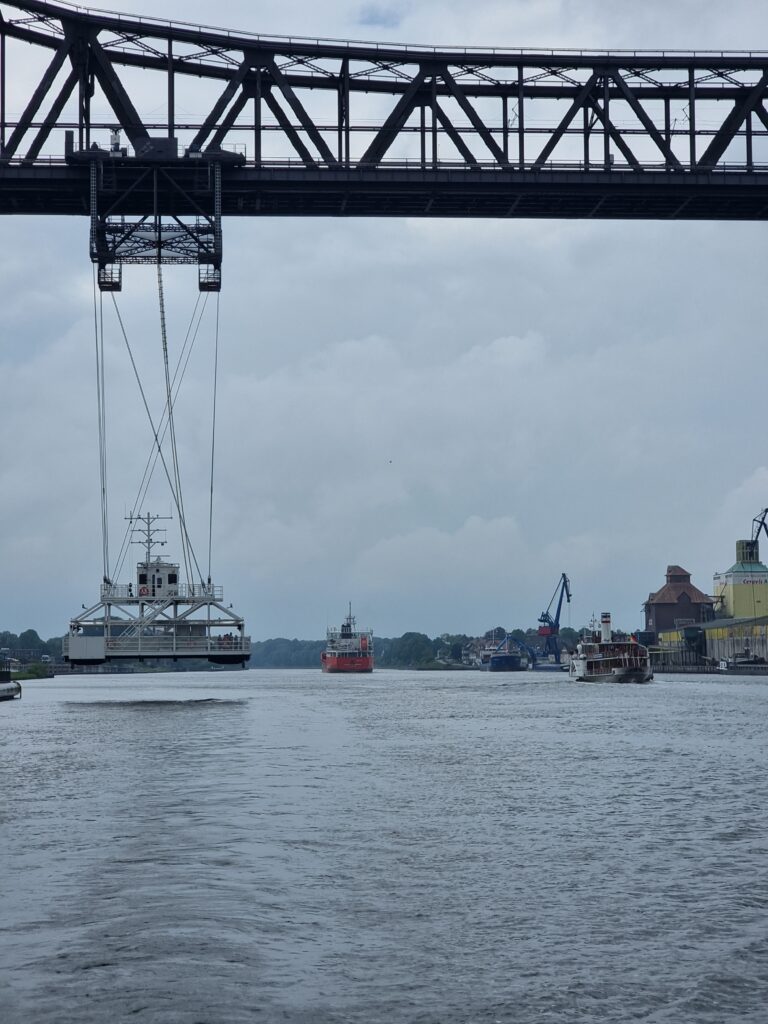
Rendsberg became home for a few days as strong winds dissuaded us from moving on. We met several other cruisers who were heading for the Baltic and also waiting for better weather.
As soon as the weather improved everyone headed for the Baltic. By the time we got to Kiel we were sharing the lock with about 25 other yachts that squeezed in along side a rather large cargo ship. In the canal its comforting to know that the cargo ships will likely go aground before they reach us in the shallows. In the lock we look at the size of the ships mooring lines and congratulated ourselves on not attempting this part of the trip in 30 knots of wind.
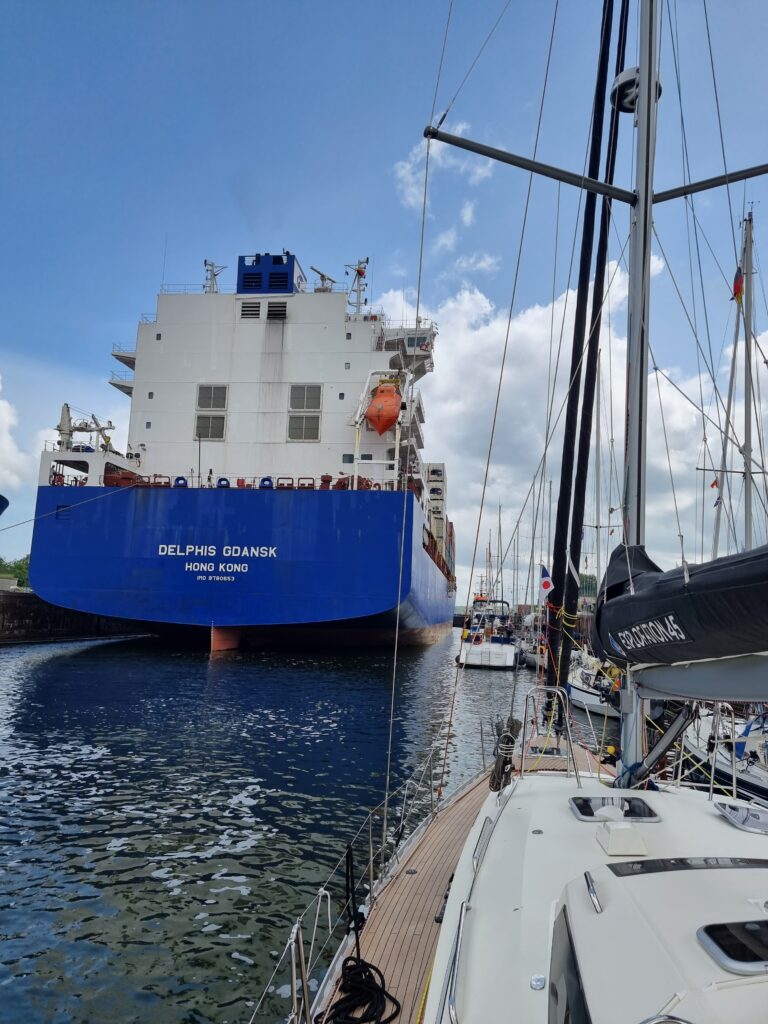
Outside the lock hundreds of yachts, old sailing ships, motor boats and dinghies were enjoying the weekend sun and light winds. The container ships sounded their horns in case the yachts failed to notice a 250m long 80m high ship heading towards them at high speed.
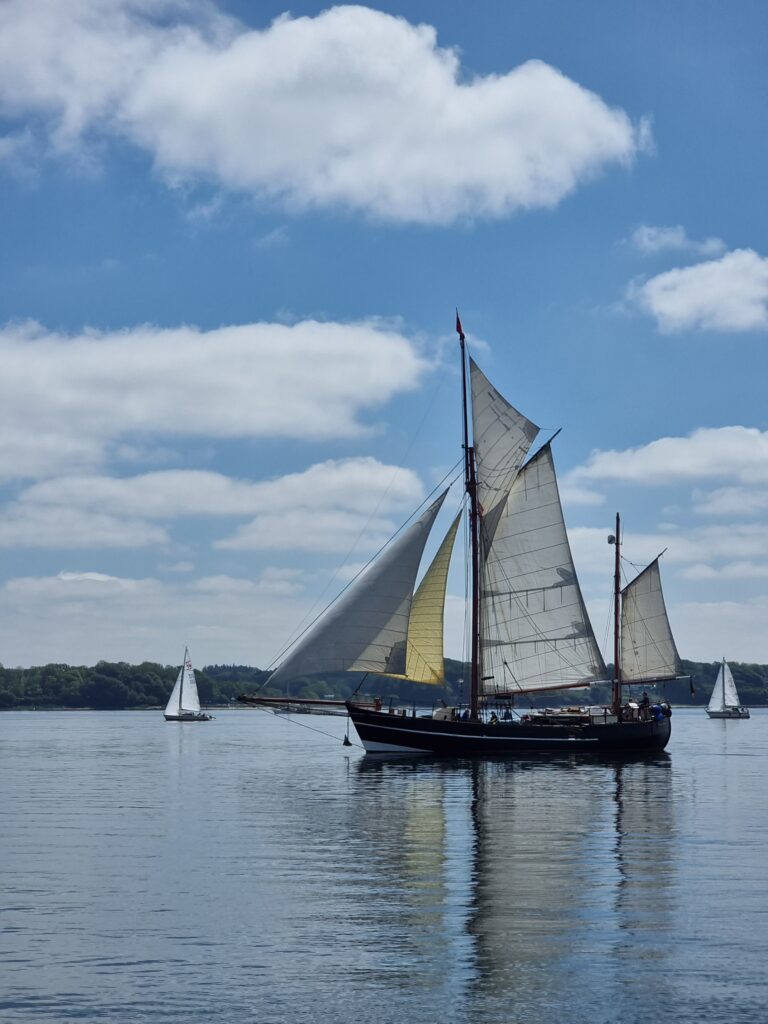
Our destination was the Schlei Fjord further north towards the Danish border. The light winds eventually picked up and we were able to sail the final section around the military firing zone and into the Fjord. Friends from Rendsberg were already in the anchorage and pointed out the best dog walking places. It was great to be on anchor again and not crammed into a marina.
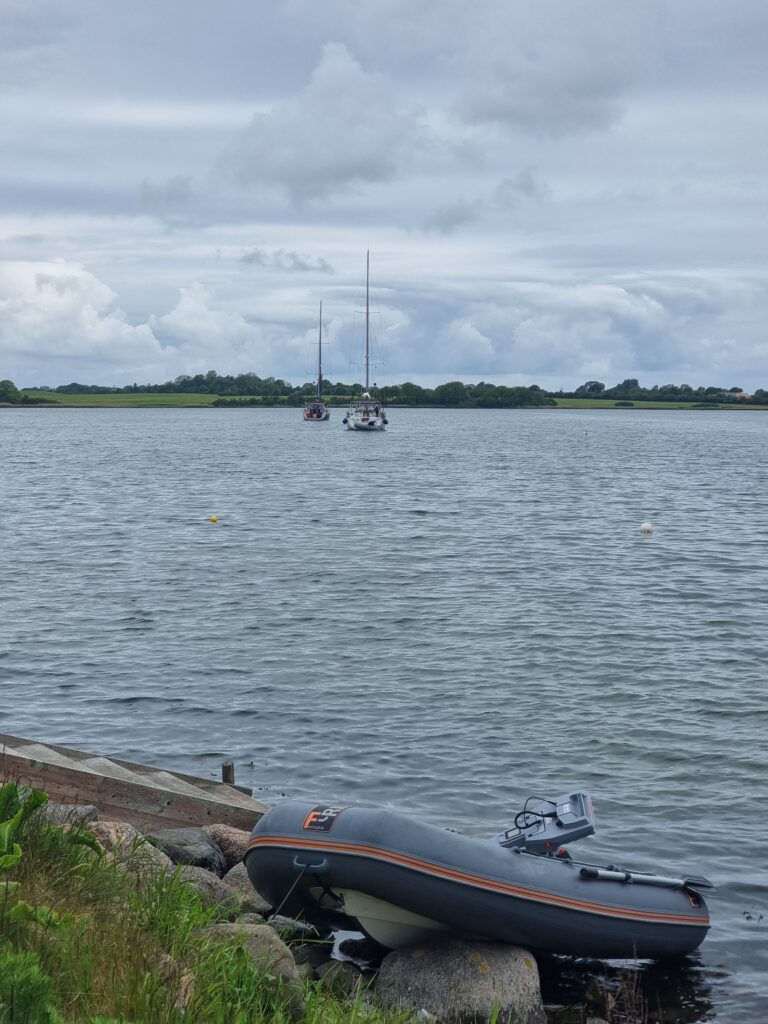
The Schlei Fjord was not as dramatic as fjords on the Norwegian coast, but the low rolling hills and thatched cottage villages made a charming landscape. We anchored off a tiny village called Sieseby with a massive church and a Michelin star restaurant. Deer grazed a few meters away at dawn and dusk.
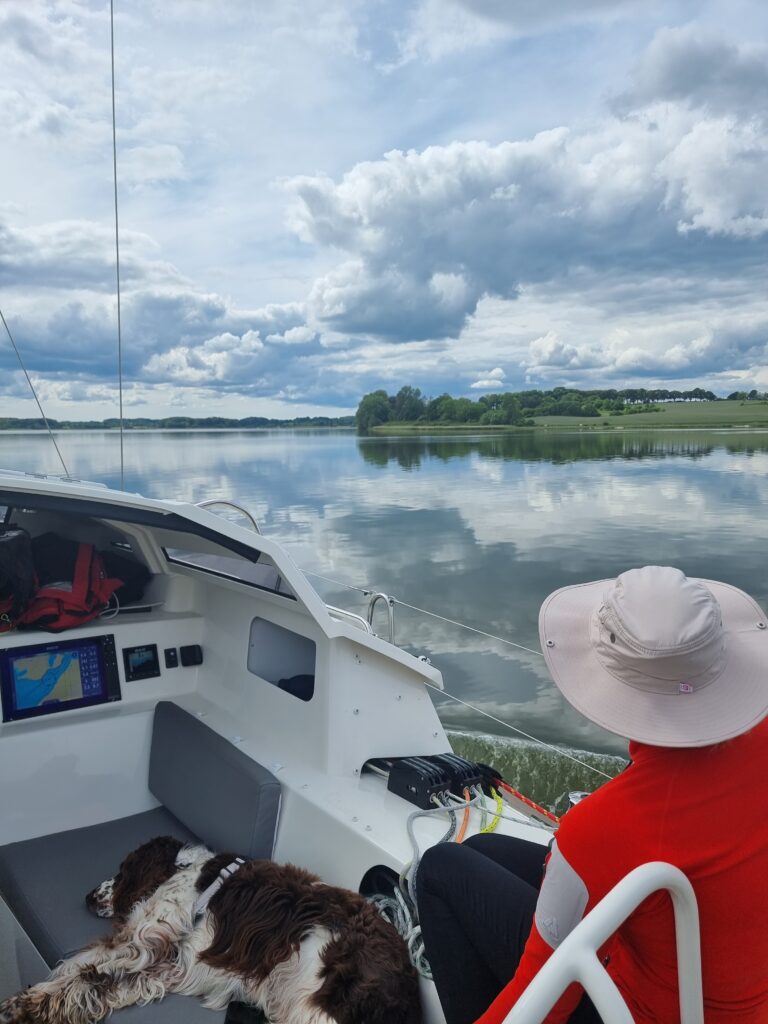
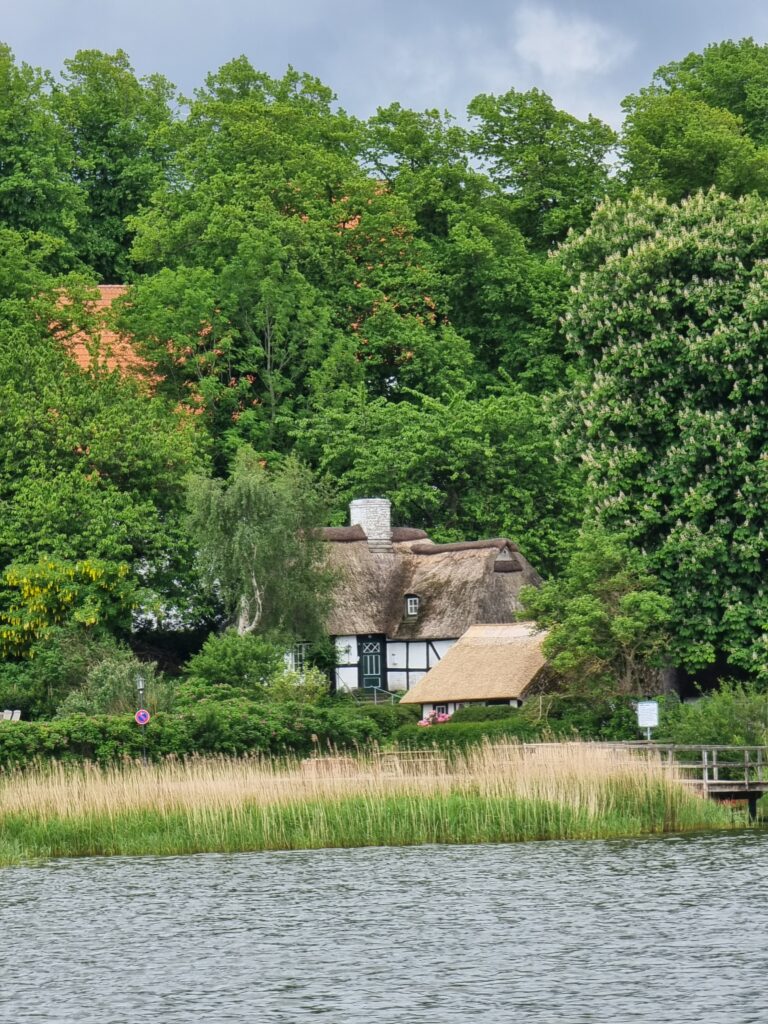
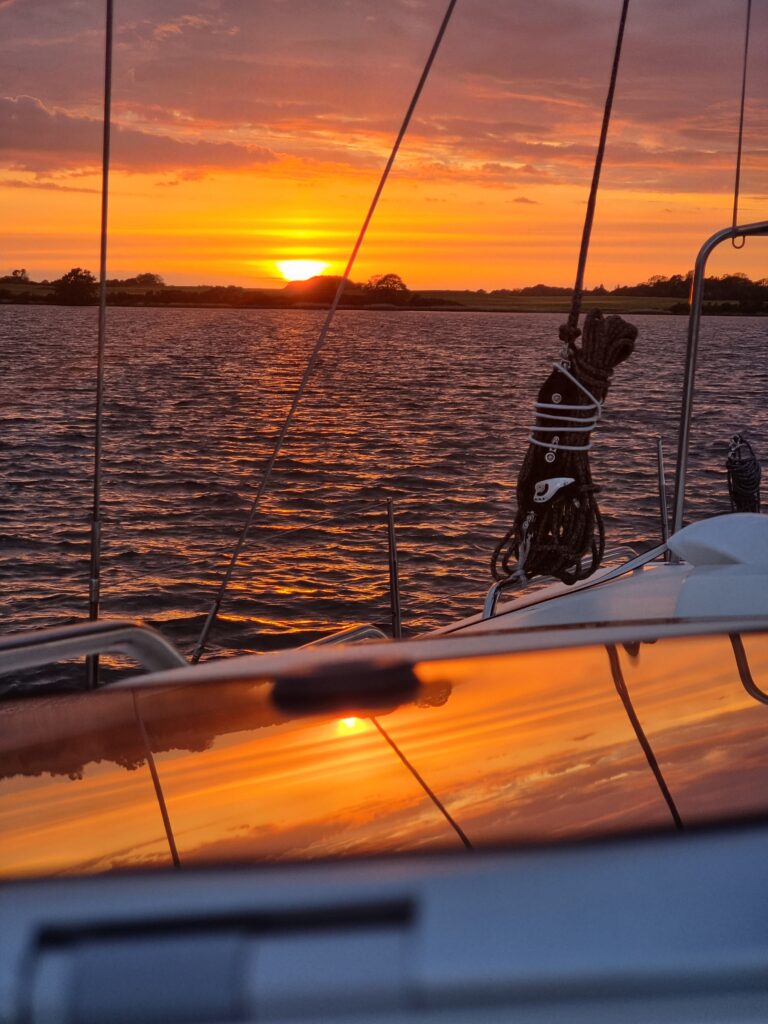
At the end of the fjord is Schleswig where we dazzled the locals by maneuvering the mighty Away into a tiny box berth. Every other boat in the Baltic is 38 feet long (give or take) and Away at 45 feet (plus some middle age overhangs), needs to be persuaded into most of the berths. The ‘box berths’ feature two poles to tie the stern onto and the bow ties to the pontoon. Away sometimes needs to ‘stretch’ the poles a little to fit in. These berths are almost universal in the Baltic and have been designed to provide boaters with maximum comedy when new arrivals appear, especially if there is a cross wind. The bow is too high for Bernie to jump on and off, so he now has a foldable ramp that he uses to wobble precariously onto the dock.

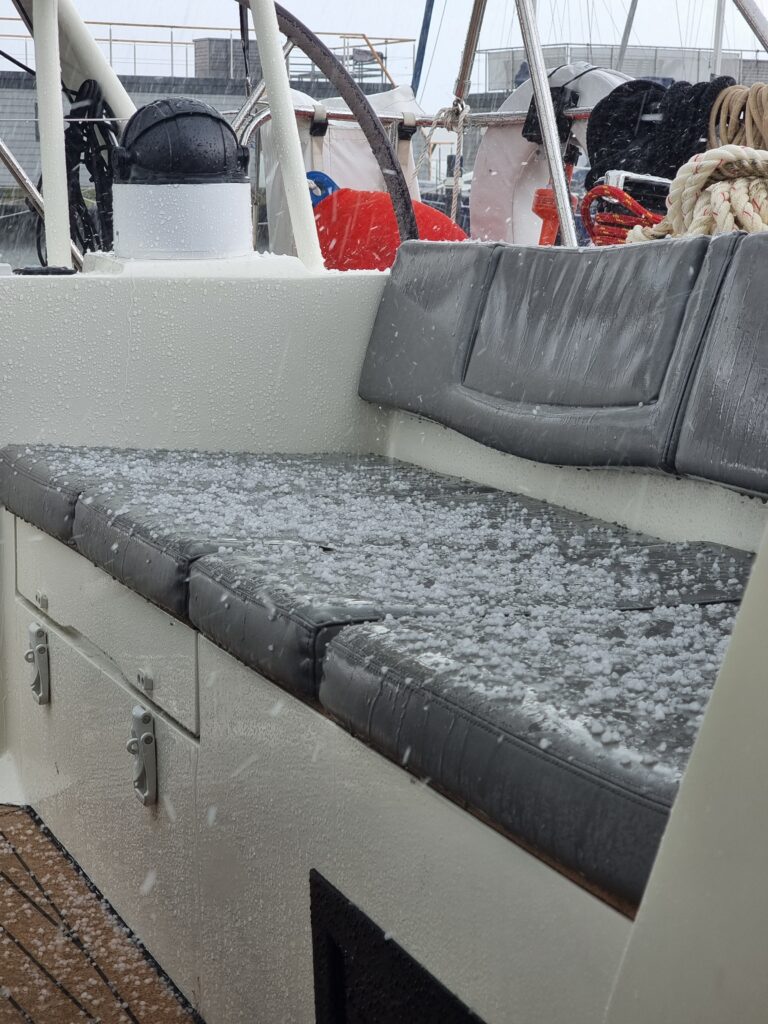
We looked around the old fishing village area of Schleswig and circumnavigated the obscenely large church before heading back to our favourite anchorage back along the fjord. The four openings a day bridge caused a moment of excitement when oncoming vessels didn’t see the red light obscured by the new bridge construction and started to head through the narrow opening towards us.
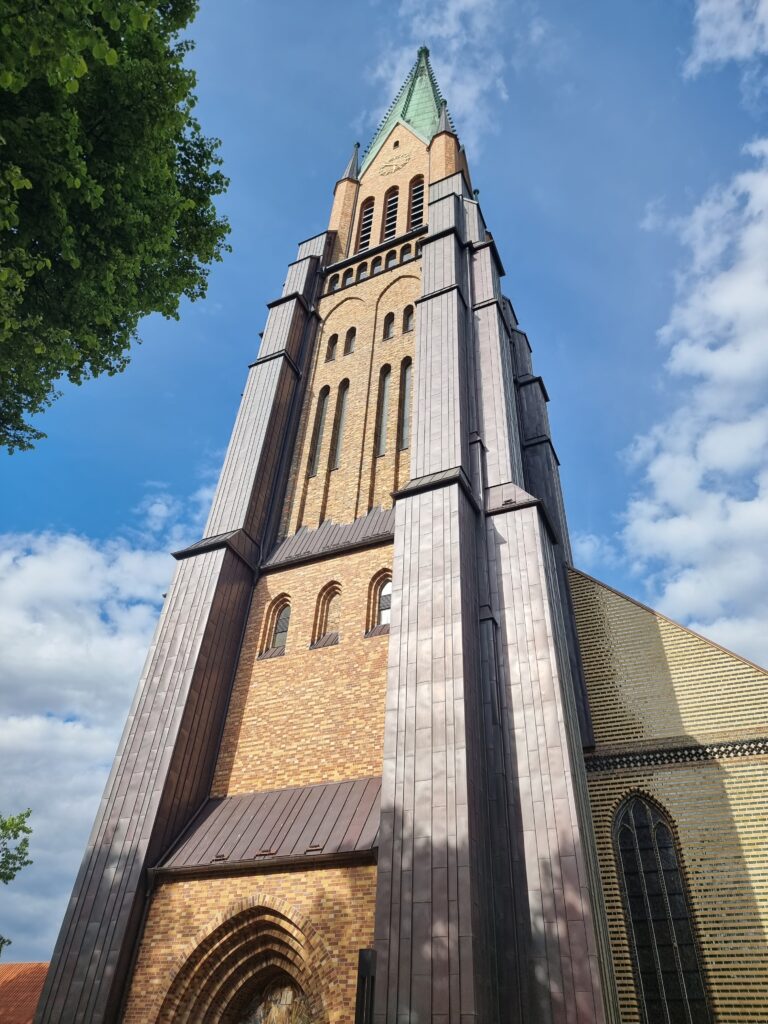
The anchorage became crowded this time when a small motor cruiser anchored a few hundred meters away. We didn’t go ashore as favourable winds the following day meant an early start. The wind blew us out of the fjord in the company of other yachts and large traditional sailing vessels. As we turned north our expected comfortable beam reach was fast becoming a more uncomfortable close haul. When the boat heels, Bernie gets confused whether to lie in the sun, or on the low side of the boat so he doesn’t slide off and generally decides its best to find Fi and sit on her.
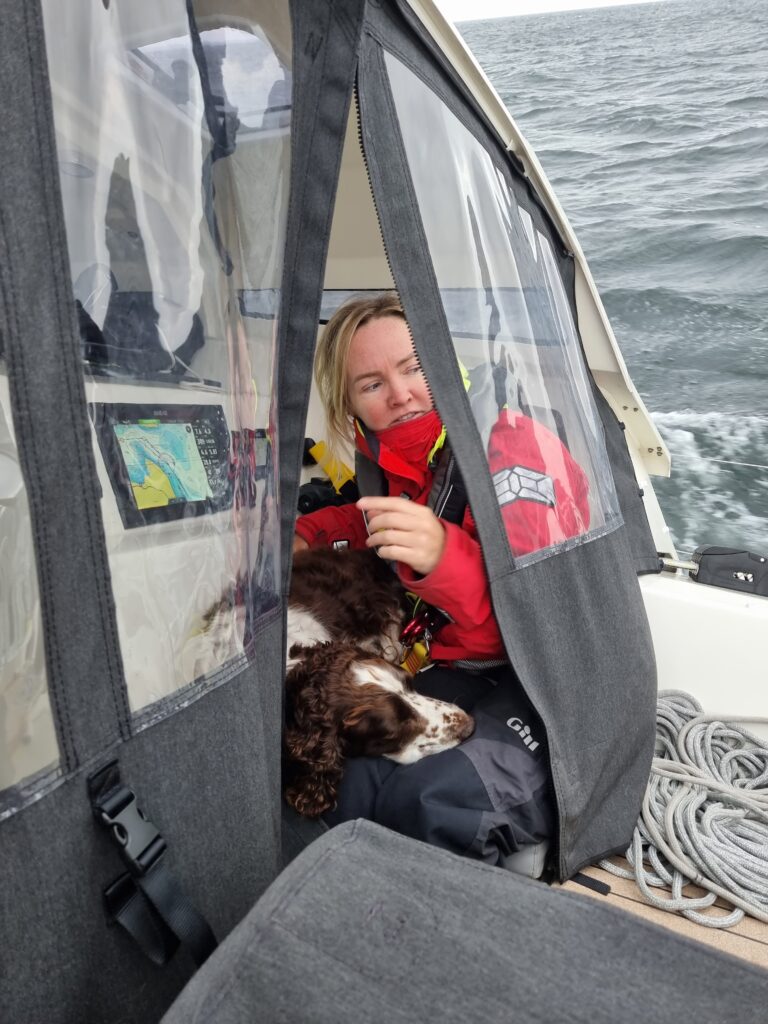
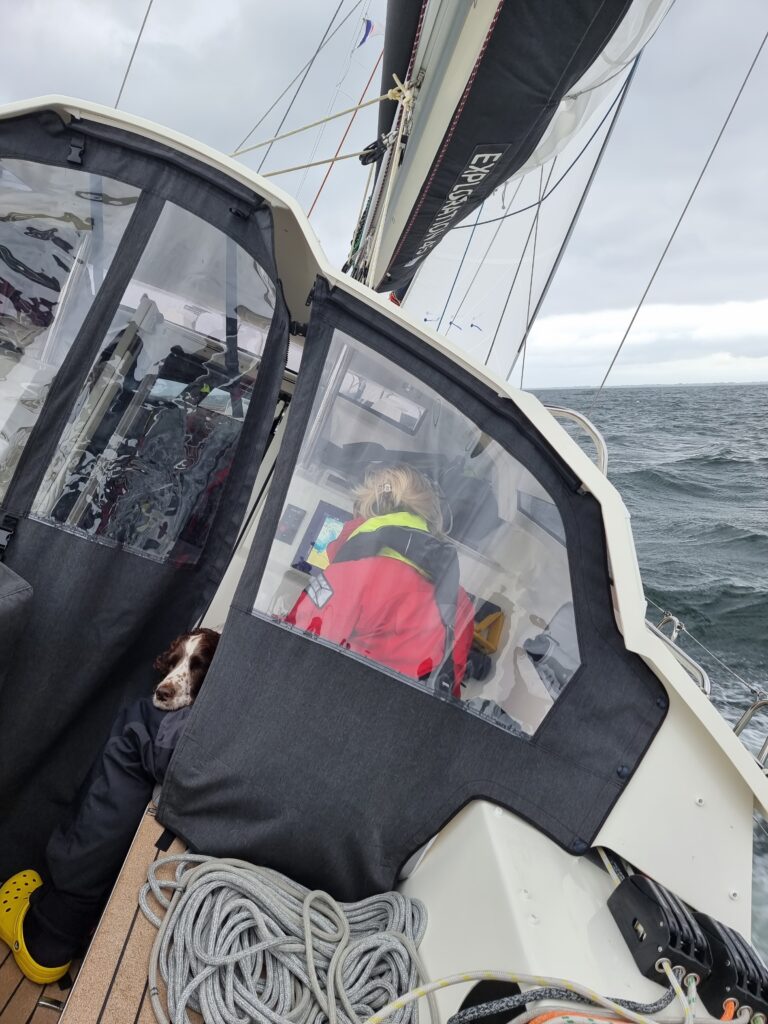
Entering Flensburg Fjord the winds were gusting towards 30 and we decided to anchor out of the wind rather that fight our way to Fensburg and attempt an entertaining berthing maneuver. In this area of the world its simply a matter of finding nice bit of coast out of the wind, wait until the depth sounder shows 2.5 m and drop anchor. We chose a spot next to some protective cliffs with a doggy beach and settled in for a days rest.
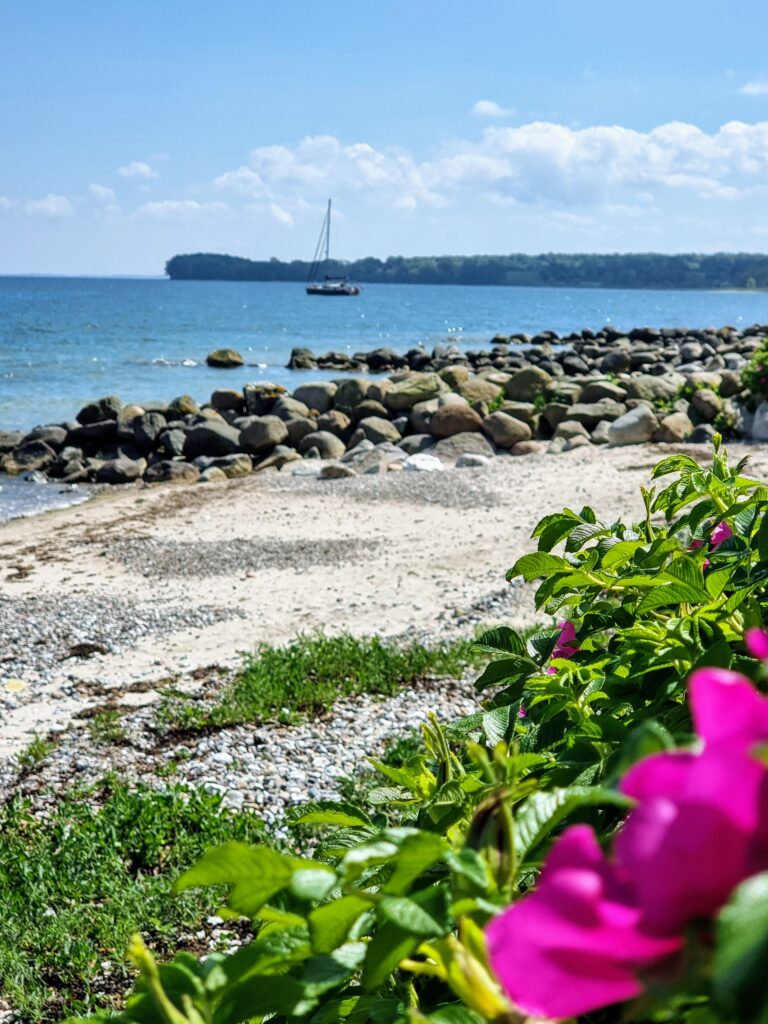
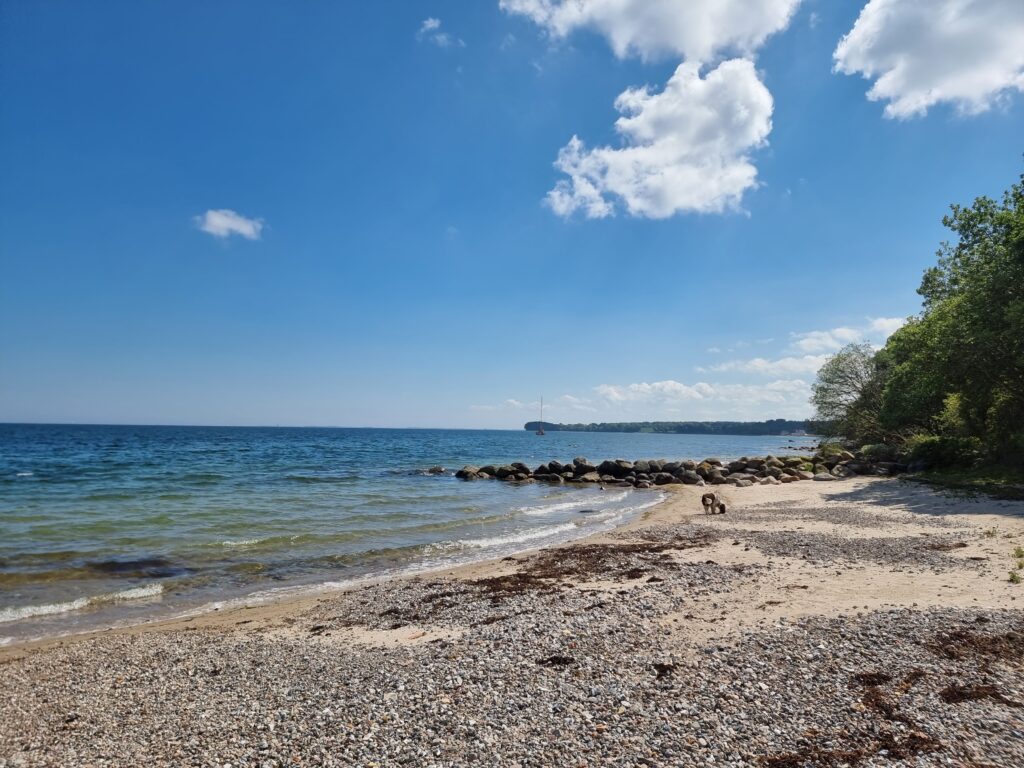
Bernie was nominated to go for a swim as the rest of us found the water a little too numbing to be enticed in. The rule in yachting is always to anchor next to the other boat as that must be where the anchorage is. Even if there is 200km of perfectly sheltered safe anchorage, the rule states that you must anchor next to the only yacht in the anchorage. On our second night there were a steady procession of boats leaving Flensburg for the weekend and it wasn’t long before another boat recognised we were the anchorage marker and parked close by.
The next day the winds had died and we motored into Flensburg, our last stop in Germany. Flensburg had been missed when Europe was bombed in the war and featured an attractive old town. We chose a marina further from the center and closer to the supermarket and the Pentecostal heavy rock concert. Fully restocked and with an superfluous appreciation for christian rock we slipped quietly out of Flensburg into a dark drizzely Monday morning and headed for Denmark.
